-
Plant Name & Description
Botantical Name
-
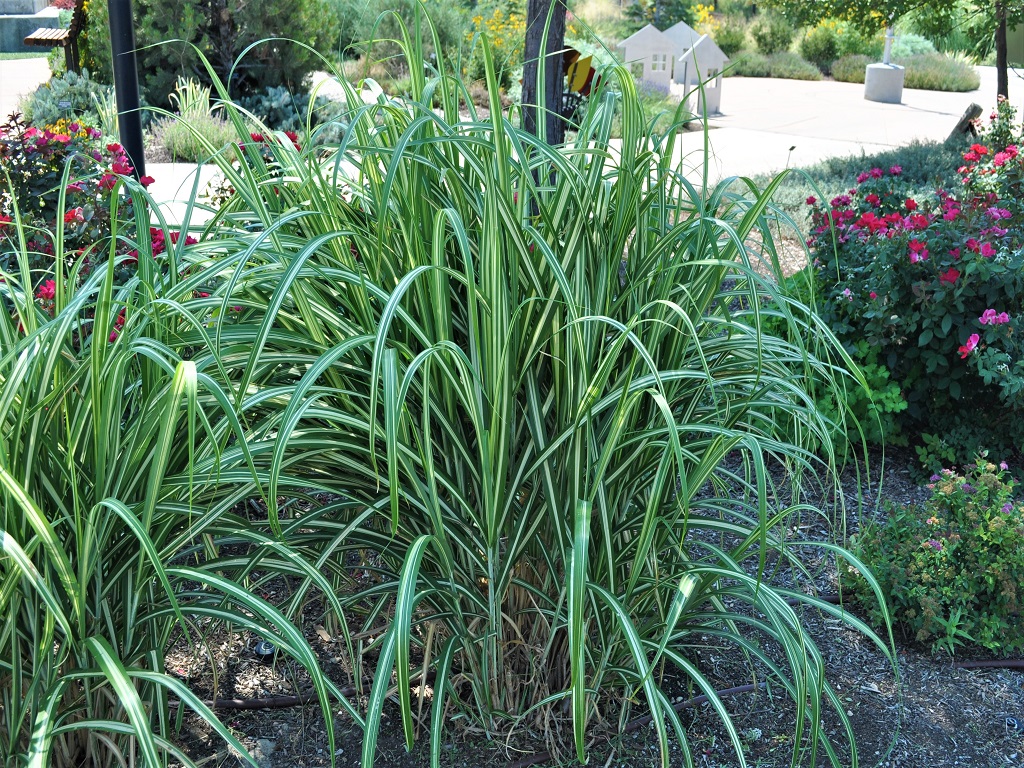
Cabaret Japanese Silver Grass Miscanthus sinensis 'Cabaret'
Japanese silver grass is a clump-forming warm season grass that typically grows in the lowlands and lower alpine areas in Japan, Korea and China. This grass features a dense clump of upward-arching stems and leaves which give it a rounded, fountain-like appearance. Leaves are quite with showy rich green broad blades and conspicuous milky-white stripes. Copper-colored plumes appear above the foliage in early fall, age to a cream color on stems that blush pink as they mature. Can be a focal point for it's shape and variegated leaves.
-

Calamint Calamintha nepeta
An unfussy European perennial with airy stems of small green leaves and long-blooming tiny white flowers. The minty fragrance repels deer and attracts pollinators. Tends to reseed and naturalize.
-
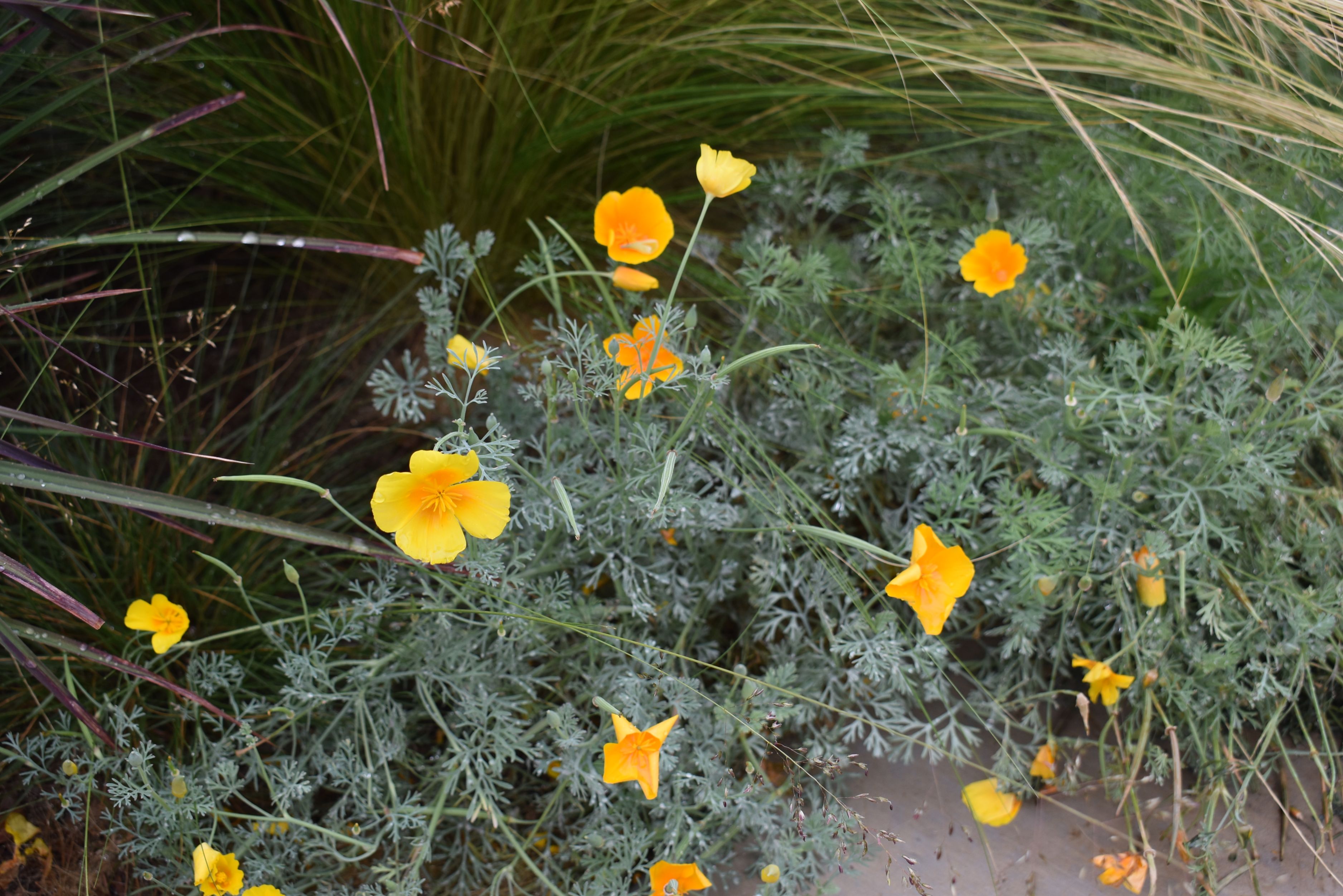
California Poppy Eschscholzia californica
This California state flower is known for covering hillsides and large open spaces with vivid orange, wispy, dainty cup-shaped blossoms that sit on tall, slender stems. Underneath the flowers is a carpet of loosely growing stems covered in fern-like blue-green foliage. Once the flowers are spent, the foliage will take on a straw-brown color. In our cooler climate it may act as a short-lived perennial. With that said, it happily seeds itself around, making it great for meandering through planting beds and adding bursts of color for many years to come.
-
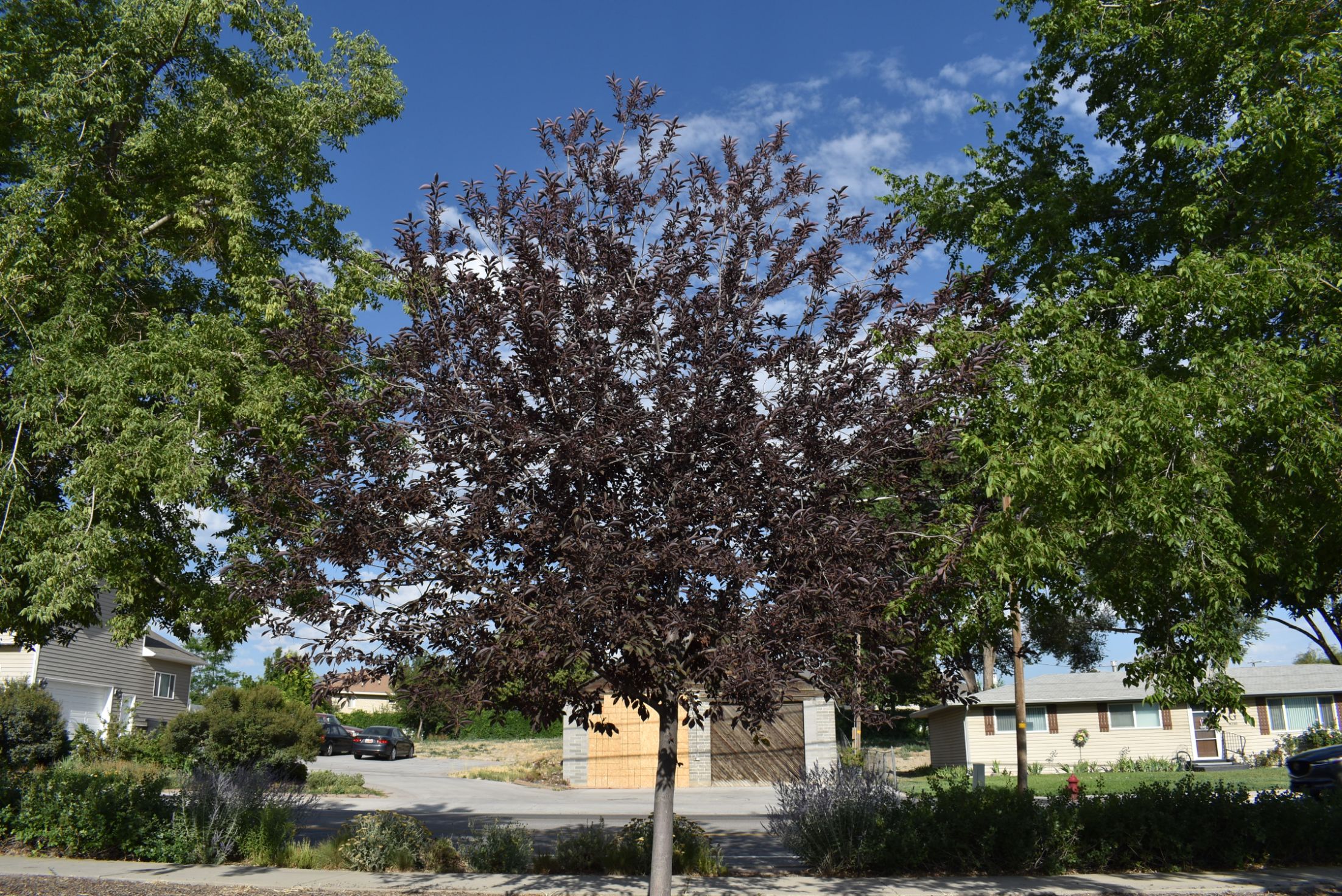
Canada Red Chokecherry Prunus virginiana 'Schubert'
Medium to small deciduous tree available in single or multi-stemmed forms. Leaves emerge green and mature to dark purple by early summer. Clusters of pure white flowers bloom in spring eventually becoming small, bright-red, astringent fruits that make excellent jellies and jams. Prefers to grow as a multi-stemmed tree and quickly grows suckers at the tree base. Tolerates a wide range of soils.
-
Canadale Gold Wintercreeper Euonymus fortunei 'Canadale Gold'
Mounding, broad-leaf evergreen shrub. Rounded leaves have dark-green centers with bright yellow to golden edges. Makes an excellent hedge or border plant. Annual pruning is required to maintain a good shape.
-
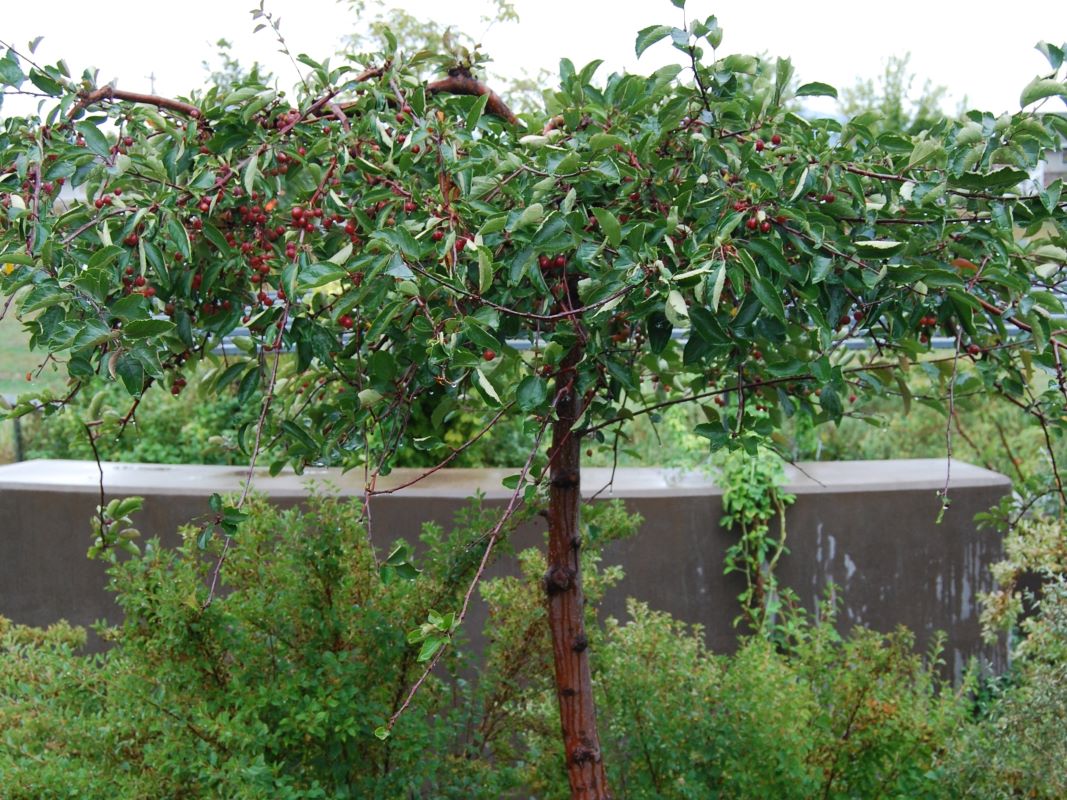
Candied Apple Crabapple Malus 'Weepcanzam'
Weeping deciduous tree. Profuse bright-pink flowers bloom in spring followed by bright red fruit that persists on the tree until December. Leaves emerge with reddish tints and turn green in the summer. This variety is resistant to many diseases.
-
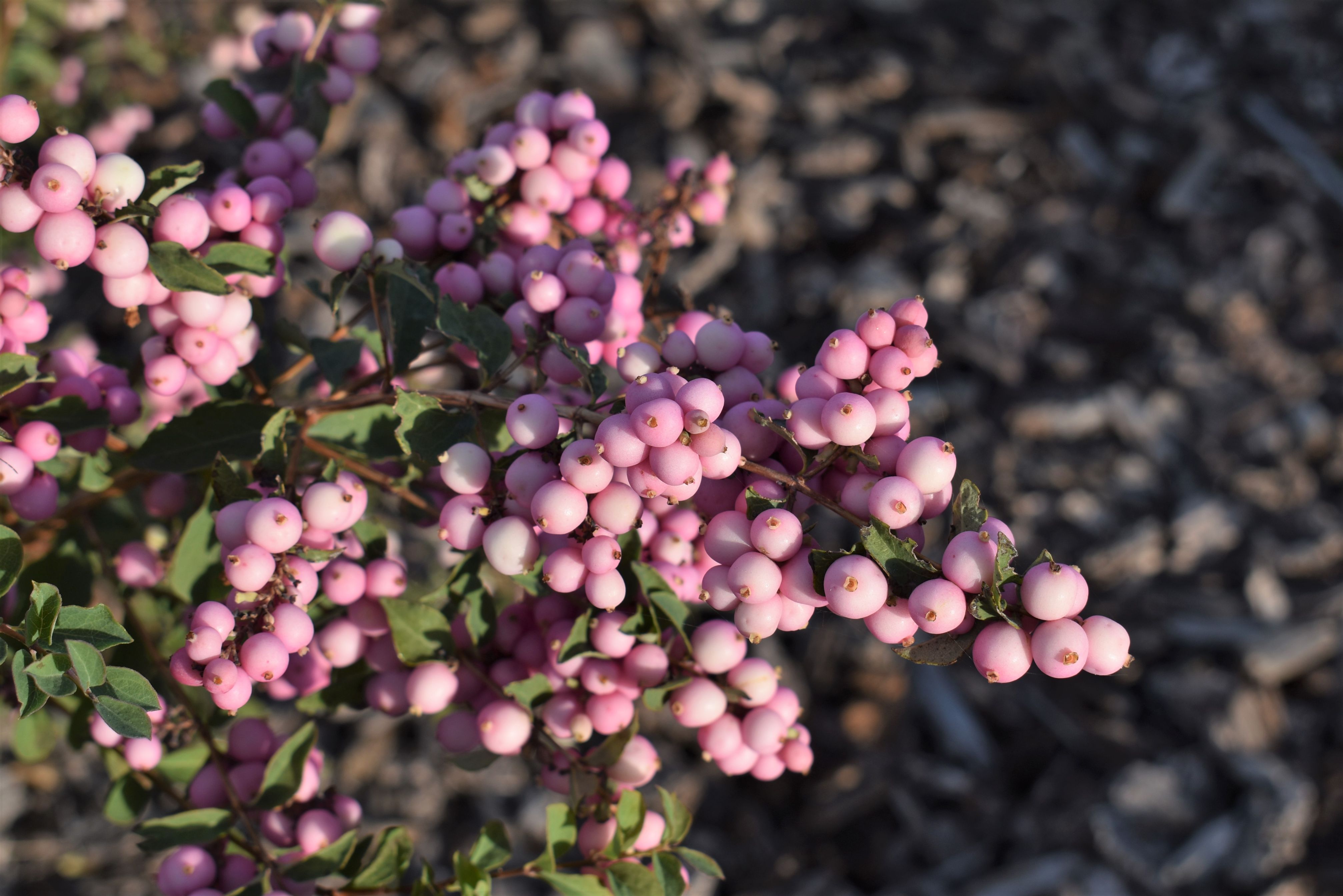
Candy Coralberry Symphoricarpos x doorenbosii 'Kolmcan'
A shrub that will provide color and interest during the cold winters. Summertime will bring dainty, pink flowers that eventually ripen into distinctive pearl-like berries. When many other flowers and leaves have faded in winter, the Candy Coralberry shows off with its long arching stems covered in light pink to pink decorative berries.
-
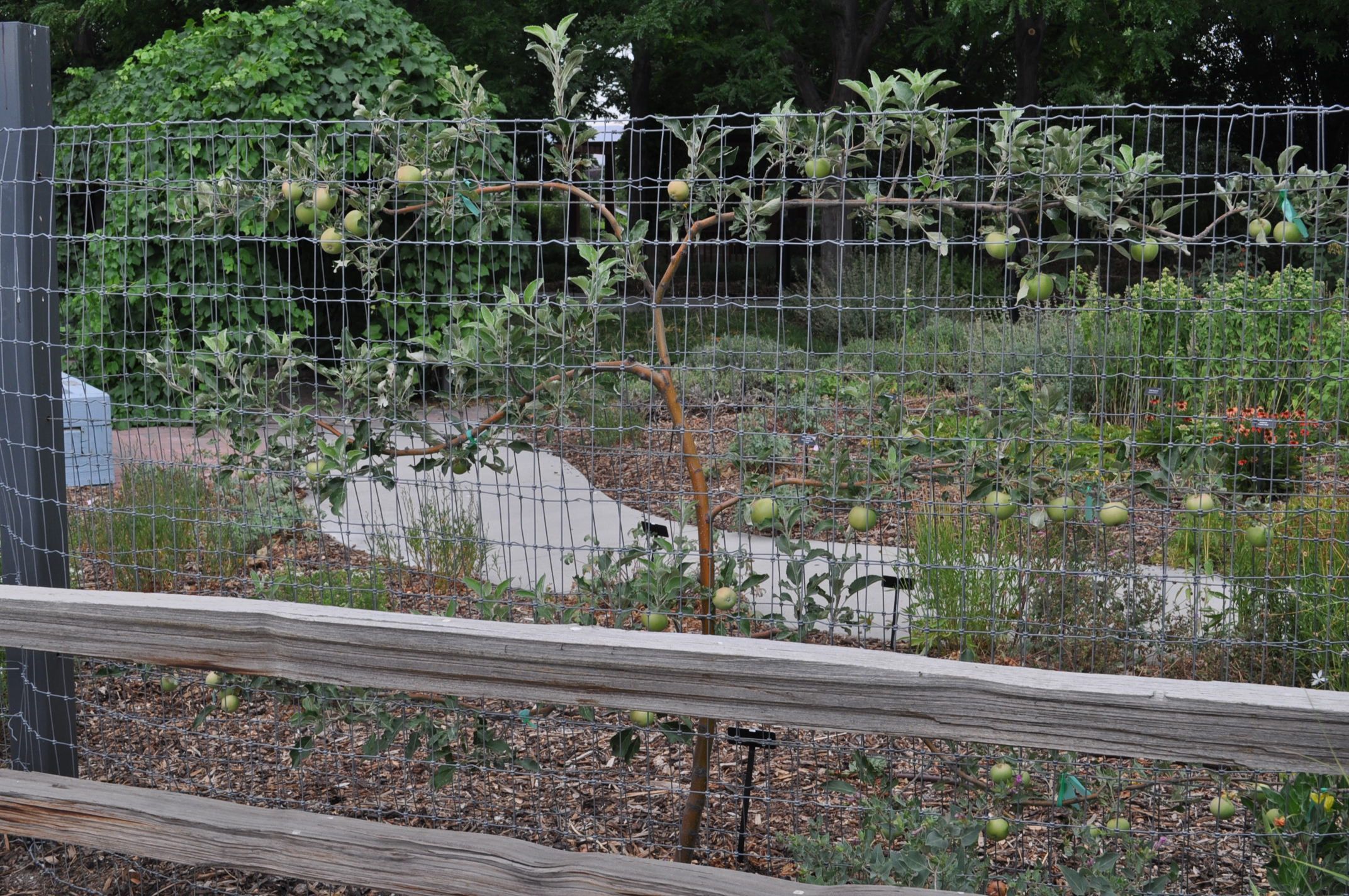
Candy Crisp Apple Malus domestica 'Candy Crisp'
A Stark Brother’s exclusive, this apple tree will produce large, golden yellow, sweet tasting apples. This vigorous, upright tree is cold hardy and can produce a lot of fruit each year. Best pollinators include the Grand Gala apple and Cortland apple. The fruit ripens in October and can last up to 4 months in storage.
-

Candy Stripes Creeping Phlox Phlox subulata 'Candy Stripes'
Perennial groundcover. Spreads low to the ground and creates a blooming carpet. Flowers are white with pink stripes down the center of each petal. Evergreen foliage grows nice on slopes, in rocks, and as a border.
-

Candytuft Iberis taurica
A diminutive rock garden plant. It makes a small mound of dark green foliage with white blooms, at time tinged with lavender purple.
-

Caramba Shrub Rose Rosa 'Tanamabar'
A long-blooming shrub rose that works great as a groundcover. Orange-red flowers begin in early summer and bloom throughout the season. This rose is highly disease and pest resistant.
-
Caramel Coral Bells Heuchera 'Caramel'
This perennial forms clumps of lobed, semi-evergreen leaves that mature to a golden-yellow with apricot highlights. Small pink flowers bloom in late-spring to early-summer on tall, airy stems. It prefers organic soils with moderate amounts of moisture. Too much drought and heat can cause the foliage to decline through the summer.
-
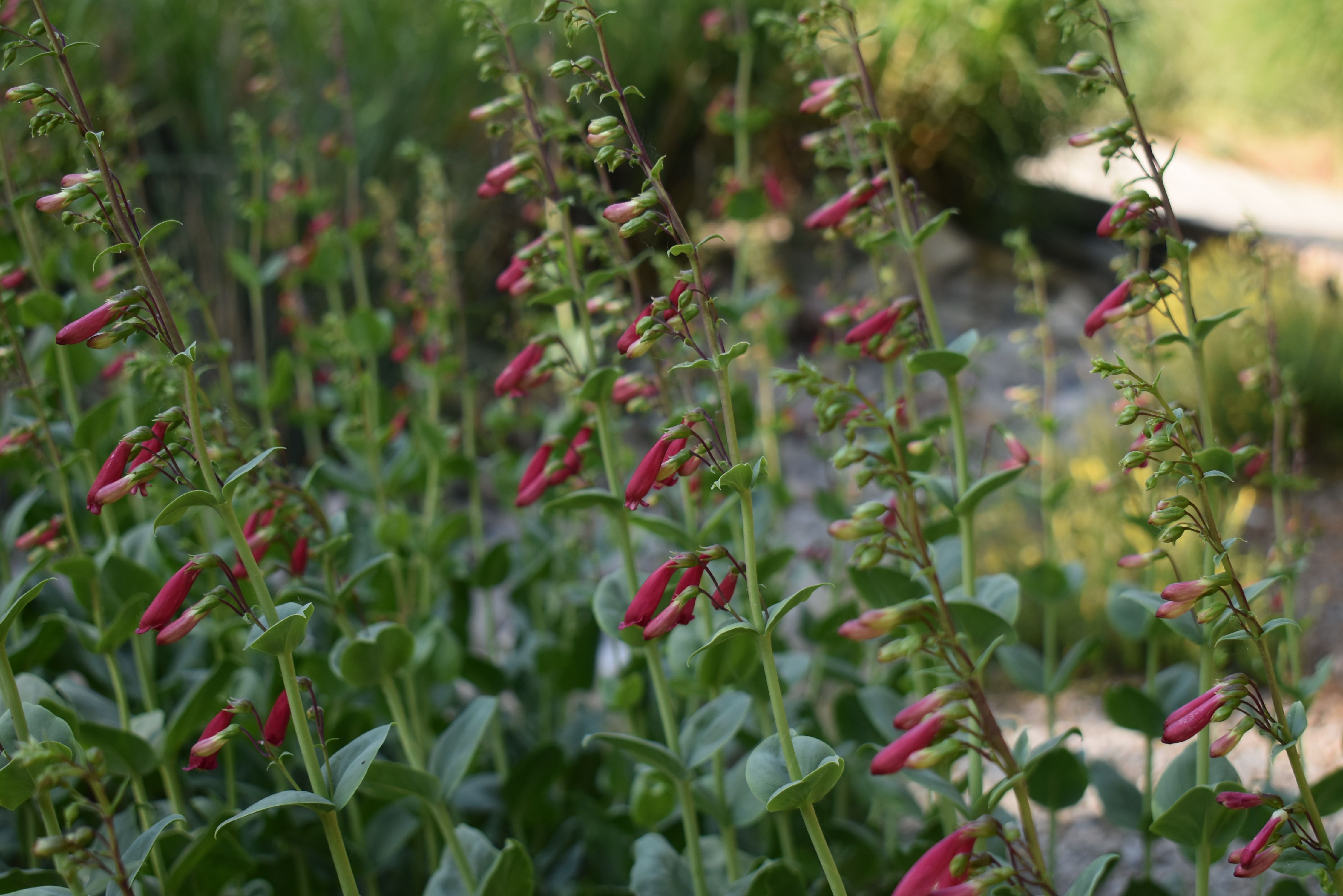
Cardinal Penstemon Penstemon cardinalis
Herbaceous perennial with upright stems native to Texas and New Mexico. Lance-shaped green leaves are well-adapted to its native habitat. Dark red flowers grow on upright stems throughout the summer. Grows naturally in rocky and hot sites. Requires well-drained soil. Seldom used but is available for residential use.
-

Cardinal Red Twig Dogwood Cornus sericea 'Cardinal'
Multi-stemmed, spreading deciduous shrub with showy bright red stems that are very attractive during the winter. Bright green leaves turn pretty shades of red and purple. White to cream flowers bloom in spring turning to white berries that are preferred by birds. Prune out 20-30% of the oldest growth each spring to promote healthy new growth with brighter coloring. The species, Cornus sericea, is synonymous with C. stolonifera and is native to Utah.
-
Carnaby Clematis Clematis 'Carnaby'
The Carnaby Clematis a climbing vine. It is light pink with a darker stripe down the center of each petal which surround a dark pink tuft in the middle of each bloom. These flowers can range from 6-8 inches across and bloom twice a year, once in the late spring to early summer, then again in the late summer to early fall. This plant grows tall quickly. They grow best if their roots are cooler so cover the ground with other plants or mulch for best vine growth.
-

Carnival Limeade Coral Bells Heuchera 'Carnival Limeade'
Tight mounds of vibrant lime green foliage create beautiful contrast for the delicate sprays of tiny white flowers and other surrounding plants. The ruffled, semi-evergreen leaves have subtle silver and dark green accents that make each leaf unique.
-
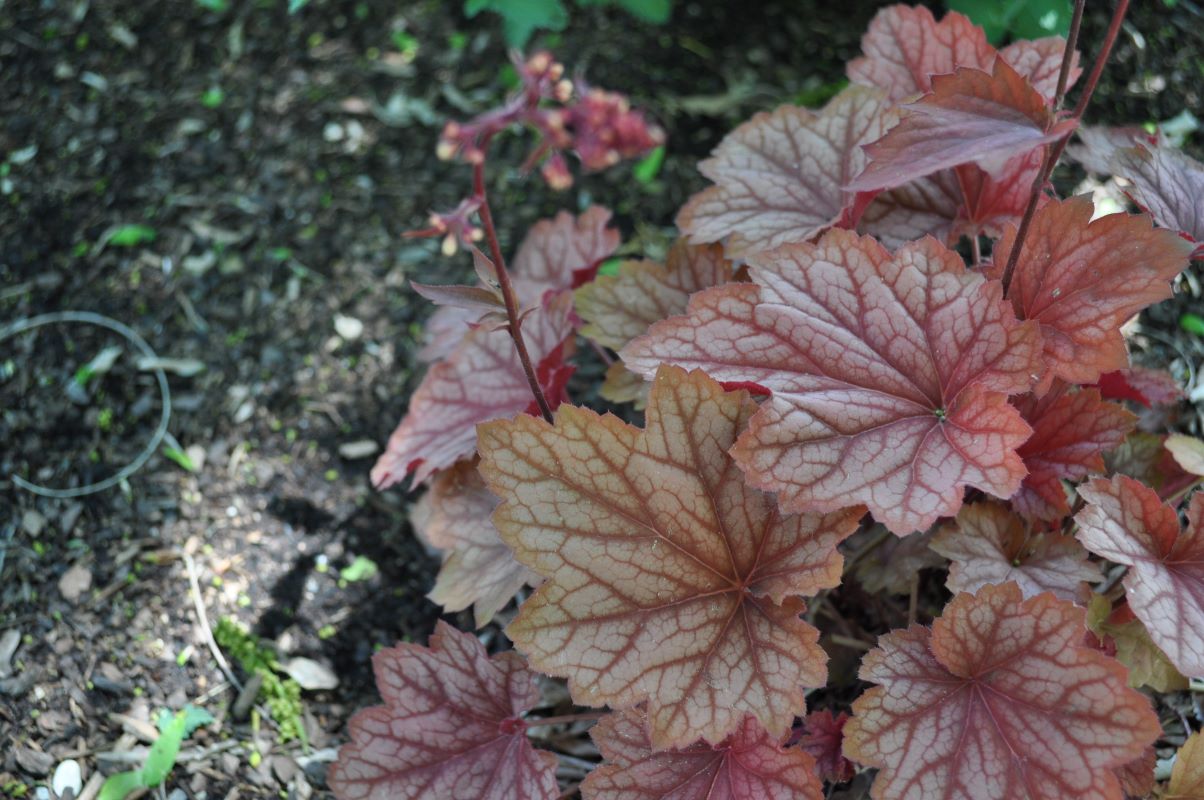
Carnival Watermelon Coral Bells Heuchera x villosa 'Carnival Watermelon'
This heat tolerant perennial grows mounds of lobed, purple, semi-evergreen leaves with silver markings. It prefers growing in the shade, but can handle some sun. Pink flowers bloom in the spring, but the leaves are its best feature.
-
Carol Mackie Daphne Daphne x burkwoodii 'Carol Mackie'
This small shrub sports variegated leaves, green with creamy yellow edges, that look great year-round. Clouds of pink, aromatic flowers bloom in the spring. It requires little maintenance once established. Do not attempt to move them once established as it hates to be transplanted.
-
Carolyn's Hope Penstemon Penstemon x mexicali 'Carolyn's Hope'
This hybrid penstemon blooms with pink tubular flowers with striped throats throughout the summer. Its leaves are narrow and glossy green and form an attractive mound. This was developed by Brian Core to honor his wife and in support of breast cancer research.
-
Carsten's Wintergold Mugo Pine Pinus mugo 'Carsten's Wintergold'
Medium to large rounded to spreading evergreen shrub. Spreading branches are scaly and gray. Golden-green needles are born in pairs and grow up to three inches long. Bears dark brown female cones. May require some pruning to shape, simply prune the new growth or "candles." Tolerant of many soil types. Needs well drained soils and fairly drought tolerant.
-
Cascade Purple Rock Cress Aubrieta 'Cascade Purple'
Semi-evergreen perennial ground cover. Forms an attractive dense mat of silvery-green foliage. Spring brings abundant brilliant purple flowers. Ideal choice for rock gardens. Prefers compost enriched soil and regular amounts of water.
-

Cat's Meow Catmint Nepeta faassenii 'Cat's Meow'
A tidy and uniform catmint sporting dense, long blooming spikes of beautiful purple-blue flowers. The aromatic gray-green leaves form round, spreading clumps that have less of a tendency to flop compared to other catmints. Drought tolerant, deer resistant, and wonderfully low maintenance.
-
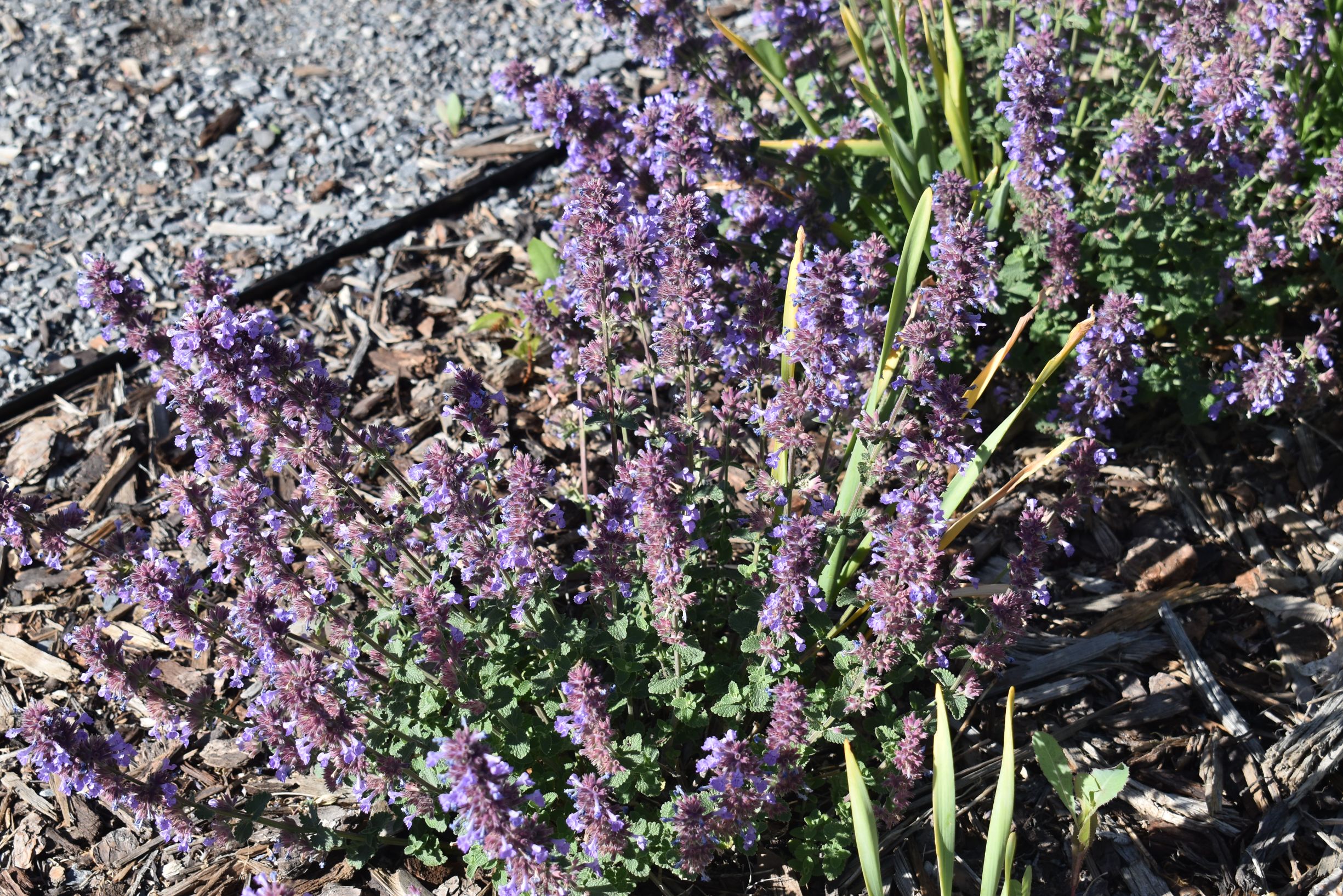
Cat's Pajamas Catmint Nepeta x faassenii 'Cat's Pajamas'
A small statured catmint that blooms earlier than other varieties in displays of indigo to purple blossoms. Upright stems are covered from soil level to the tip of the stalk in these dainty flowers. As the lowers begin to fade, rosy purple calyxes shine through and provide interest farther into the season. The seeds are sterile.
-

Catalpa Catalpa speciosa
Large deciduous tree occasionally growing to 90 feet. Large heart shaped leaves are light green. Abundant white flowers bloom in spring turning to elongated seed pods. Tolerant of dry and poor sites. Plant in areas with plenty of room to spread.
-

Celebrity Elite Daylily Hemerocallis 'Celebrity Elite'
Tall herbaceous perennial with red summer-blooming flowers with yellow throats. Foliage is long and drooping with grasslike blades about one inch wide. Easily grown in a wide range of conditions. As suggested by the name, flowers last one day but are produced over a long period of time. Divide every three to five years to maintain vigor.
-
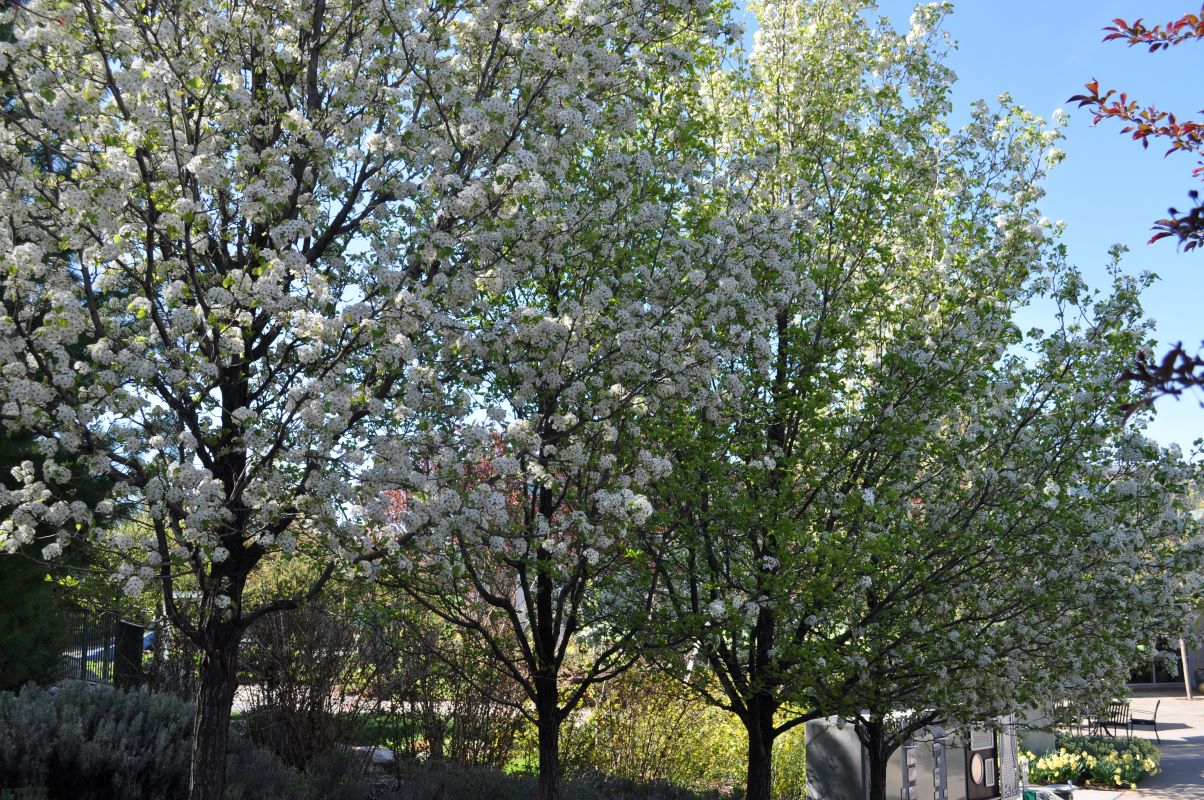
Chanticleer Flowering Pear Pyrus calleryana 'Chanticleer'
Narrow and tightly growing deciduous tree with profuse, pure-white flowers blooming in early spring. Glossy green leaves turn gold to red in the fall. This variety is considered one of the best varieties of the species due to its more sturdy branching and disease resisitance. May still require early pruning to promote strong branching. Once established, it can handle periods of drought. Produces small inedible fruit that persists on the tree.
-
Chaparral Weeping Mulberry Morus alba 'Chaparral'
Small deciduous tree with weeping form. Branches drape to the ground creating a unique and attractive form. Flowers are whitish green and insignificant. Large glossy leaves turn yellow in the autumn. This cultivar is fruitless and creates less of a mess than fruited varieties. Prefers moderate amounts of water but adapts well to many different soil types.
-
Charles Joly Lilac Syringa vulgaris 'Charles Joly'
Large upright growing deciduous shrub. Panicles of fragrant reddish-purple flowers bloom in spring. Green cordate leaves have no fall color. Tolerates many soil types but no extremes. Quite drought tolerant once established.
-
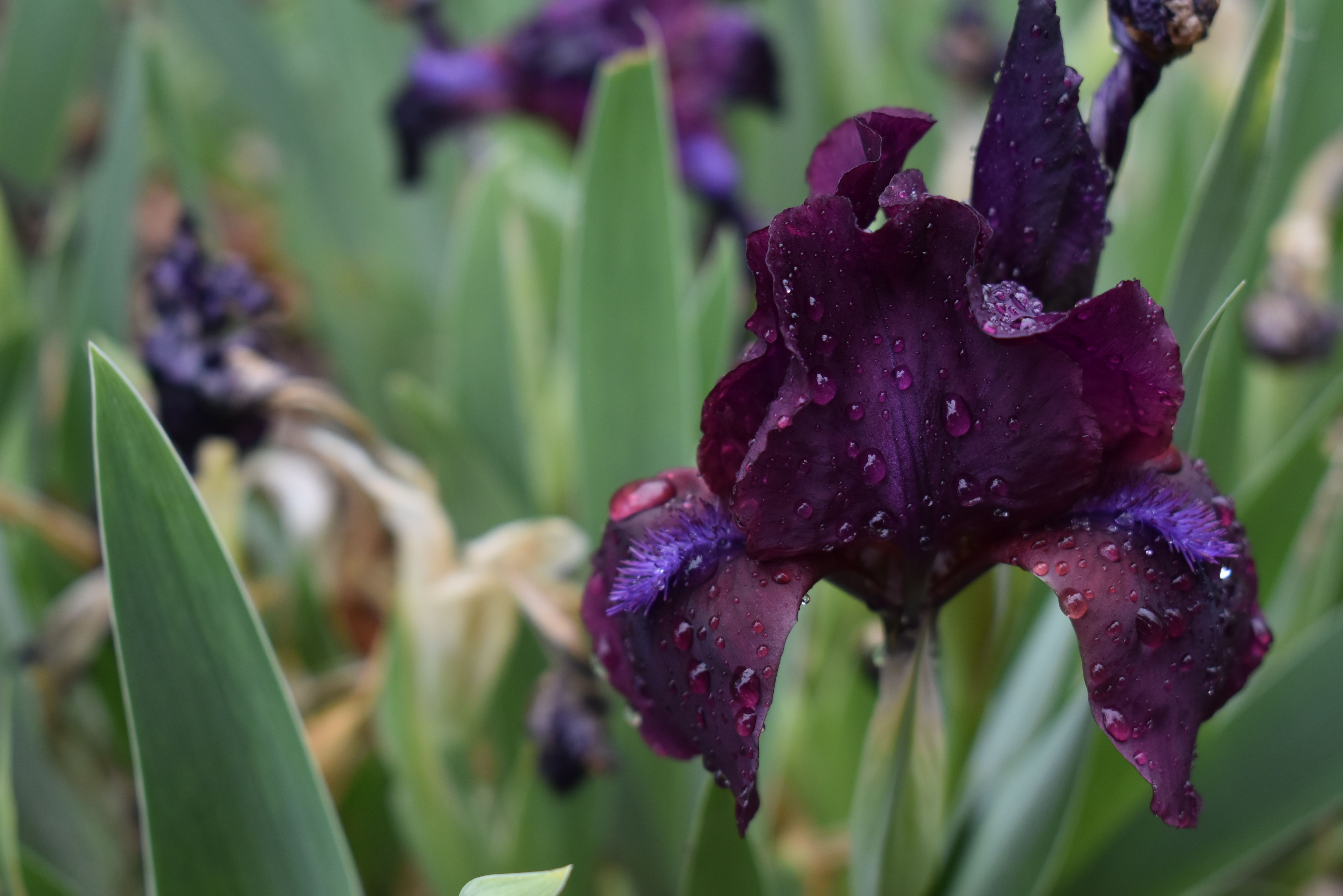
Cherry Garden Bearded Iris Iris 'Cherry Garden'
This perennial can bring a dramatic burst of color into any garden with its wine-red petals and purple-blue beards. This shorter Iris is perfect for a sunny border or a snug spot in a rock garden. They enjoy full to part sun, and bloom in the early spring.
-
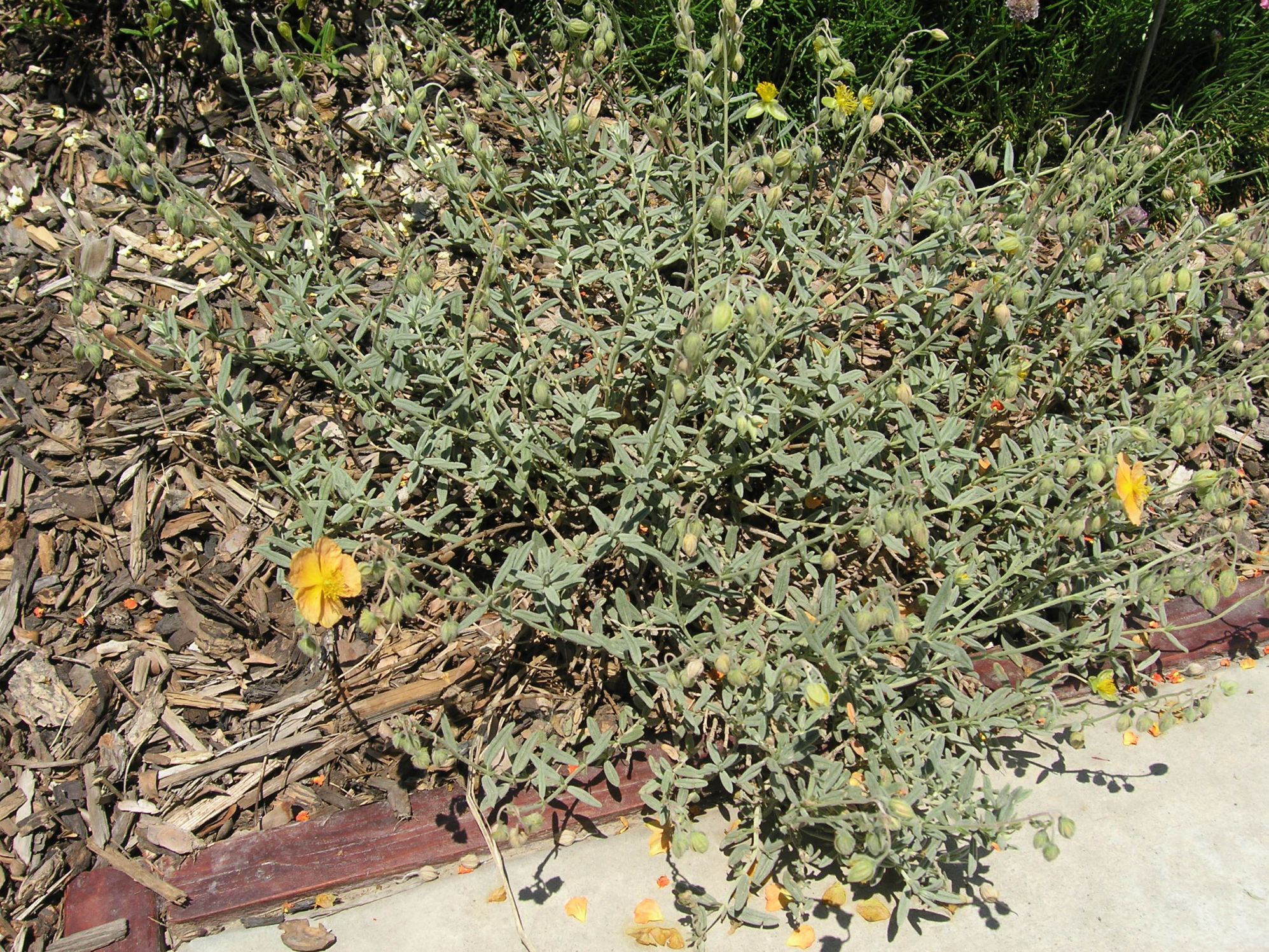
Cheviot Sun Rose Helianthemum 'Cheviot'
Low-growing evergreen groundcover. Small, silvery green, lance-shaped leaves are downy. Bears profuse pale peach rose-shaped flowers in late-spring to early-summer. Grows well as a groundcover or in rock gardens. Presents a very stunning show when covered with flowers.
-
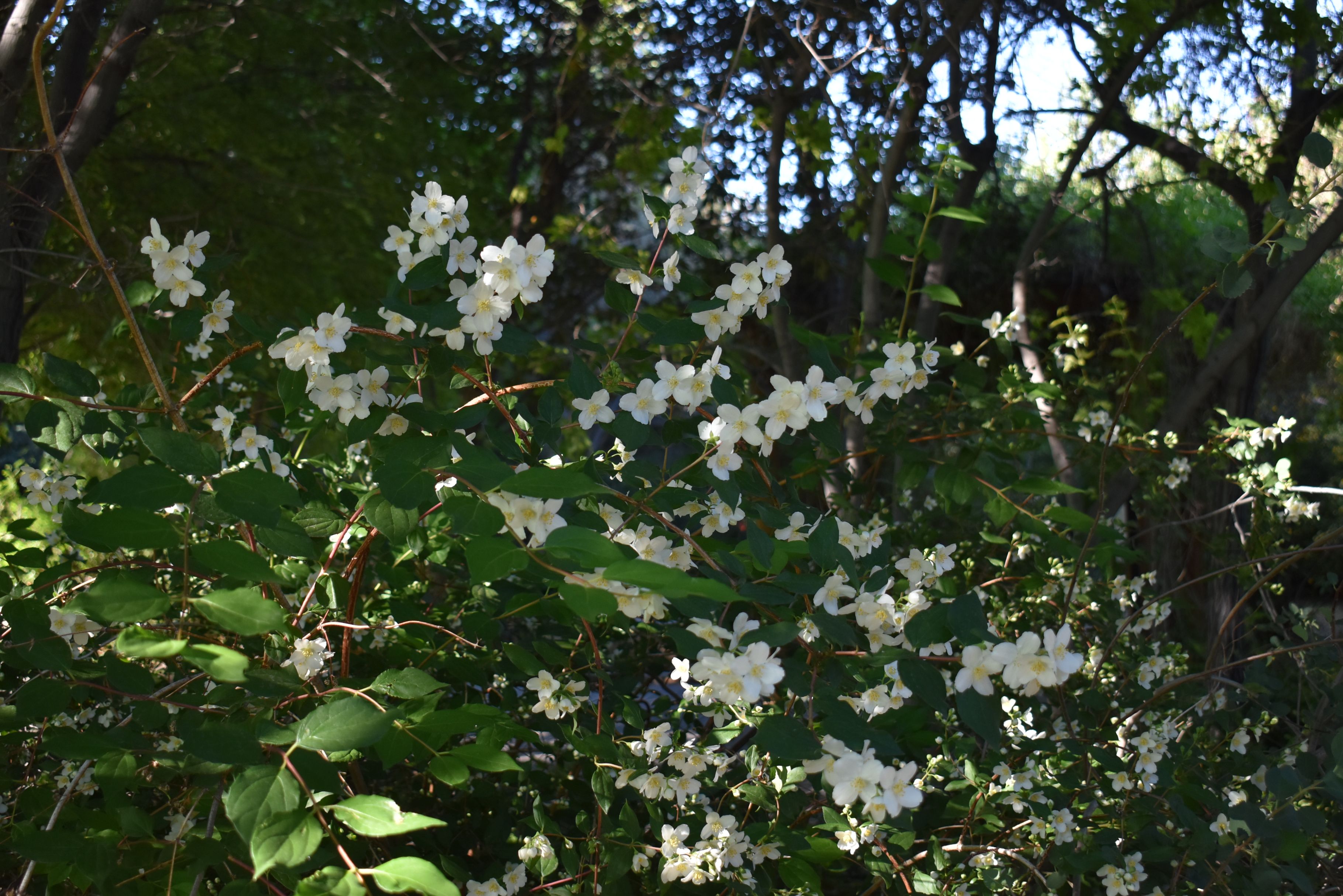
Cheyenne Mock Orange Philadelphus lewisii 'Cheyenne'
2001 Plant Select winner. Spreading deciduous shrub selection developed at the Cheyenne Research Center in WY. Profuse fragrant white flowers bloom in late spring to early summer. Arching branches bear bright green finely toothed leaves. Plant in enriched soils and water deeply but infrequently once established.
-
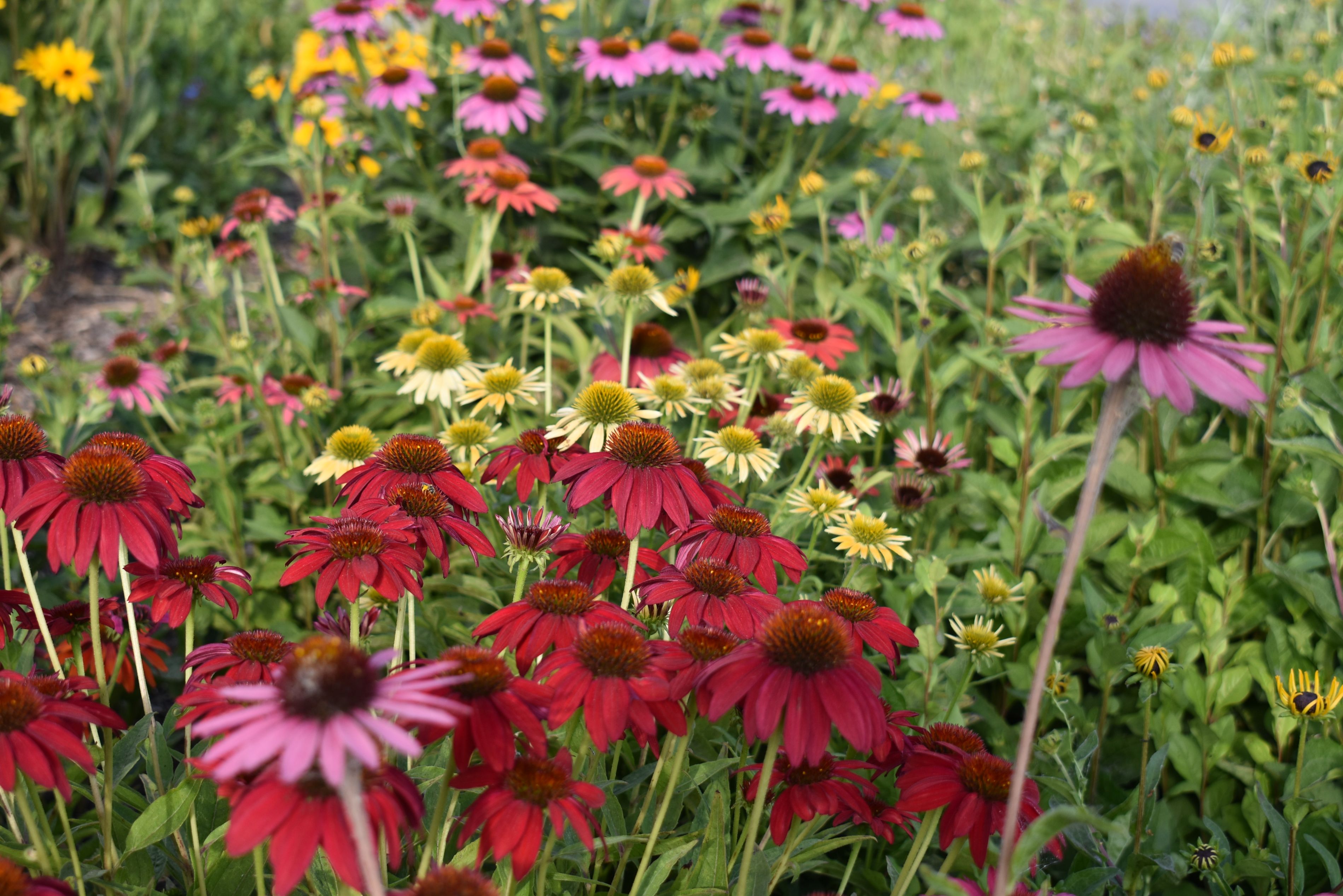
Cheyenne Spirit Coneflower Echinacea 'Cheyenne Spirit'
Summer and fall blooming flowers grace this coneflower in multiple colors ranging from red, orange, pink, yellow and creamy white. Outside of the bloom season, dark green leaves on sturdy stems form attractive clumps. It is tolerant of drought and heavy soils.
-
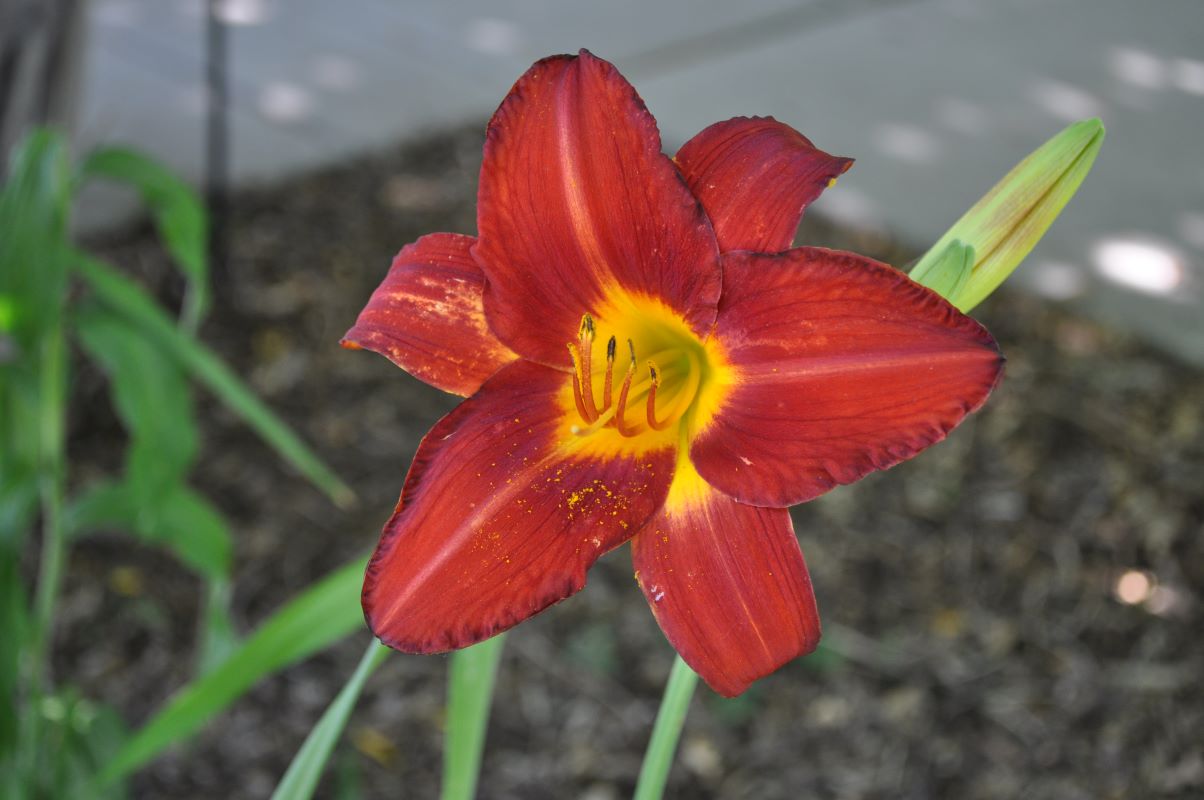
Chicago Apache Daylily Hemerocallis 'Chicago Apache'
This daylily has stunning red color, a bright yellow center and ruffled edges that bloom on top of slim, grass-like foliage. This will be an easy-care plant that offers warm color June through August. It is also adaptable to many growing conditions, but typically does not bloom as well in full shade.
-
Chicago Hardy Fig Ficus carica 'Chicago Hardy'
This particular variety is considered to be one of the hardiest edible figs, but requires proper care and protection in the winter. It is self-fertile and has large, deeply lobed, leathery foliage. Spring brings insignificant flowers that bloom inside hollow receptacles. As the blossoms mature, they become soft, fleshy, and edible. The skin can be light brown to deep purple with sweet, strawberry red flesh. They fully ripen in late summer and early fall on new wood. The branches may die during the winter, but it should regrow from the roots and still produce fruit every year.
-

Chief Joseph Lodgepole Pine Pinus contorta var. latifolia 'Chief Joseph'
A dwarf cultivar of a native evergreen tree that provides brilliant color in winter. The needles begin an attractive green, turn chartreuse in late summer and finally end on a golden yellow as the weather cools. Chief Joseph will add a bit of sunshine during those cold months. This evergreen has an overall upright branching habit but may contort and arch with age.
-
Chihuahua White Pine Pinus strobiformis
Tall evergreen tree native to Mexico and New Mexico. Member of the white pine group which are all identified by needles held in bundles of five. Light green needles are finely serrated and grow up to five inches long. Silvery-gray bark becomes gray-brown and furrowed with age. Cones may grow from six to twelve inches long and four to five inches wide and have an S-curve.
-
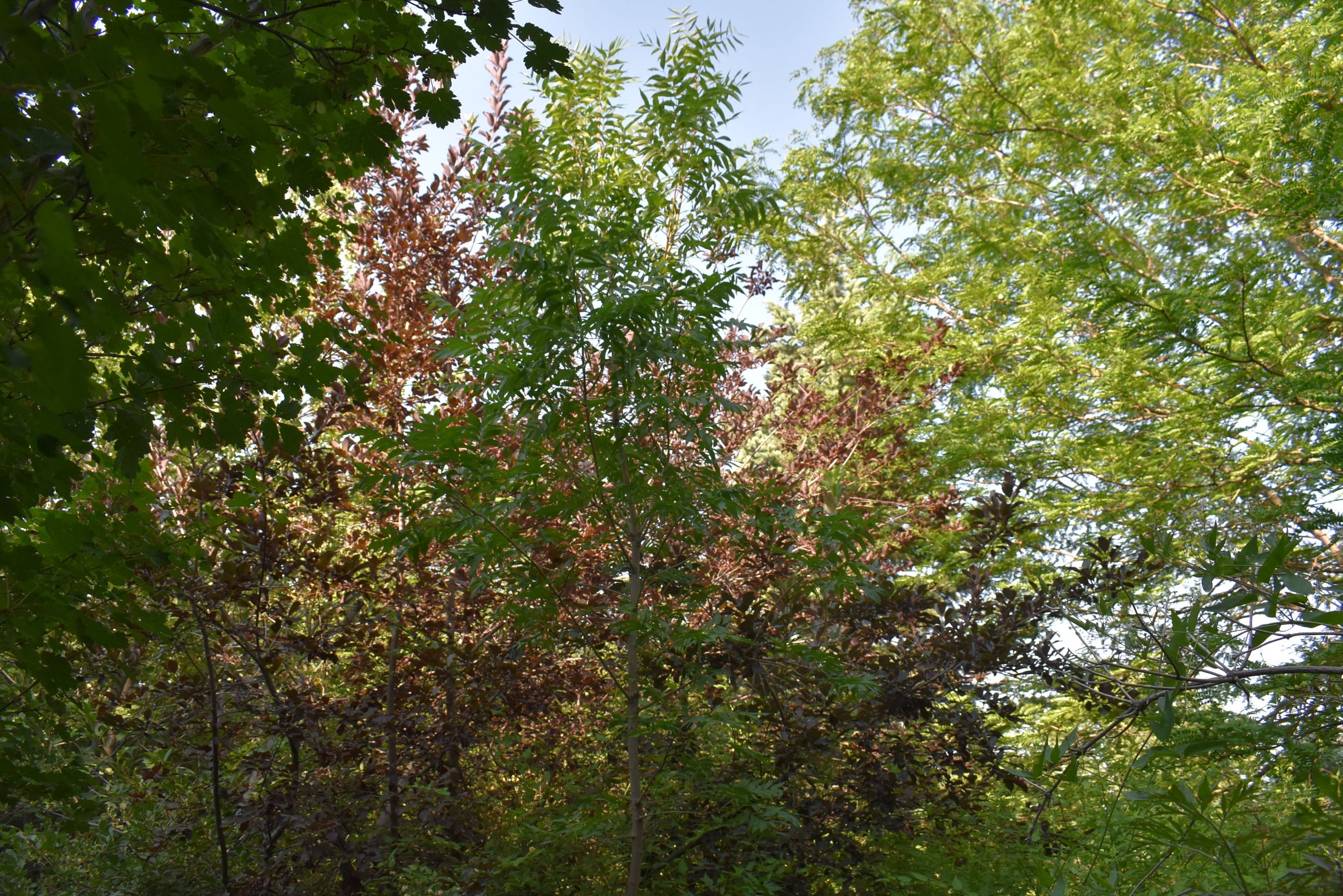
Chinese Pistache Pistacia chinensis
This smaller tree offers an oval rounded shape with stunning crimson fall color. The Chinese Pistache is perfect for areas needing shade and specimen interest. It prefers growing in full sun but can handle a little bit of shade. Though a relative of the pistachio tree, the inconspicuous green flowers produce an inedible red to blue fruit which can be a good food source for birds.
-
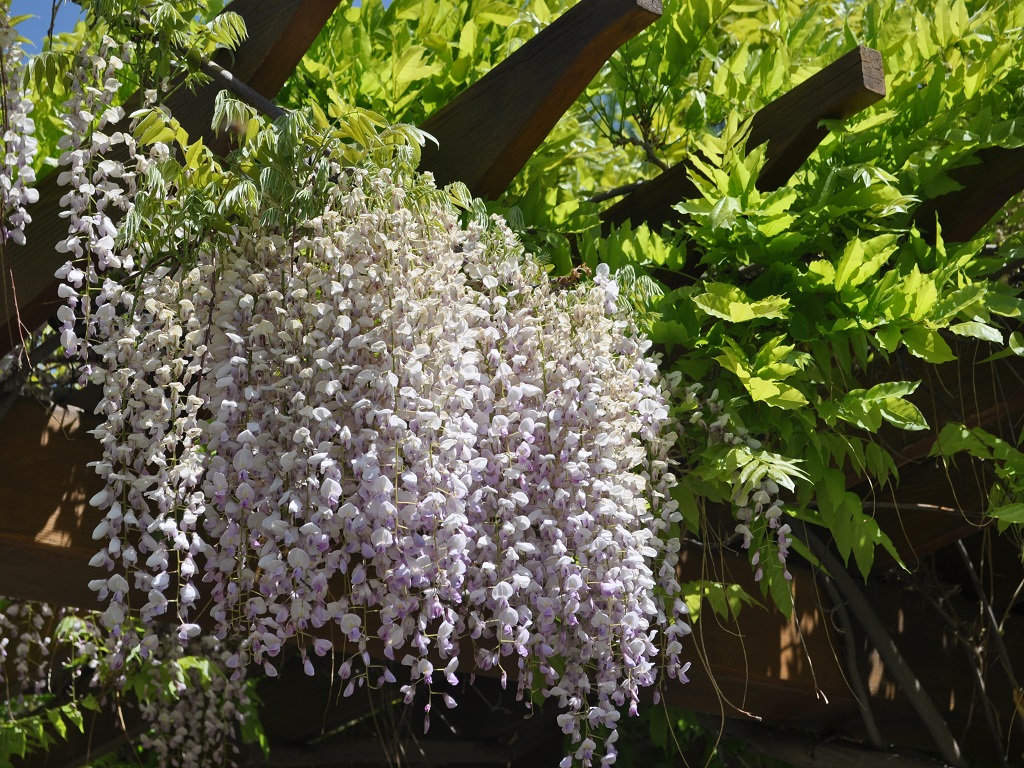
Chinese Wisteria Wisteria sinensis
Vigorous, twining deciduous vine that is long lived, with trunk becoming quite large. Beautiful pea-like, frangrant, lilac-blue to white flowers in dense clusters six to twelve inches long appear in late spring even before the leave foliage unfolds. Flower clusters are followed by attractive velvety pods. Needs a strong structure to climb on, and handles both sun and shade. Correct pruning is important for best plant bloom.
-
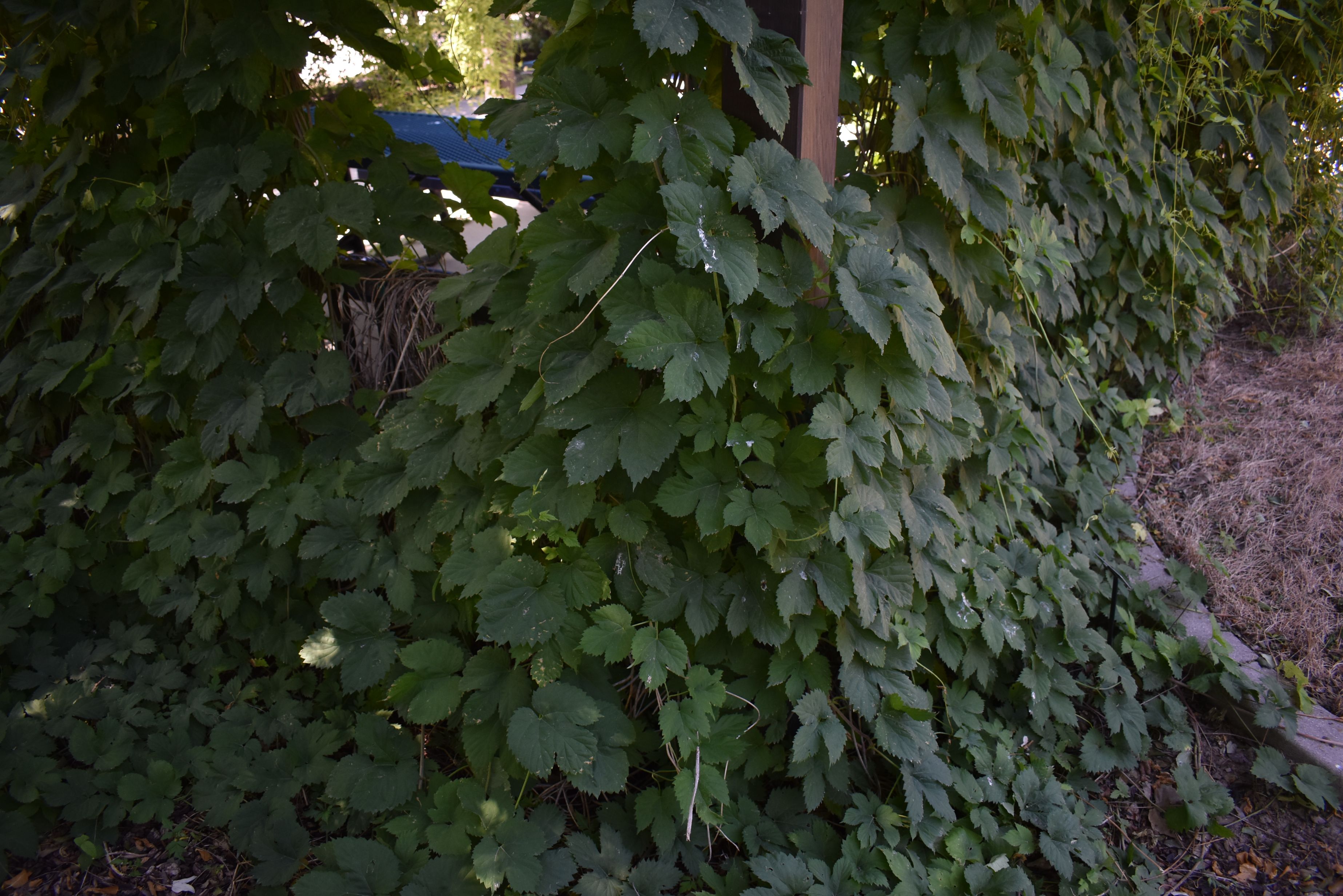
Chinook Hop Humulus lupulus 'Chinook'
This fast-growing perennial climbing vine produces flowers in summer that are used in brewing for their bitter properties. It is mainly grown for agricultural purposes but has ornamental value as well, with light green lobed leaves and interesting flower clusters. The plant dies back to the ground each year. Shoots will cling to upright support but may also need to be tied and twined in a clockwise fashion. Plants are dioecious (separate male and female plants). Extensive pruning and cultivation is required to obtain high yields.
-
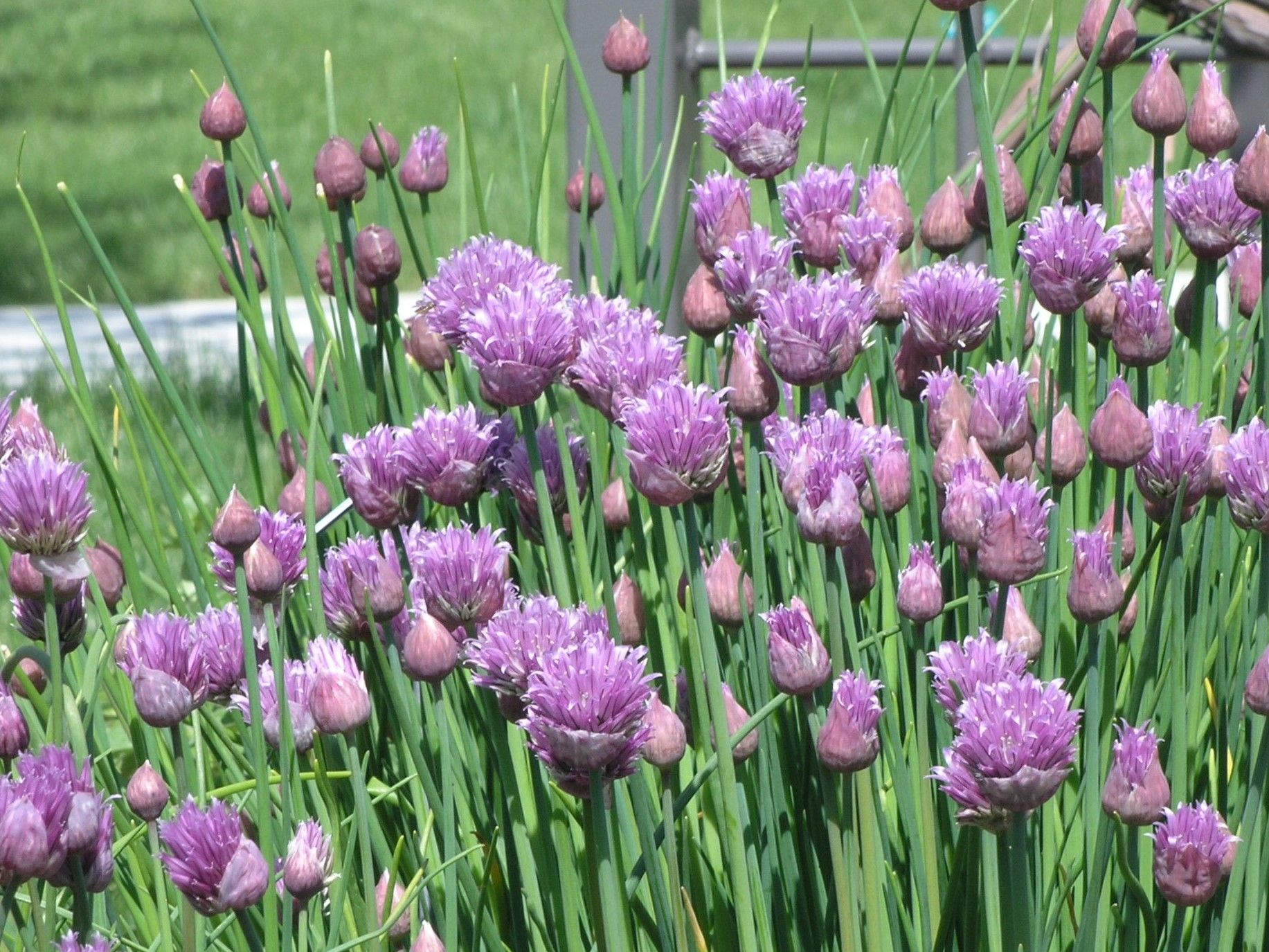
Chives Allium schoenoprasum
Small bulbous perennial commonly used as an herb. The leaves are used for flavoring and garnishing some dishes. Aside from the herbal uses, it is also valuable as an ornamental plant, bearing balls of pink/purple flowers during late spring and summer.
-
Chocolate Flower Berlandiera lyrata
A cheery, informal wildflower that will bloom from early summer through frost. Yellow-petalled, daisy-like flowers have reddish-brown centers and a strong chocolate fragrance, especially in the early morning. The dried seedheads look interesting and provide excellent food for birds. Native to the American Southwest, Chocolate Flower is a very drought and heat tolerant plant which can live without irrigation once established.
-

Chocolate Mint Mentha x piperita f. citrata 'Chocolate'
This mint is commonly used to flavor desserts or as a garnish. The leaves have a minty chocolate flavor to them. It blooms in the summer with spikes of lavender blue flowers. It does spread, so it should be planted in an area where spreading is desired or contained. It is tolerant of many soil types but prefers plenty of moisture.
-
Chocolate Vine Akebia quinata
The chocolate vine, also called five-leaf akebia, is a fast-growing deciduous vine. Each leaf is palmate and composed of five oblong leaflets that are bluish-green in maturity. Drooping racemes of small chocolate to purple flowers bloom in early-spring. If grown in close proximity to others of its kind, it will produce pods filled with seeds and a whitish-pulp that is edible. Grows well in a variety of soils and will tolerate some drought. The chocolate vine is an aggressive grower and will need to be cut back to keep it from strangling nearby plants. It will tolerate being sheared to the ground each spring.
-
Chokecherry Prunus virginiana
Extremely hardy multi-stemmed tree or large shrub depending on pruning. Produces creamy white flowers in mid to late-spring. Berries are acidic and astringent but are edible and can be used in jellies. Adaptable to a wide range of soil types and watering regimes. Prefers to grow in full sun.
-
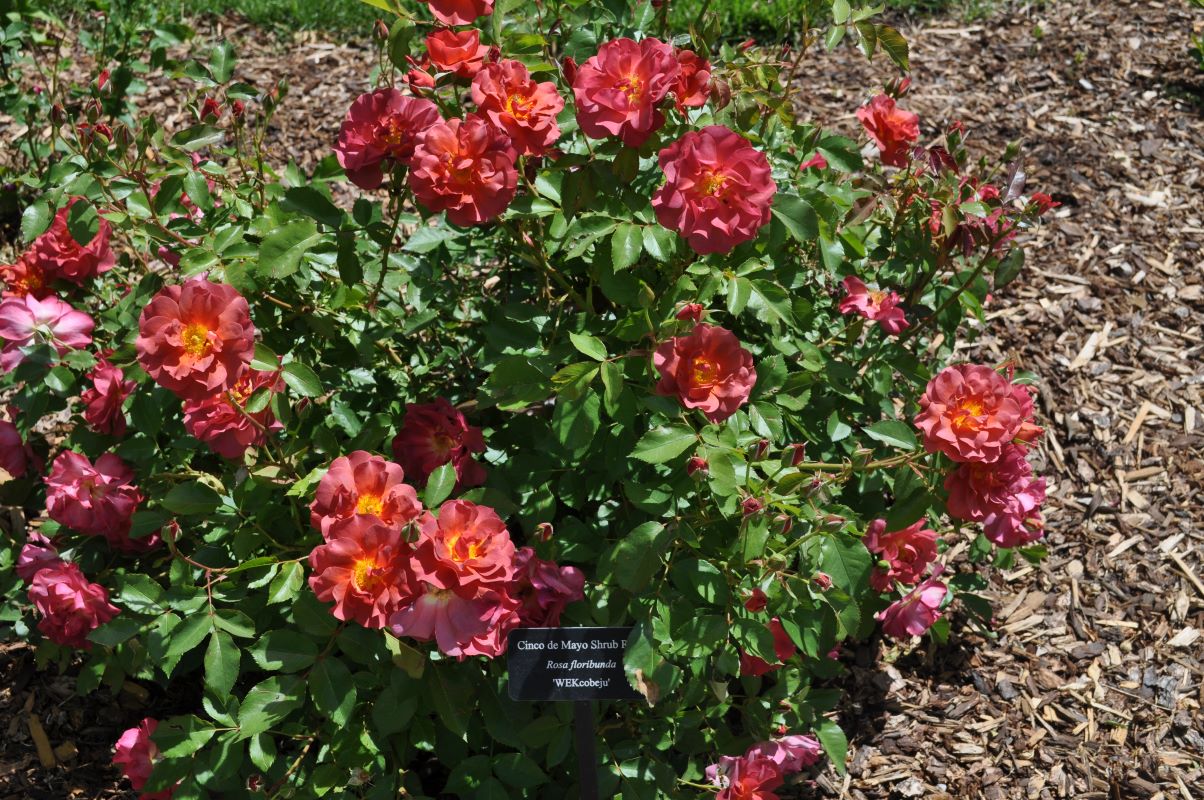
Cinco de Mayo Shrub Rose Rosa floribunda 'WEKcobeju'
This rose is rounded and bushy. It has glossy, medium green leaves. The flowers on this rose are very full with a mild fragrance. They bloom repeatedly with medium sized blooms. They range in color from smoked lavender to red-orange. Tolerates many soil types but prefers good drainage.
-

City Sprite Zelkova Zelkova serrata 'JFS-KW1'
City Sprite has a compact oval to vase shape and is semi-dwarf. It has bright green foliage that turns slightly yellow in the fall. This is a great tree for tight spaces in urban landscapes.
-
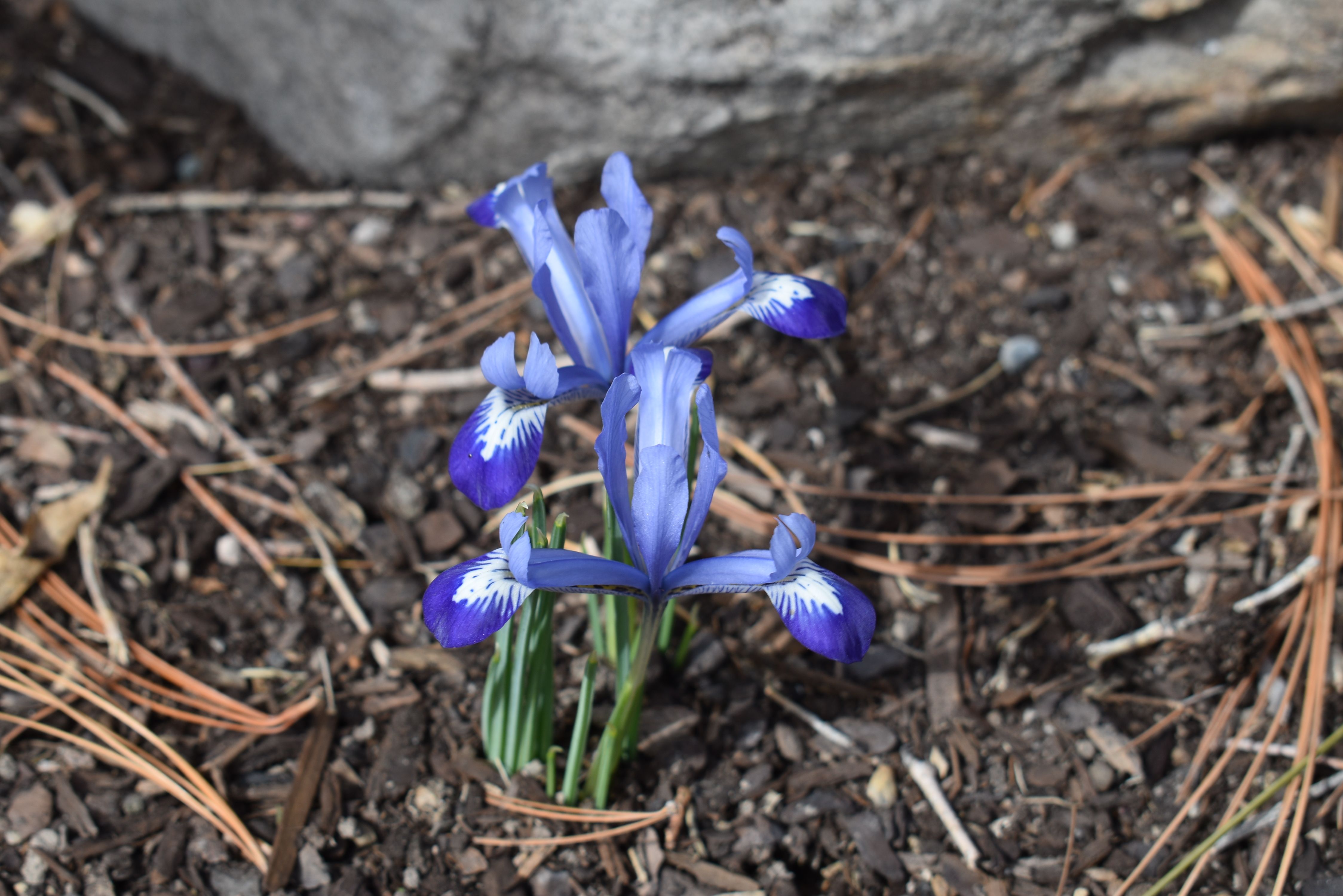
Clairette Reticulated Iris Iris reticulata 'Clairette'
A diminuitive iris, the reticulated iris grows in the early spring. This variety has bright blue standards and dark blue falls with white splotches on all its falls. Narrow, grass-like leaves continue to grow through the spring and disappear with warmer weather.
-
Claret Cup Cactus Echinocereus triglochidiatus
Spiny, mound-forming cactus with bright scarlet-red, funnel-shaped flowers that bloom in spring. Native throughout the southwestern United States. Requires very little irrigation once established.
-
Cleo Daylily Hemerocallis 'Cleo'
Tall herbaceous perennial with beautiful pink and yellow summer-blooming flowers. Foliage is long and drooping with grasslike blades about one inch wide. Easily grown in a wide range of conditions. As suggested by the name, flowers last one day but are produced over a long period of time. Divide every three to five years to maintain vigor.
-

Cleopatra Foxtail Lily Eremurus x isabellinus 'Cleopatra'
Clump-forming perennial with long strap-like leaves. A tall, leafless central flowering stalk grows in mid spring producing a spiky cluster of reddish orange flowers. Flowering occurs from the bottom of the spike moving upward. Prefers moderate to low amounts of water in well-drained soil.
-
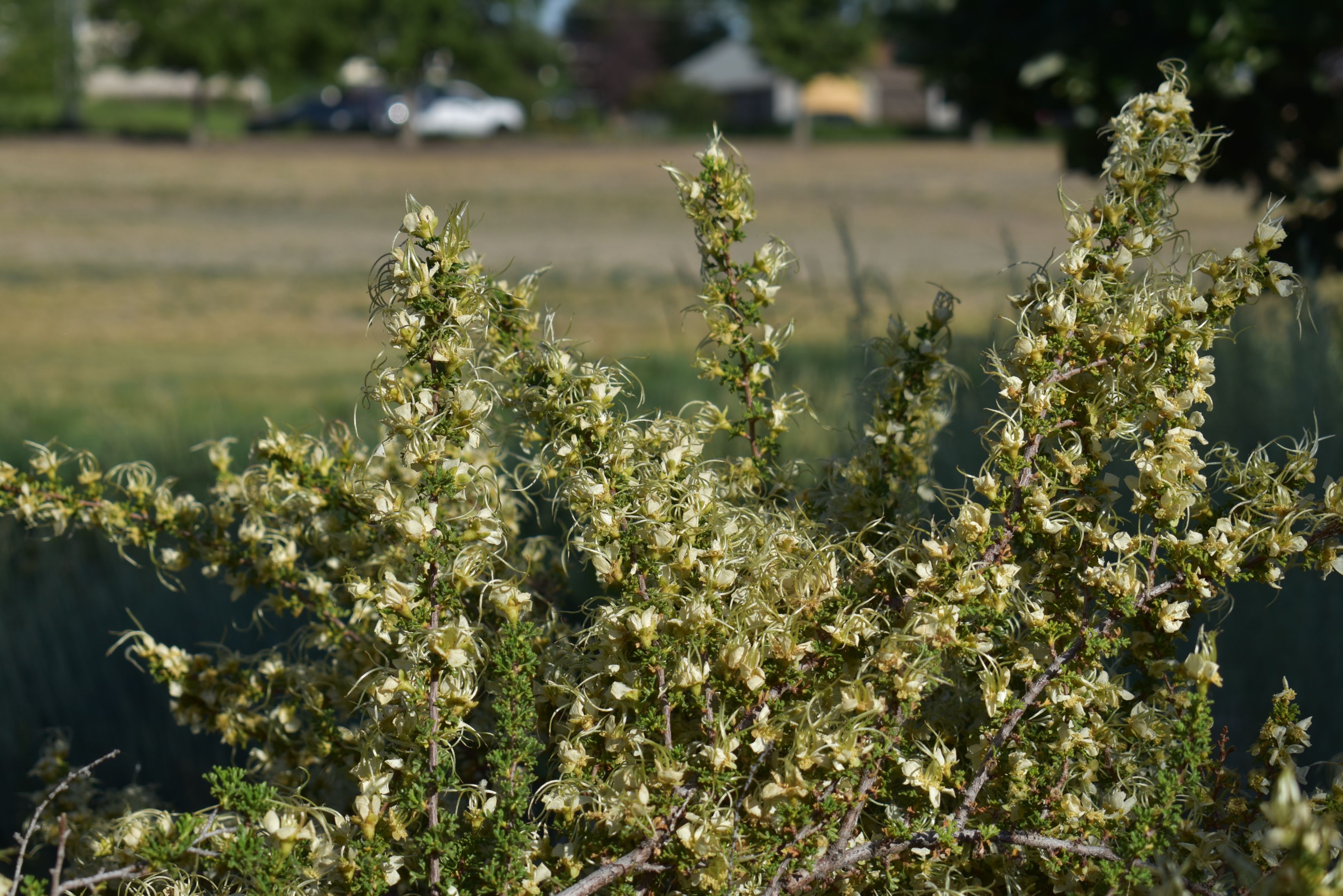
Cliffrose Purshia mexicana
Rugged evergreen shrub native to the western United States. Creamy white flowers with bright yellow center appear in summer and turn to feathery seed heads. The tail of the seed head acts like a drill, propelling the seed into the ground. Leaves are tiny and deeply lobed. Excellent choice for any water-wise landscape.
-
Cloud Nine Switch Grass Panicum virgatum 'Cloud Nine'
One of the taller switch grasses, it has a strong growing, blue-green foliage with an upright shape. Above the grass blades a cloud of purple to tan seed clusters form in the late summer, turning a golden-yellow in fall. Prefers full sun, but tolerates some shade. Cut back in early spring. The species is native from Utah to the east coast.
-
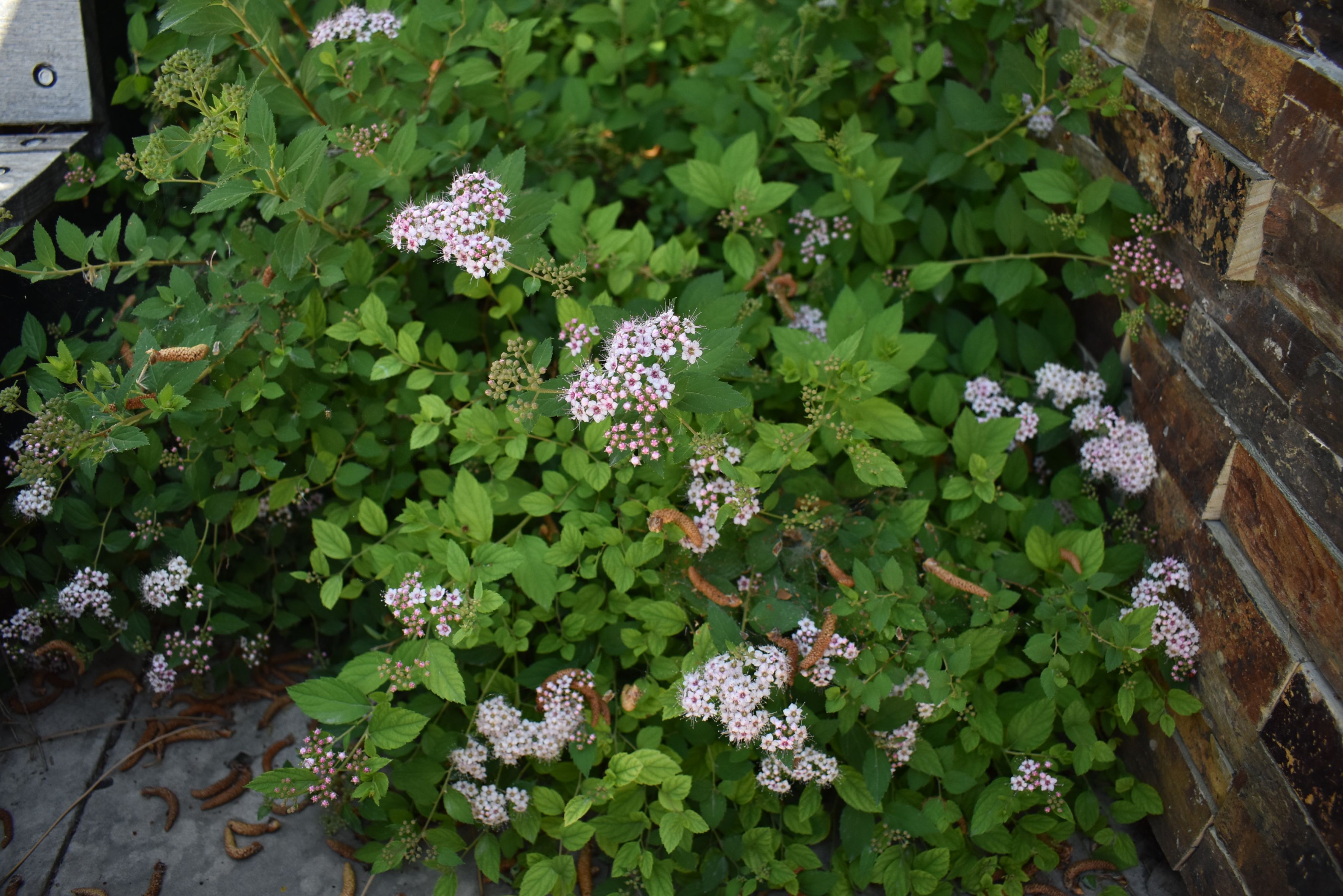
Coccinea Spirea Spiraea japonica 'Coccinea'
Upright, compact deciduous shrub with a bushy habit. In summer showy, dark crimson flowers are borne prolifically which attract bees, birds and butterflies. Leaves are deep green on top, grayish-green below and lance-shaped. They prefer full sun and well drained soil. Works great as a border shrub.
-
Cody Buffalo Grass Buchloë dactyloides 'Cody'
Warm-season grass developed to be grown as a turfgrass. It's short growth height requires less mowing and can be left unmowed altogether. This variety has been bred for greater cold hardiness, heat tolerance and drought resistance. Gray-green foliage appears mid-May and goes dormant in mid-September. Uses less than half the amount required to keep Kentucky bluegrass growing healthy.
-
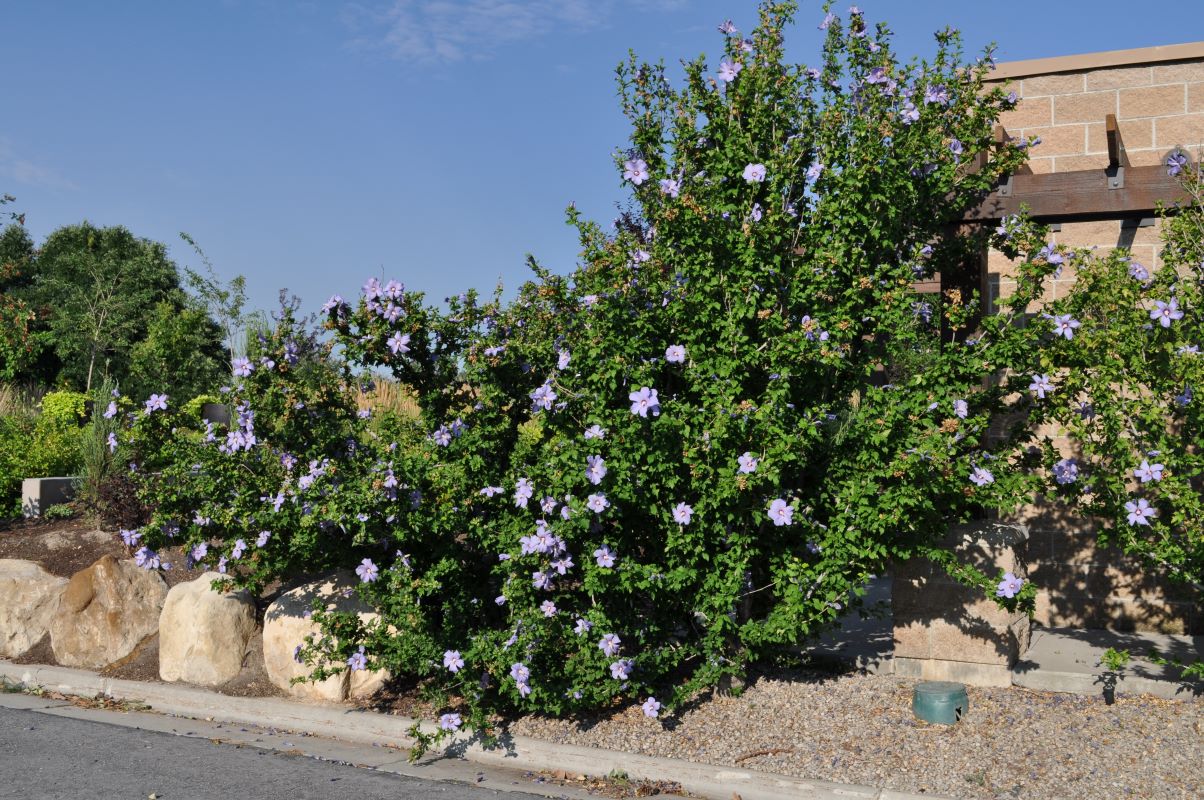
Coelestis Rose of Sharon Hibiscus syriacus 'Coelestis'
Vigorous, multi-stemmed, upright, deciduous flowering shrub. Numerous showy, deep violet-blue, single flowers reddish-purple throats are borne throughout the summer. Attractive 3-lobed, coarsely toothed leaves grow on erect stems. Tolerant of heat, drought, and poor soils. Prefers fertile soils with moderate amounts of water.
-

Collie Mullens Rose of Sharon Hibiscus syriacus 'Collie Mullens'
Vigorous, multi-stemmed, upright, deciduous flowering shrub. Numerous showy, rose-pink, semi-double flowers with burgundy centers are borne throughout the summer. Attractive 3-lobed, coarsely toothed leaves grow on erect stems. Tolerant of heat, drought, and poor soils. Prefers fertile soils with moderate amounts of water.
-
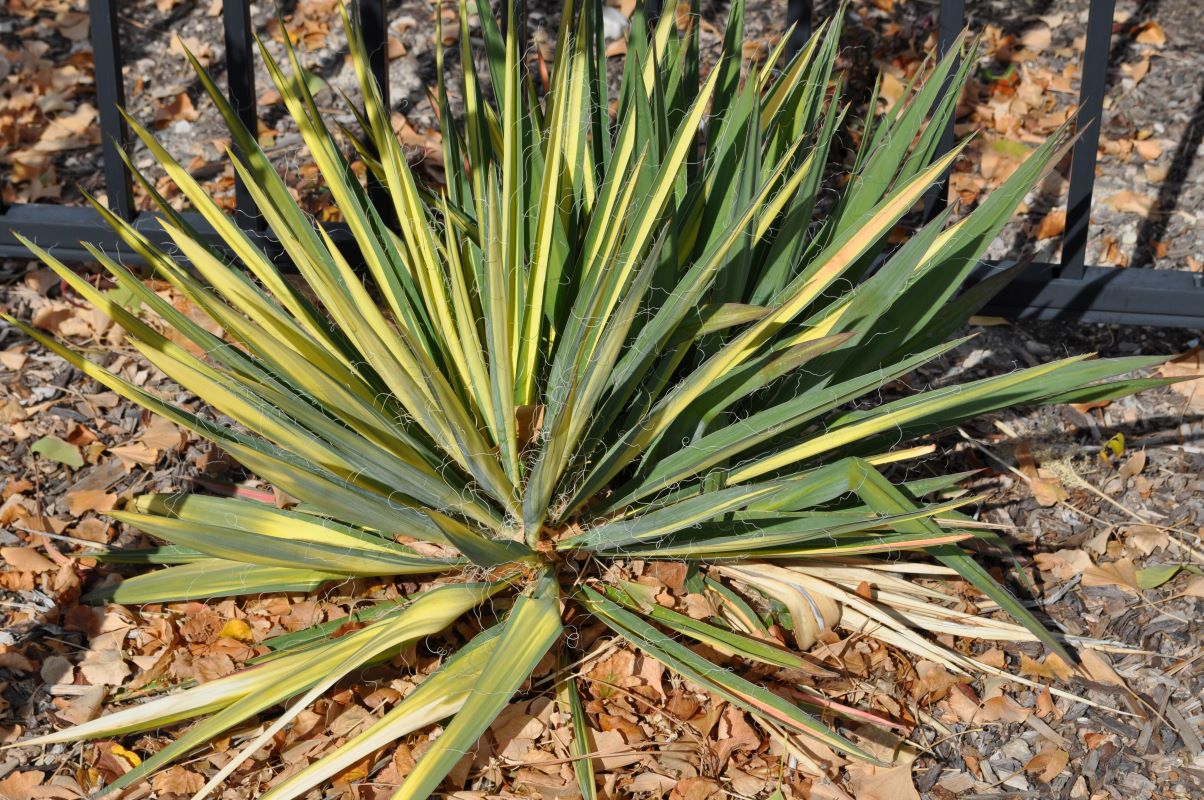
Color Guard Yucca Yucca filamentosa 'Color Guard'
Terrific plant for sunny areas with little water and tough soil. Sword like leaves are gray-green on the edges and creamy gold in the center, with rosy hints in the winter. Long curly white threads are found along the leaf margins. In early summer, a spike with creamy white blooms will rise from the center of the rosette and should be removed after blooming.
-
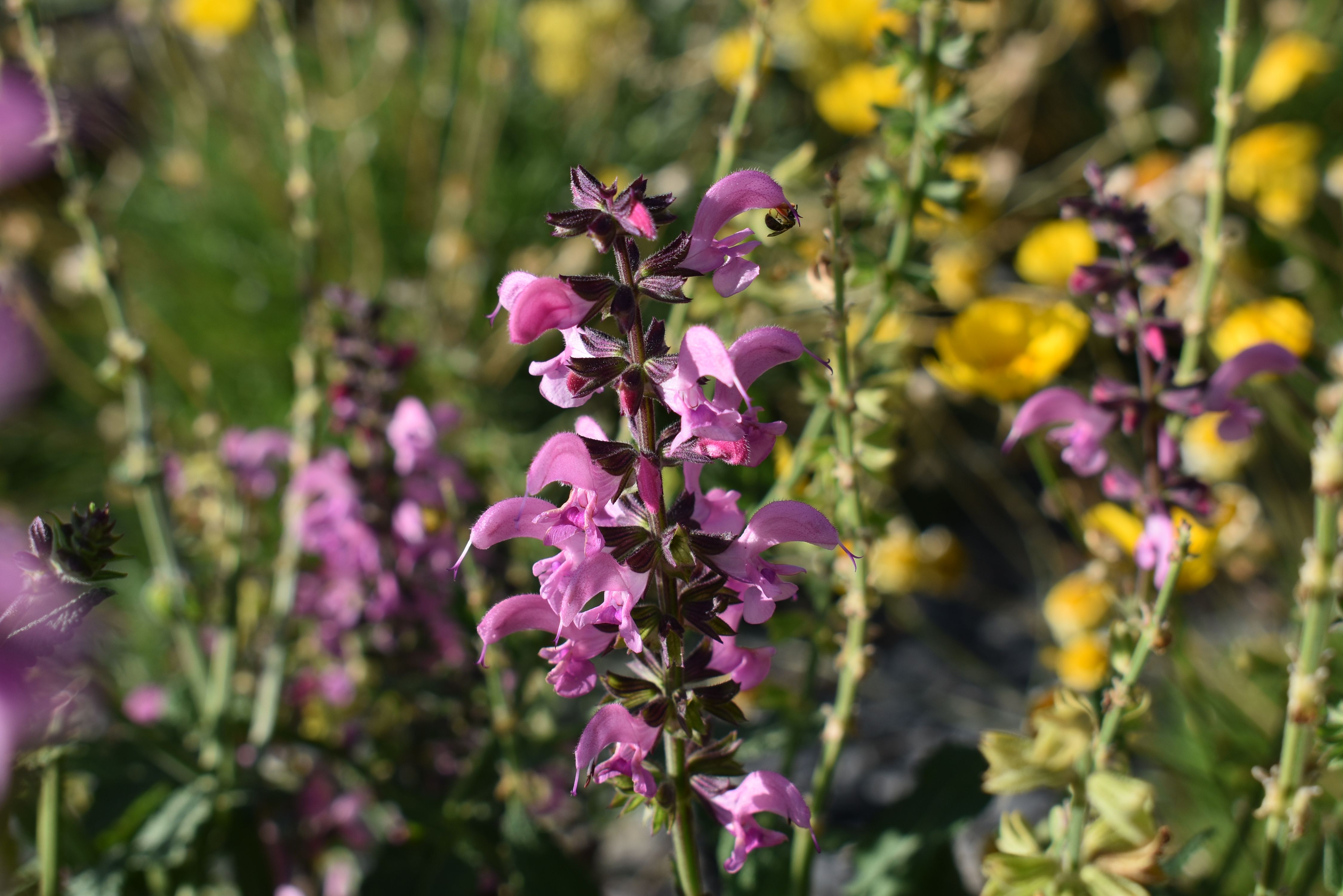
Color Spires Pink Dawn Salvia Salvia nemorosa 'Pink Dawn'
This colorful salvia has wrinkled, medium green to gray green leaves. Late spring to early summer, cotton candy pink flowers blossom all along tall, erect stems that sit above the foliage. These blossoms last well into the summer.
-
Colorado Gold Gazania Gazania linearis 'Colorado Gold'
Low-growing perennial with linear leaves growing from a basal rosette. Leaves are dark green on top and silvery-gray underneath. Bright yellow daisy-like flowers appear in late spring and early summer. Mass plantings can create a groundcover. May be invasive if allowed to spread into the lawn.
-
Colorado Spruce Picea pungens
This large evergreen tree is native to the western United States including Colorado and Utah. Sharp needles grow on stiff branches and are usually bluish gray-green but can have more of a green coloration. Prefers full sun and well drained soil. For residential yards, choose a dwarf cultivar over the species as it will take up a very large space.
-
Colortart Iris Iris 'Colortart'
Upright growing perennial with fragrant flowers. Large burgundy to magenta flowers with yellow speckles and bronze beards bloom in spring. Attractive lance-shaped leaves are deer resistant. Tolerates some drought but peforms best with moderate water.
-
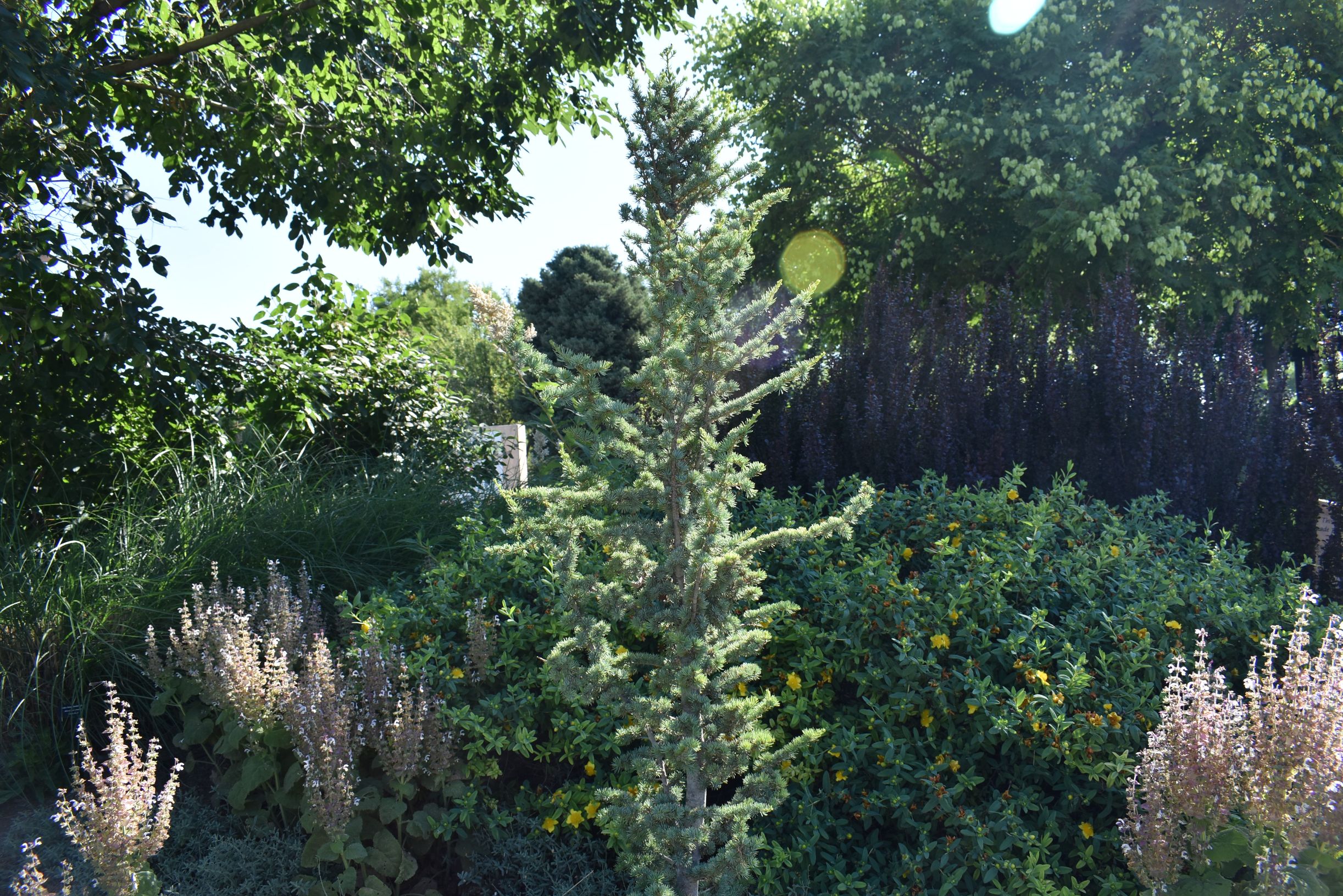
Columnar Blue Atlas Cedar Cedrus atlantica 'Glauca Fastigiata'
An upright, narrow variety of Blue Atlas Cedar. Bluish-green needles and silvery bark are characterisitic of this Cedar. Branching structure gives this tree an open unique character. Great choice for a narrow space but will still grow quite tall. Favorite of deer.
-
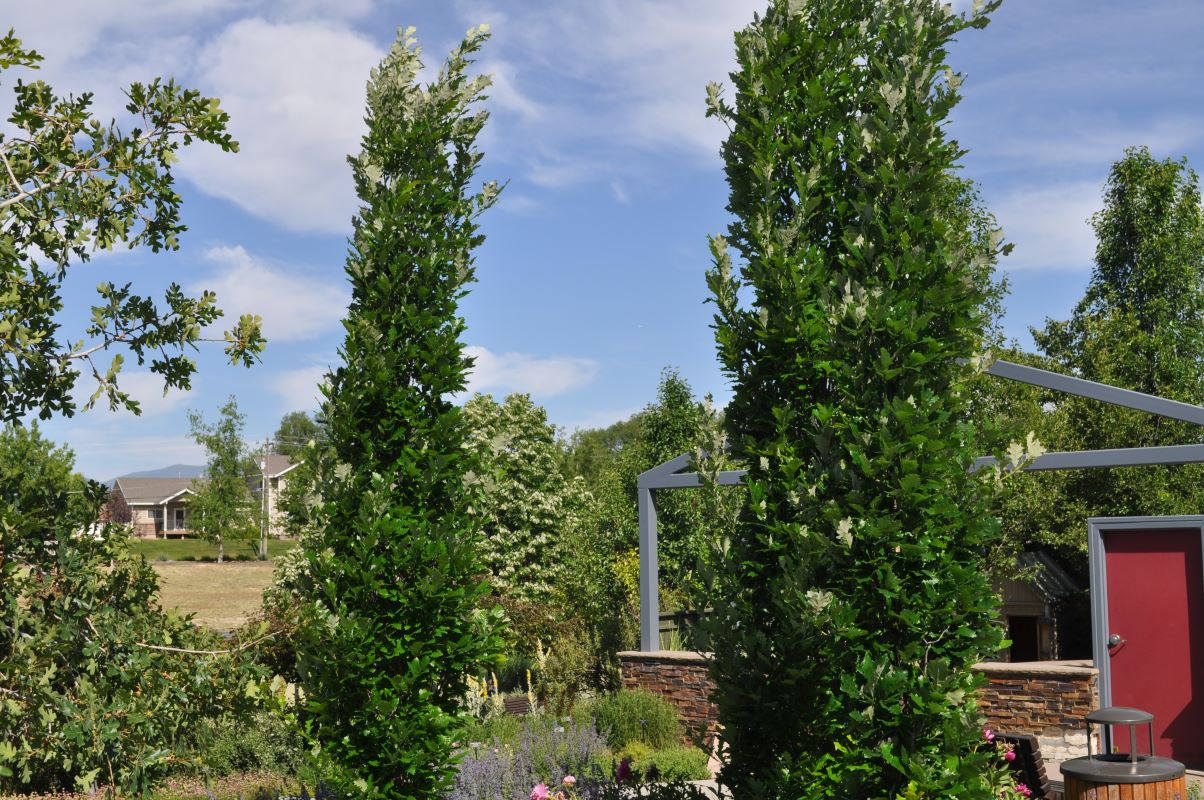
Columnar English Oak Quercus robur f. fastigiata
Narrow, columnar growing deciduous tree with a short trunk. Dark green, lobed leaves turn brown in the fall and usually are retained by the tree through the winter along with the acorns. Tolerant of many soil types and drought. Most often used in areas with limited room and is commonly seen in urban landscapes.
-
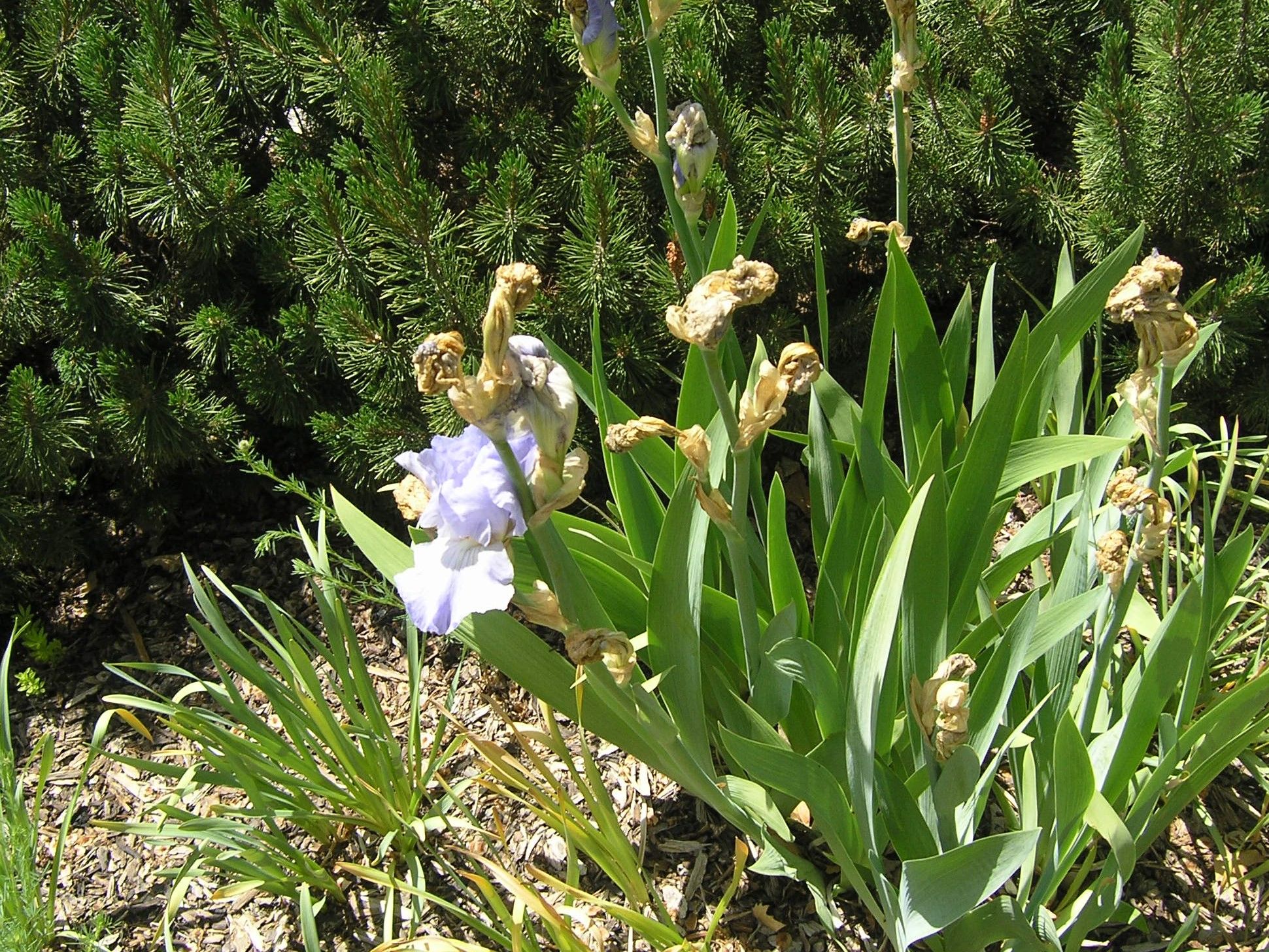
Coming Attraction Iris Iris 'Coming Attraction'
Upright growing perennial with fragrant flowers. Large pale blue flowers with darker edges bloom in spring. Attractive lance-shaped leaves are deer resistant. Tolerates some drought but peforms best with moderate water.
-
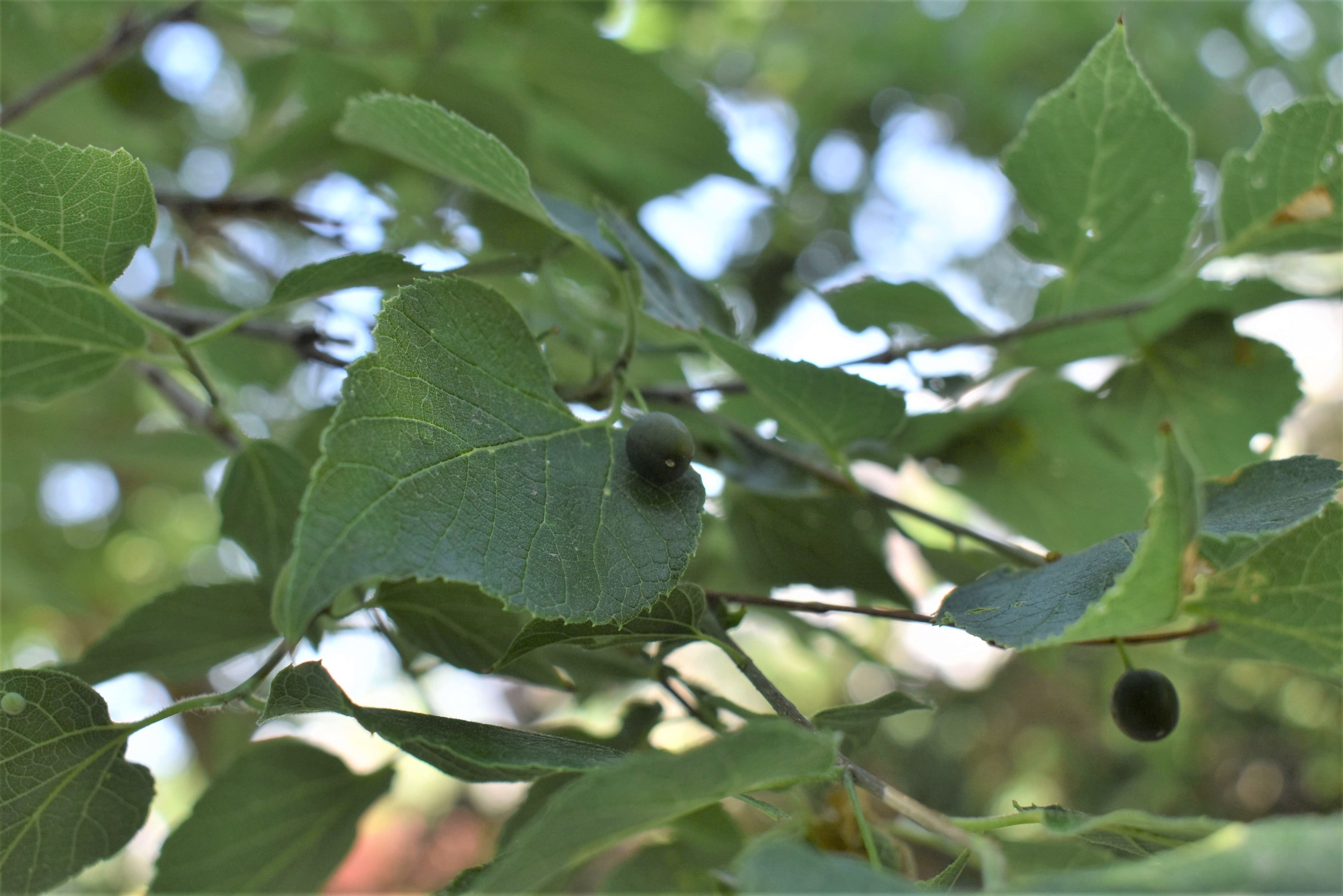
Common Hackberry Celtis occidentalis
A remarkably tough and adaptable deciduous shade tree with a broad oval shape. Tolerates an incredibly wide range of soil and environmental conditions, including strong winds, pollution, flooding, and drought, making it a great tree for park strips and other difficult sites. The distinctive bark is ridged and sometimes corky, and the small, sweet fruits are favored by wildlife. The large, asymmetrical, spearhead-shaped leaves are rough textured and turn yellow in fall. Although generally disease resistant, it is susceptible to galls which disfigure the leaves but cause no harm. Native to the eastern and central US.
-
Common Juniper Juniperus communis
A low-growing evergreen shrub with blue-green needles and excellent drought tolerance. This shrub, whose native range stretches across the northern hemisphere, is exceptionally drought tolerant and can even survive without irrigation once established. The small green to blue-black fruit are an important source of winter food for birds. Tolerates poor soils and dry, exposed sites. A great low-maintenance groundcover that will gradually spread to cover a very large area and suppress the growth of weeds.
-
Common Yarrow Achillea millefolium
This tough, spreading, mat-forming perennial prefers to grow in dry, nutrient deficient soils. The low foliage is topped with 2-3 foot tall flower stalks of creamy white blossoms in summer. It has been used historically for medicinal uses across its native range of North America, Europe, and Asia. The genus name, "Achillea", was named for the Trojan War hero Achilles, who used the medicinal herb to heal fellow soldiers. This is currently being tested at the Conservation Garden Park as a water-wise lawn alternative.
-
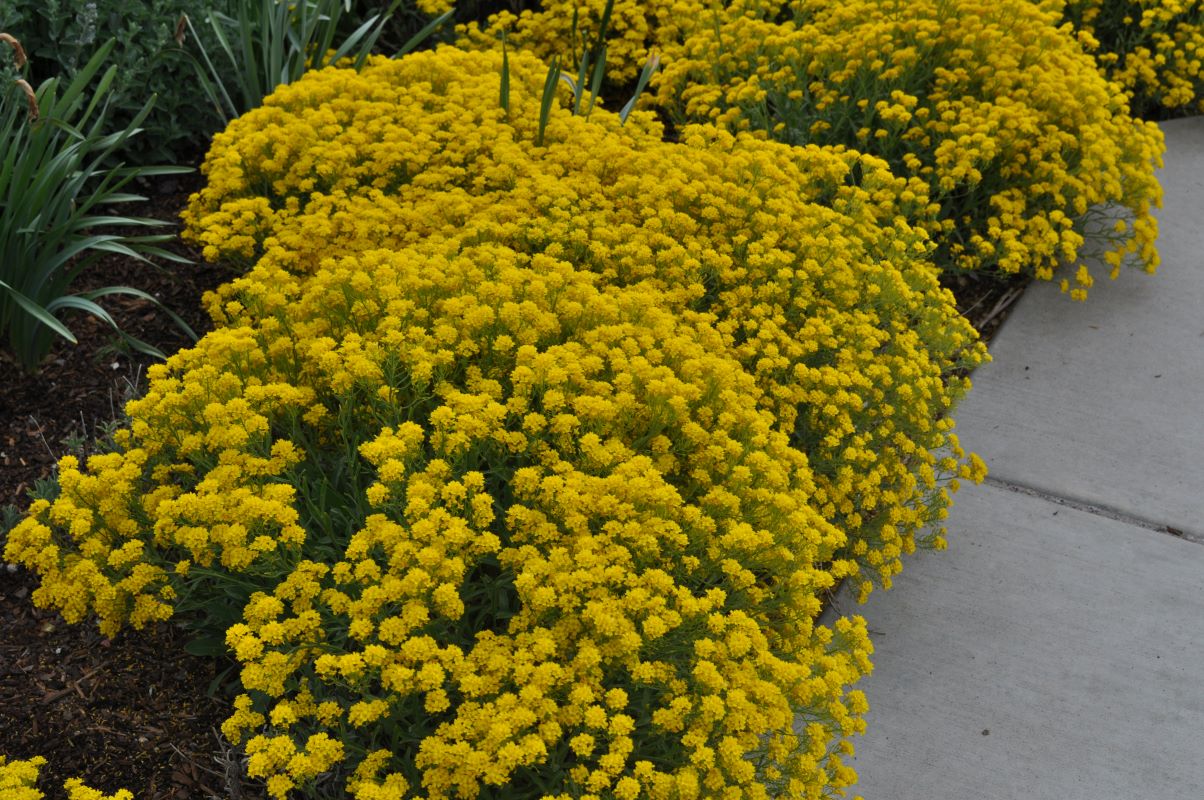
Compact Basket of Gold Aurinia saxatilis 'Compacta'
Sometimes called alyssum. Low growing, mound of grayish green leaves. This plant covers itself in masses of tiny yellow flowers in spring to early summer. Great for rock gardens, edging or mixed containers.
-

Compact Creeping Germander Teucrium chamaedrys 'Prostratum'
This lower-growing cultivar of Wall Germander is a flowering evergreen groundcover with aromatic, dark green, wavy-edged leaves. The rosy lavender flowers bloom on short spikes in July. It prefers average, well-drained soil, but does tolerate poor soil.
-

Compact Mountain Flame Fire Chalice Epilobium (syn Zauschneria) garrettii 'Mountain Flame'
Low-growing herbaceous perennial. Unlike other hummingbird flowers, this one is more compact. Bright red-orange tubular flowers bloom throughout the summer. Attracts hummingbirds. Requires moderate amounts of water. Good choice for planting over rock walls.
-
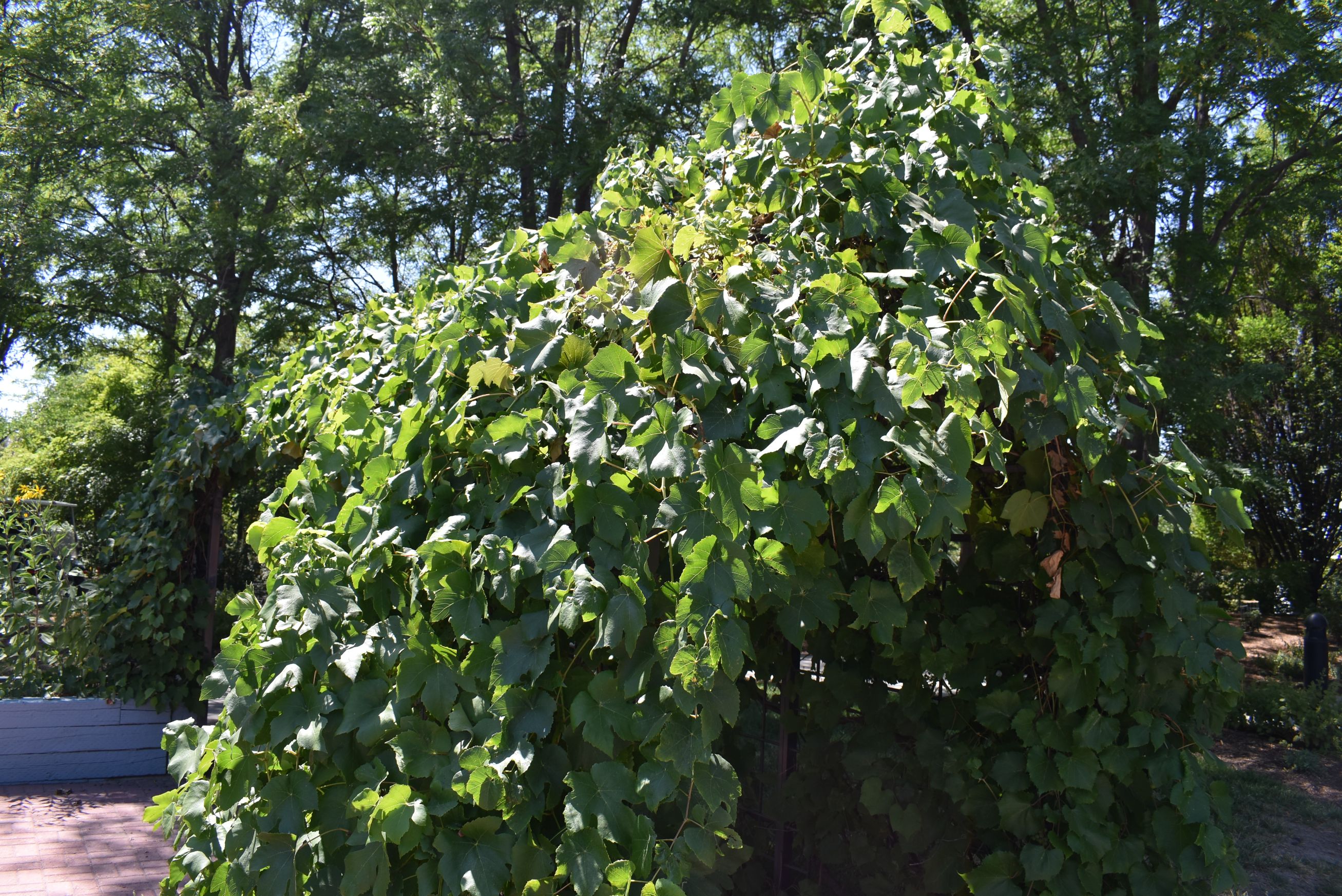
Concord Grape Vitis labrusca 'Concord'
One of the oldest and most popular cultivated grapes, discovered in Concord, Massachusetts and prized for its intense flavor. Inconspicuous fragrant green flowers appear in spring and lead to bunches of dark purple seeded grapes. The fruit is great for jams, jellies, juices, and wines. Vines have ornamental value as well. Grow in sheltered area with well drained soils and moderate watering.
-
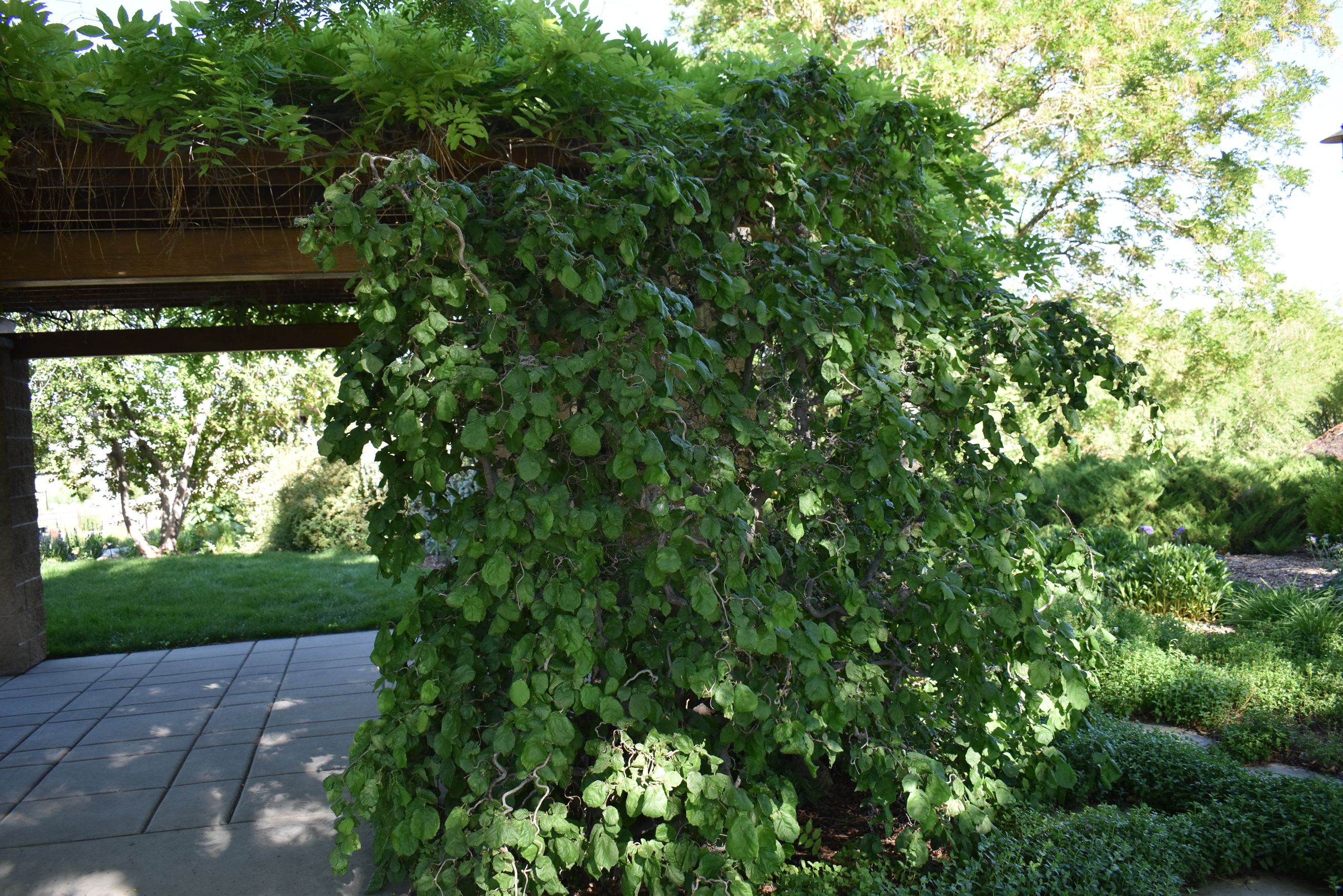
Contorted Filbert Corylus avellana 'Contorta'
Often called Harry Lauder's Walking Stick or Corkscrew Hazel. Features spiraling and twisting branches and shoots which look as good in the winter landscape as they do in floral arrangements. Male flowers consist of creamy yellow and tan catkins that appear in spring, while female flowers are inconspicuous. Not likely to produce nuts. Requires regular watering and occasional pruning.
-
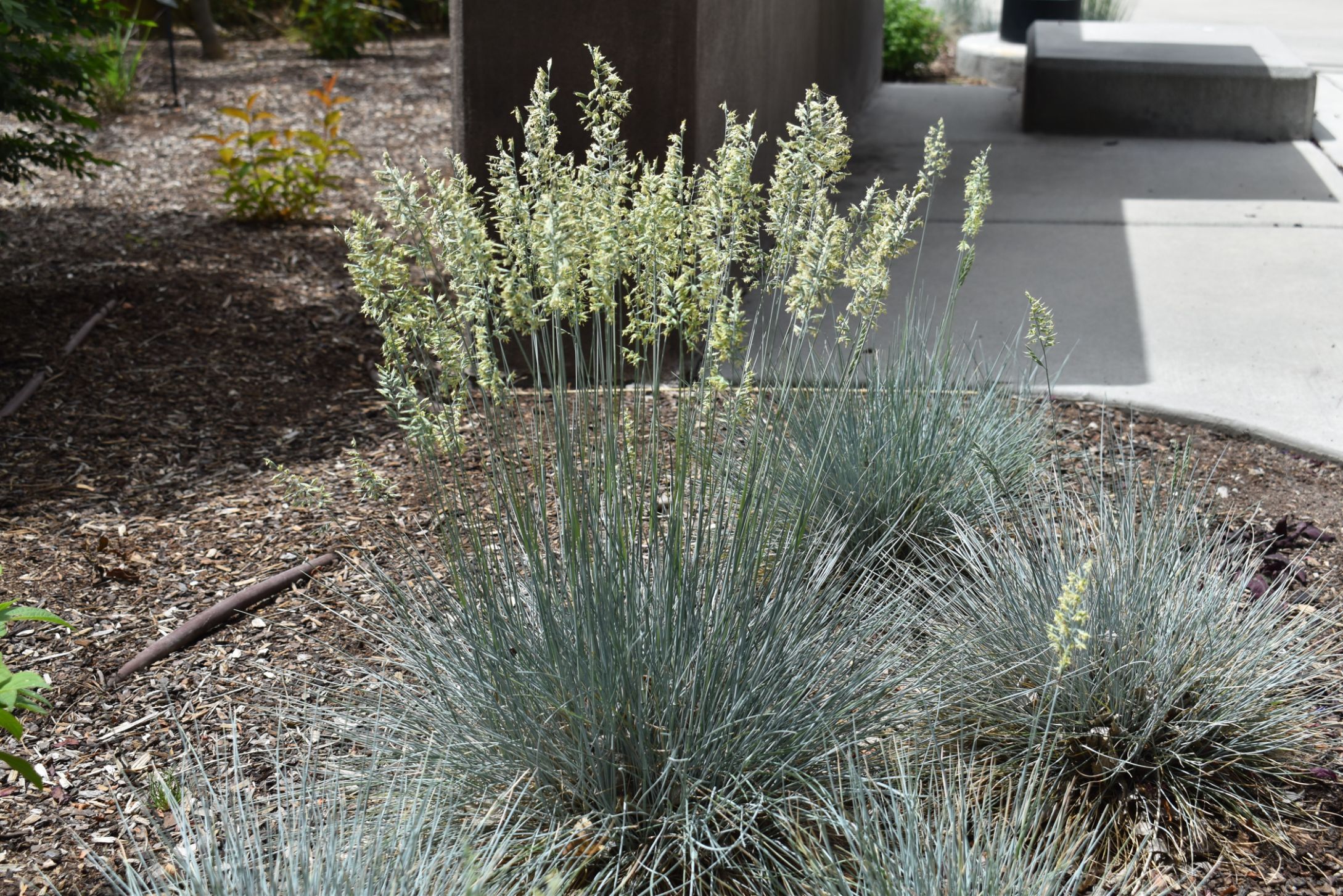
Cool as Ice Blue Fescue Festuca 'Cool as Ice'
Beat the heat with the finely textured, icy blue foliage of this semi-evergreen grass. Seed heads turn blond as they age, providing interesting contrast against the compact mounds of bright foliage. Makes an impact when planted en masse.
-

Copper Curls Tree Lilac Syringa reticulata subsp. pekinensis 'Sundak'
This Lilac tree offers year-round interest. It has orange to coppery colored bark that flakes off in thin, curling sheets. There are fragrant, creamy white flowers that bloom in late spring to early summer and clustered tan fruit in the fall. Fall color is minimal but may show a pale yellow. It is upright and generally oval to rounded in habit.
-

Coral Beauty Cotoneaster Cotoneaster x suecicus 'Coral Beauty'
Low-growing, spreading deciduous shrub with good seasonal interest. Five-petaled white flowers appear in late spring to early summer followed by very attractive bright red berries in the fall. Small, rounded leaves turn red to purple in fall. Evergreen during mild winters. Branches will root where they touch the ground, creating a dense, low-maintenance mat that suppresses weeds.
-

Coral Bells Heuchera sanguinea
Low-growing, clump-forming perennial. Dark green, semi-evergreen leaves are roughly kidney-shaped and mottled with light green. Bears red, pink, or white blossoms in summer on tall stalks above the plant. Many cultivars of this plant are available with varying colors of flowers and leaves.
-
Coral Canyon Twinspur Diascia integerrima 'Coral Canyon'
Long-blooming cold-hardy twinspur with abundant salmon-pink flowers that bloom from mid-spring through frost. Plant Select Winner in 2000. Shows excellent drought and heat tolerance. Fine gray-green foliage forms a compact mound.
-
Coral Carpet Stonecrop Sedum album 'Coral Carpet'
This stonecrop makes a low carpet full of color. New growth comes out coral which matures to green and finally become reddish bronze in winter. Tiny, white to pale pink, star-shaped flowers bloom above the foliage. This evergreen sedum is perfect for mass plantings, rock gardens, in-between steppingstones and areas needing ground cover.
-
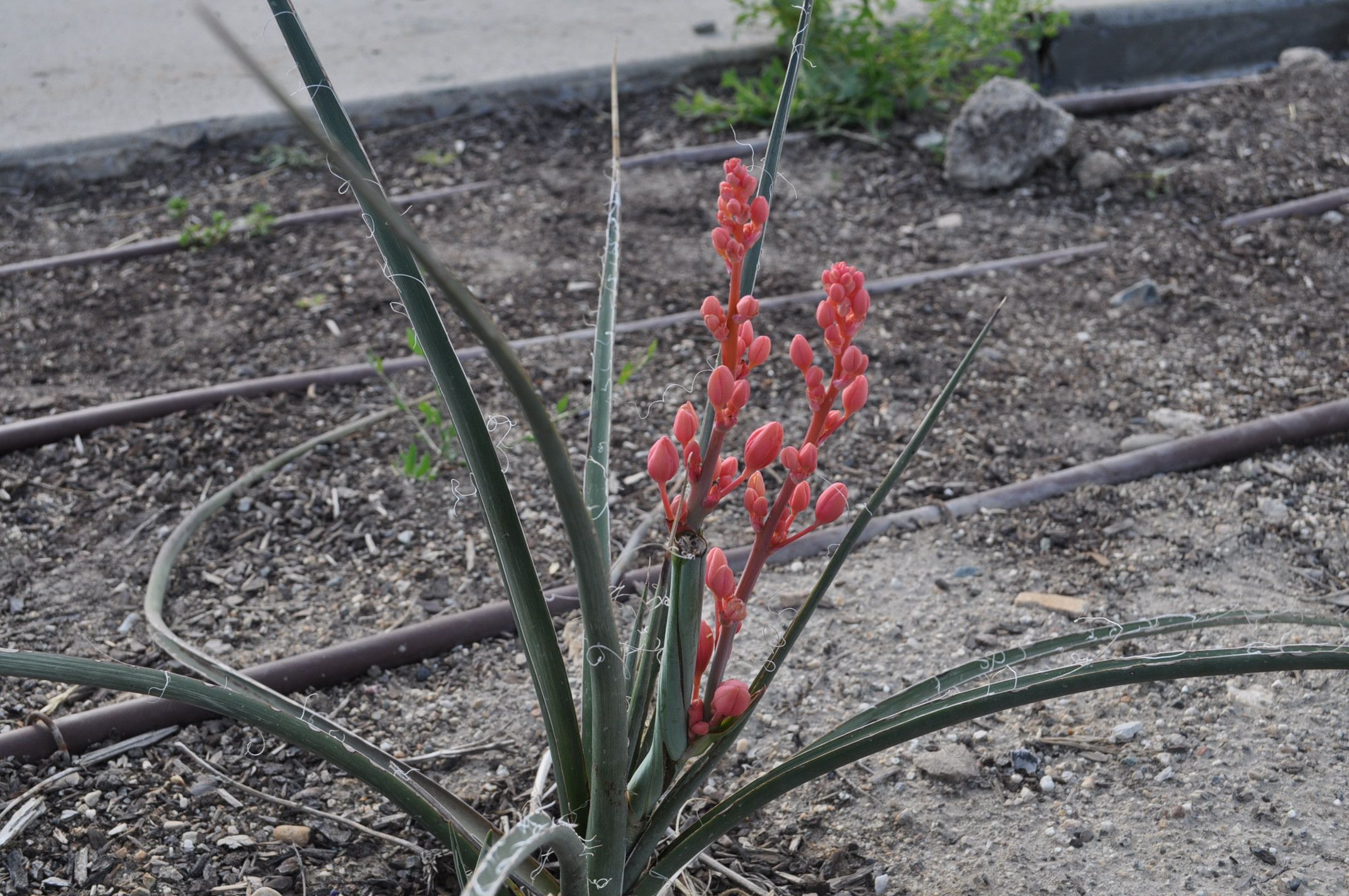
Coral Glow Texas Yucca Hesperaloe parviflora 'Coral Glow'
A cross between the yellow and red flowered Hesperaloes has created a beautiful, long-blooming addition to the landscape. Warm, peachy orange blossoms sit high above the arching, slender, gray green leaves. ‘Coral Glow’ is sure to draw any eye in.
-
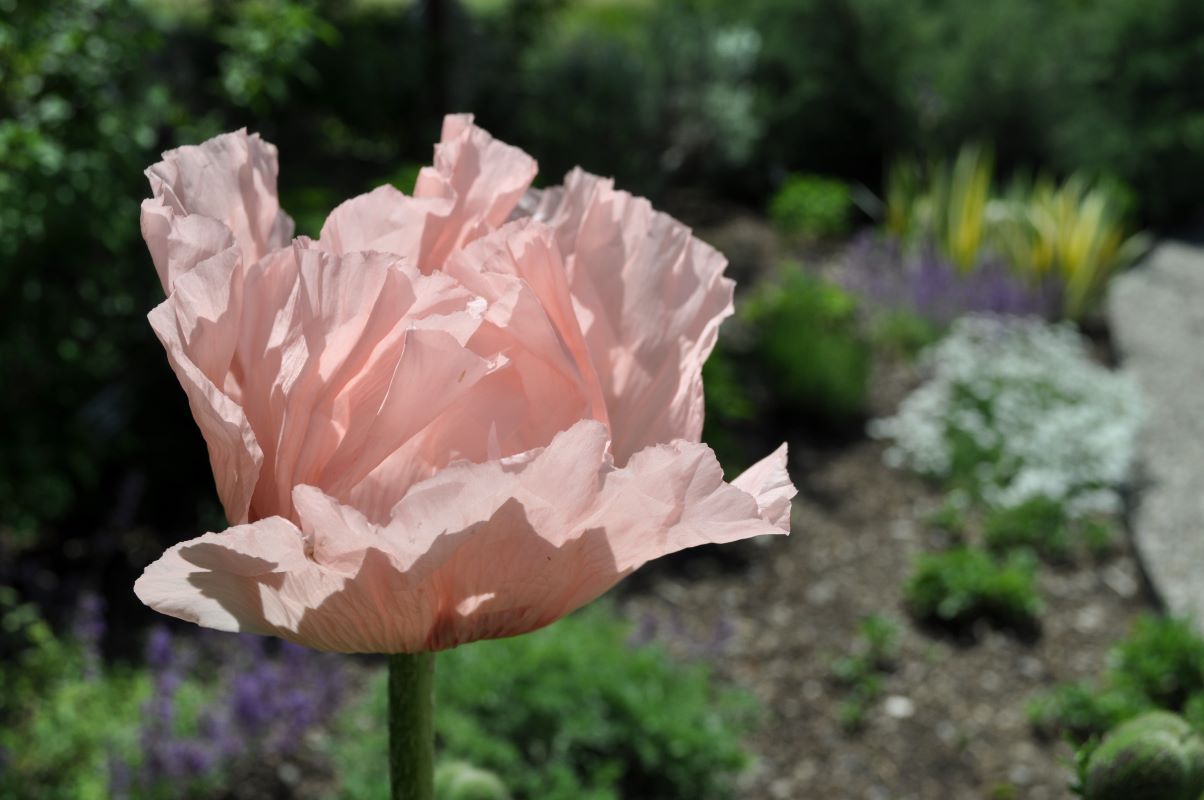
Coral Reef Oriental Poppy Papaver orientale 'Coral Reef'
This clump forming herbaceous perennial blooms with large, graceful, soft pink flowers with dark purple/black centers. It blooms in late-spring to mid-summer. Light green, often hairy leaves are dissected into lance-shaped segments. After flowering the leaves will go dormant but appear again in the fall. Place next to plants that will fill in the gaps left during dormancy.
-
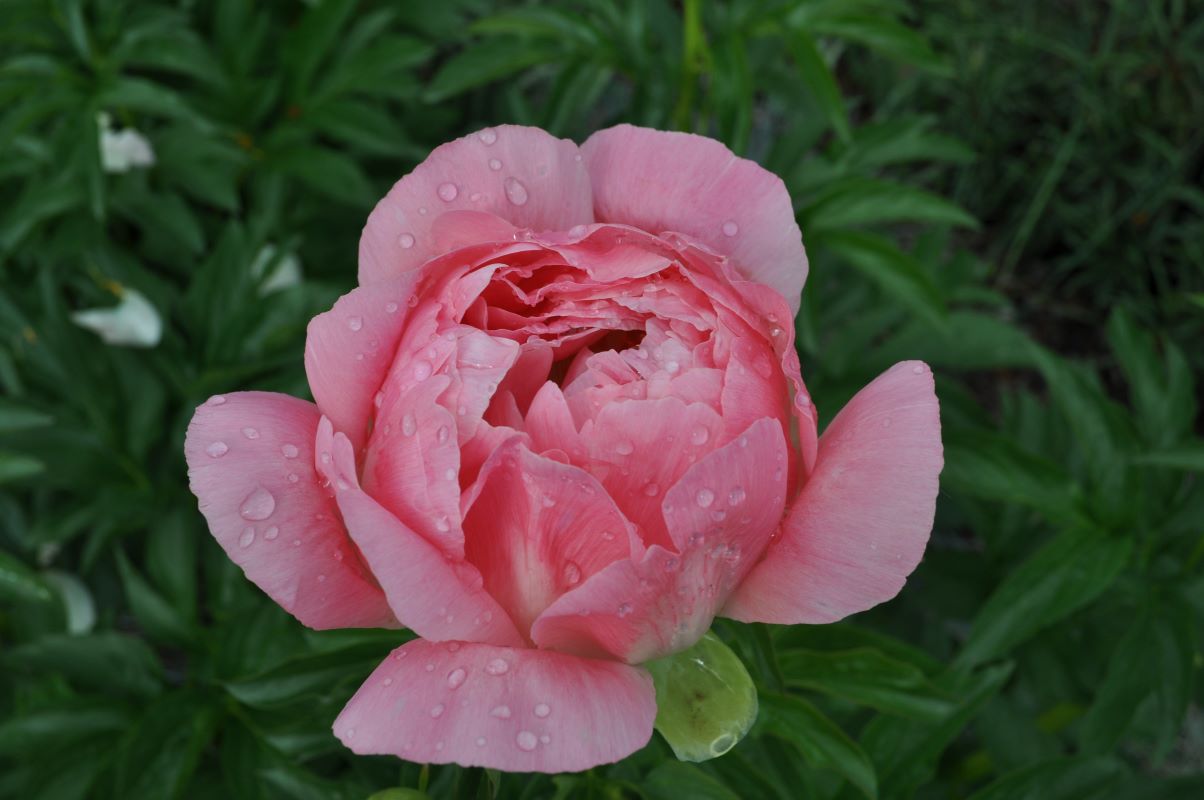
Coral Sunset Peony Paeonia lactiflora 'Coral Sunset'
A large bushy perennial that features large, coral pink flowers with yellow centers. Its fragrant flowers bloom in mid-spring. Glossy, dark green foliage with oval to lance-shaped leaflets grow into the summer, providing a desirable presence long after the blooms have gone.
-

Coronado Hummingbird Mint Agastache aurantiaca 'Coronado'
This southwestern wildflower grows best in full sun to part shade and well drained soil. This variety is one of the smaller of the agastache, peaking at about fifteen inches tall and twelve inches wide. Its blossoms are orange to peach, stained with fiery orange helmets, which are very aromatic. It blooms from late summer into the fall and has silvery leaves.
-
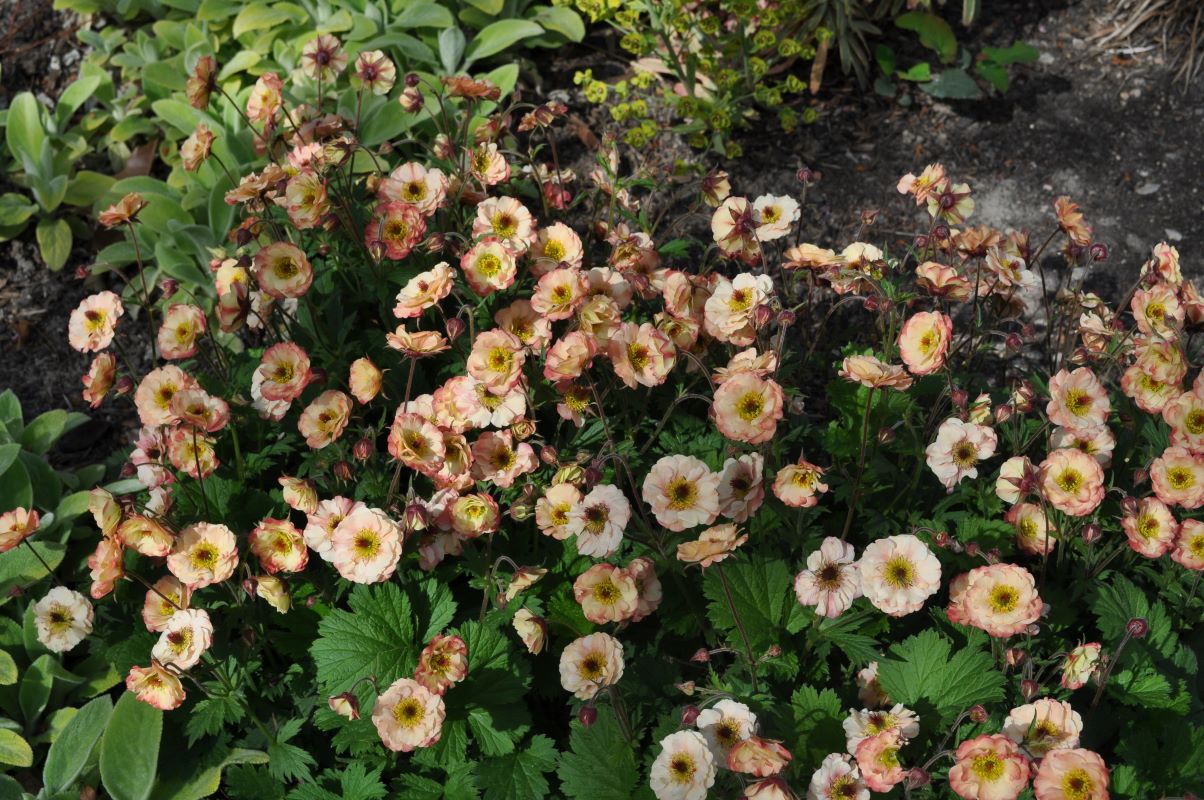
Cosmopolitan Avens Geum 'Cosmopolitan'
This tough perennial grows in mounds of fuzzy green foliage with airy stems loaded with creamy-pink colored flowers appearing in late-spring to early-summer. The flowers of this cultivar have showy double blooms. It prefers moderate amounts of water and will tolerate some shade.
-
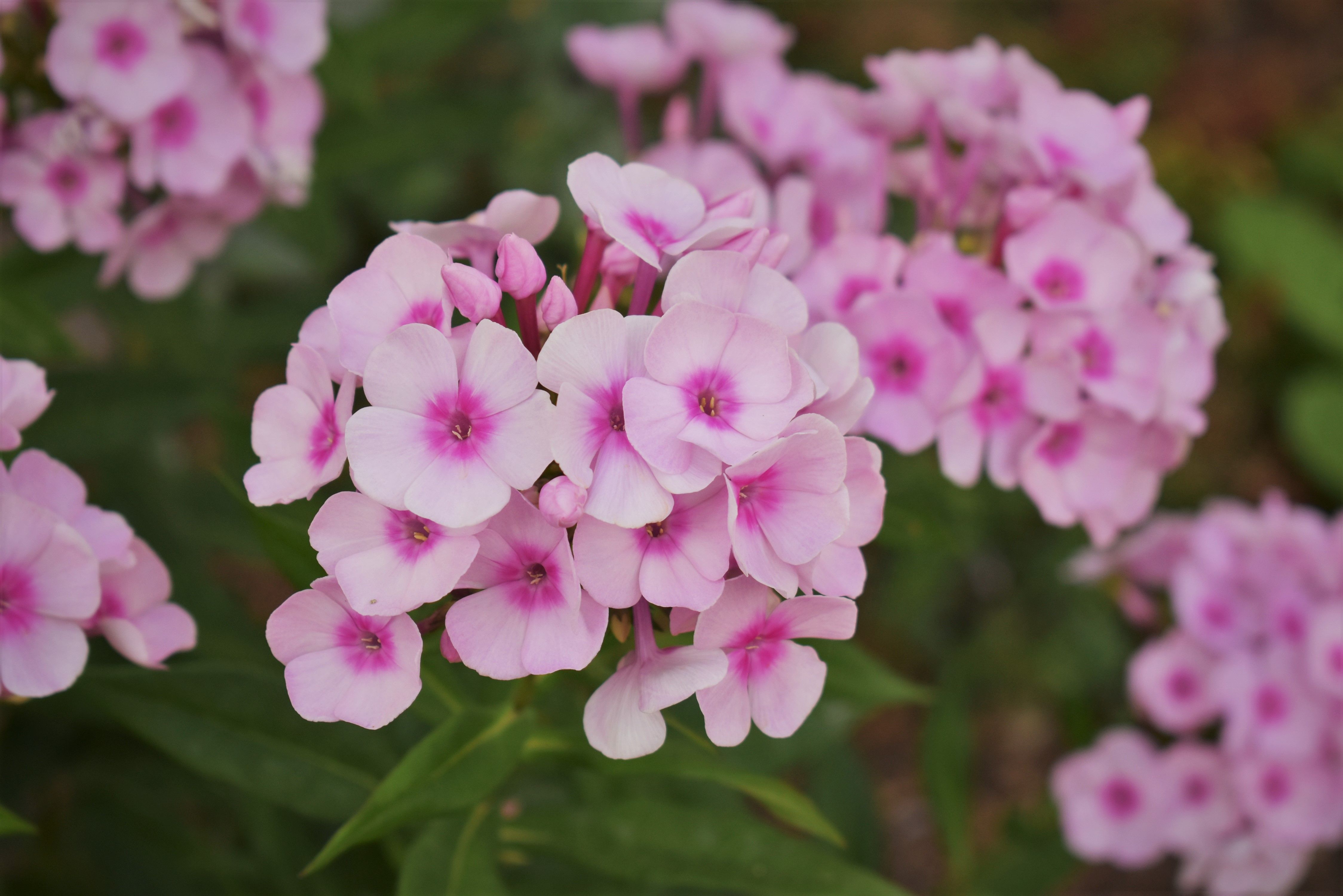
Cotton Candy Garden Phlox Phlox paniculata 'DITOMFAV'
Cotton Candy Garden Phlox brings months of color, with delicate, light pink petals surrounding dark centers that bloom from early summer to fall. These wonderfully scented clumps of flowers will bring light and color to any planting bed or border.
-

Cranberry Cotoneaster Cotoneaster apiculatus
Low-growing, spreading deciduous shrub with good seasonal interest. White-pink flowers appear in early summer followed by very attractive bright red berries in the fall. Small, rounded leaves turn red to purple in fall. Evergreen during mild winters. Branches will root where they touch the ground, creating a dense, low-maintenance mat that suppresses weeds.
-
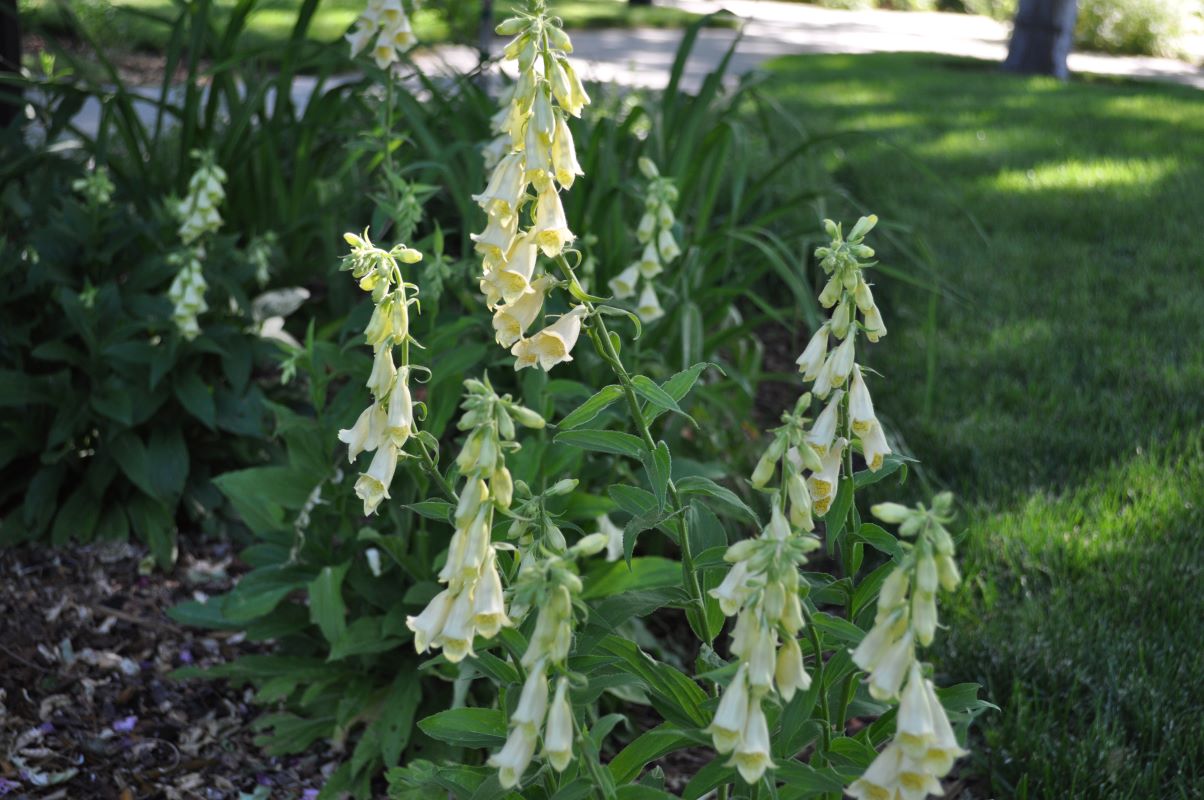
Cream Bell Foxglove Digitalis ambigua 'Cream Bell'
This is a compact, clumping, short-lived perennial. It has medium to dark green leaves in a rosette form at the base with some smaller leaves growing up the flower stocks. Flowers are bell shaped and are a creamy yellow color with brown markings inside. Well drained soil is preferred, but this plant is very tolerant of different soil types. It does not like being super wet or super dry. Caution: this plant is very poisonous to humans and pets if consumed!
-
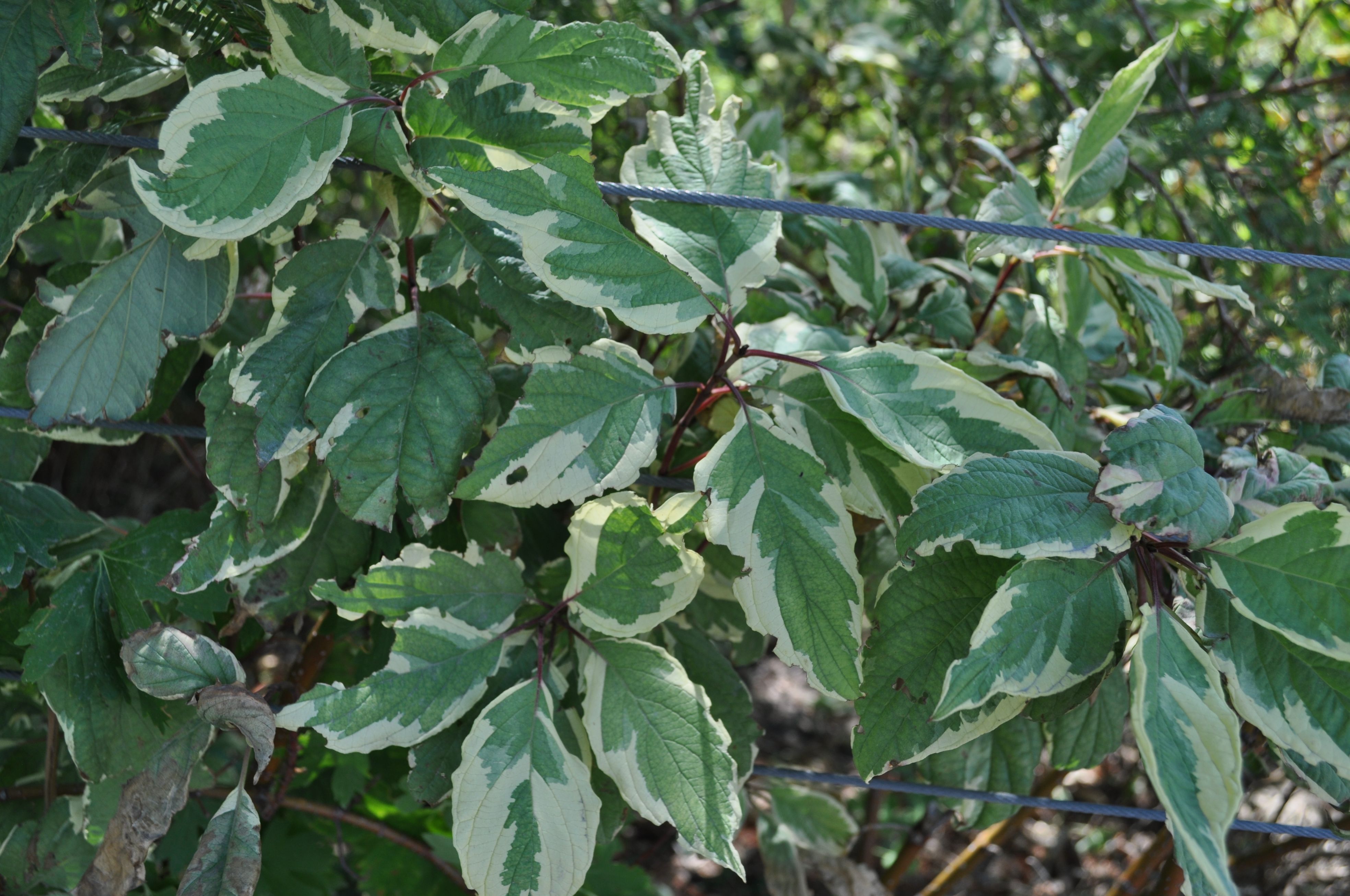
Cream Cracker Dogwood Cornus alba 'Cream Cracker'
Multi-stemmed deciduous shrub with bright green leaves and cream colored margins. Purplish-red stems are very attractive in the winter landscape and stand out well against the snow. Creamy-white flowers bloom in late-spring and lead to small white fruits preferred by birds. Pruning out 20-30% of the oldest branches each year will promote new growth which has better coloring. The species is widespread and native to Utah.
-
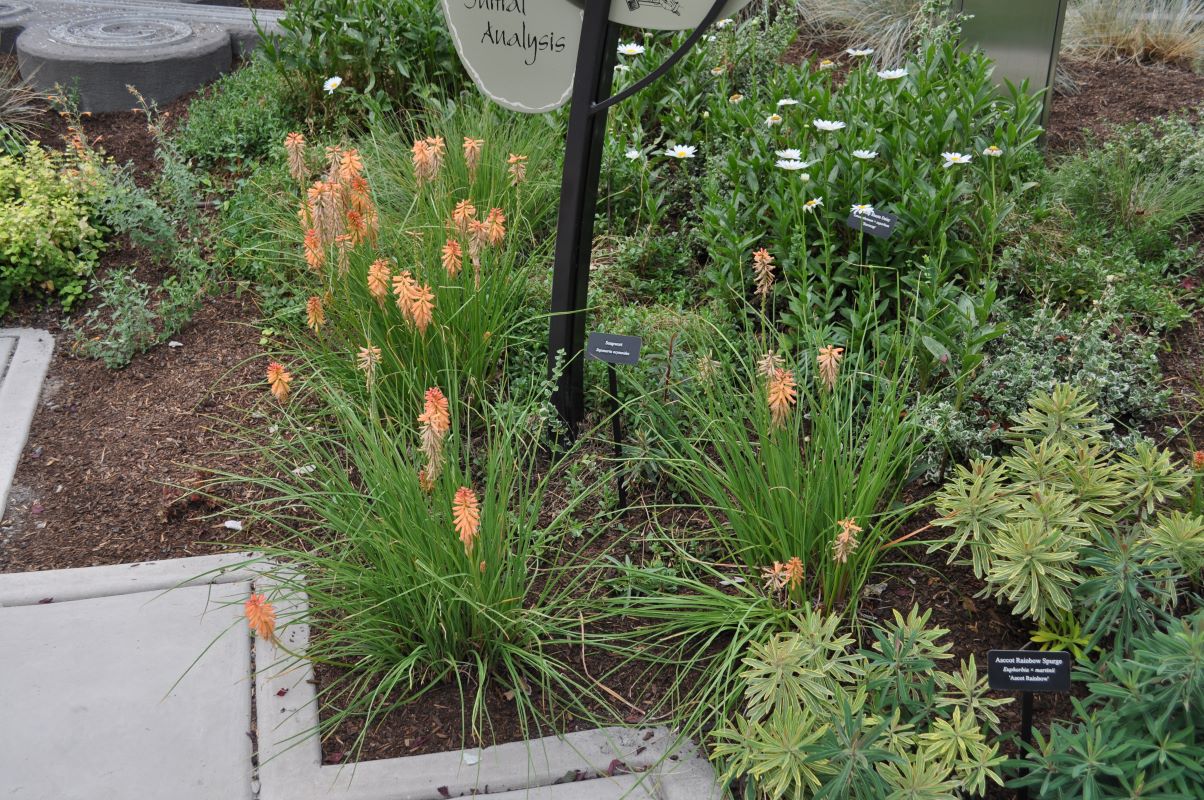
Creamsicle Red-Hot Poker Kniphofia 'Creamsicle'
This perennial grows in a clump, with fleshy, grass-like leaves and clusters of peach to bright orange tubular flowers on top of long stems. The leaves are mid-green and not too showy, but are easy to maintain when not flowering. Red-hot pokers are robust plants that require some water but will handle drought.
-
Creeping Blue Spruce Picea pungens 'Glauca Procumbens'
Creeping evergreen shrub similar in appearance to Picea pungens 'Glauca Pendula' only lower growing. Short, stiff needles have a blue-grey caste and provide great interest in the garden especially if planted near a rock wall where it can drape over it. Grows slowly. Tolerates drought once established.
-
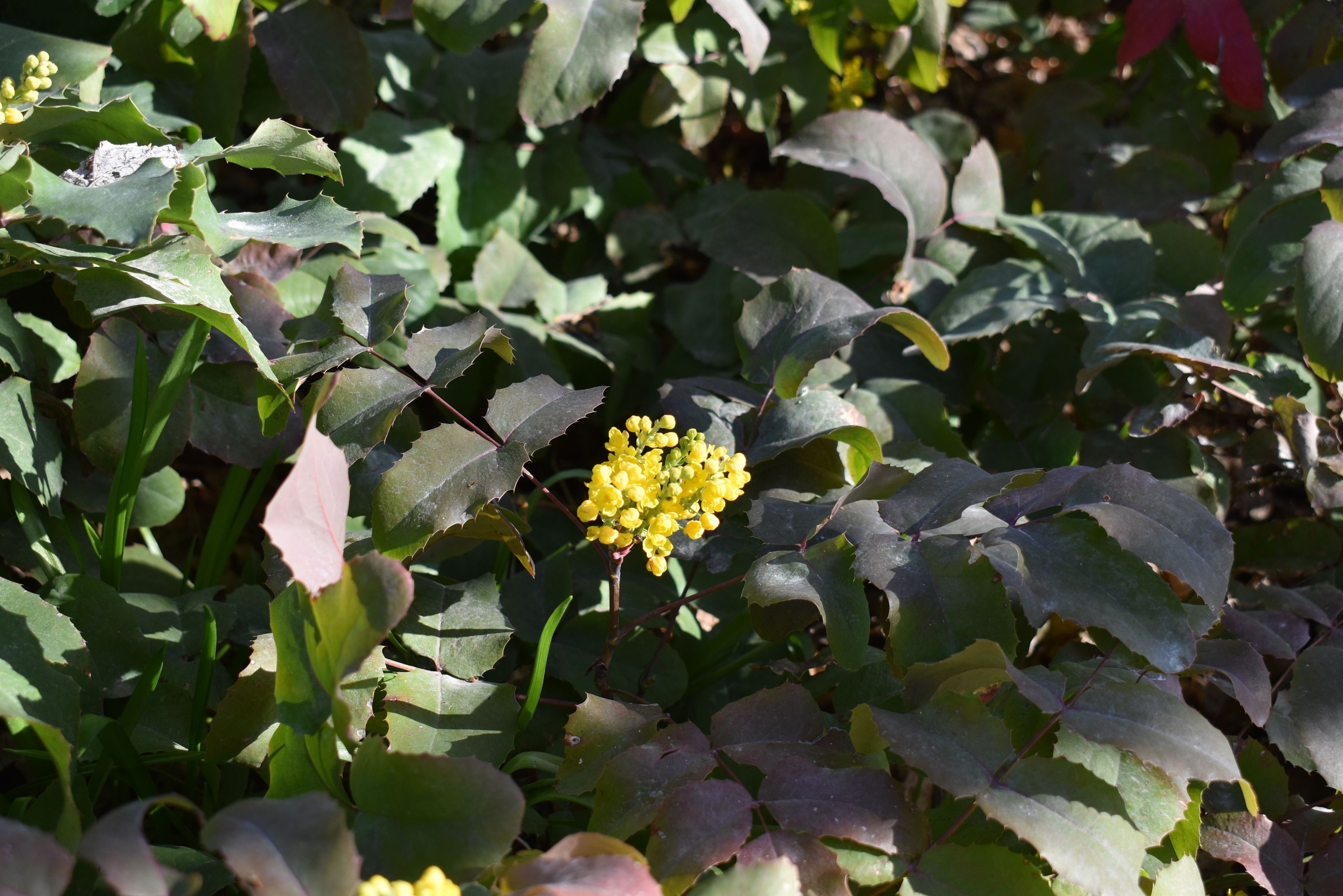
Creeping Oregon Grape Mahonia repens
A native, low-growing broadleaf evergreen shrub that looks great in every season. Dark green holly-like leaves emerge red and turn burgundy during the winter. Bright yellow flowers bloom in spring followed by blue berries. Berries are edible but quite sour. Adaptable to many soil types and does well in full sun or full shade. Reasonably drought tolerant. One of the best choices for problematic dry shade sites.
-

Creeping St. John's Wort Hypericum reptans
Low-growing, mat-forming perennial. Spreading occurs by numerous rooting stems. Elliptic mid-green leaves turn shades of red and yellow in the fall. Many solitary yellow cup-shaped flowers grow throughout the summer. Grows well with moderate to low water in a wide range of soils.
-
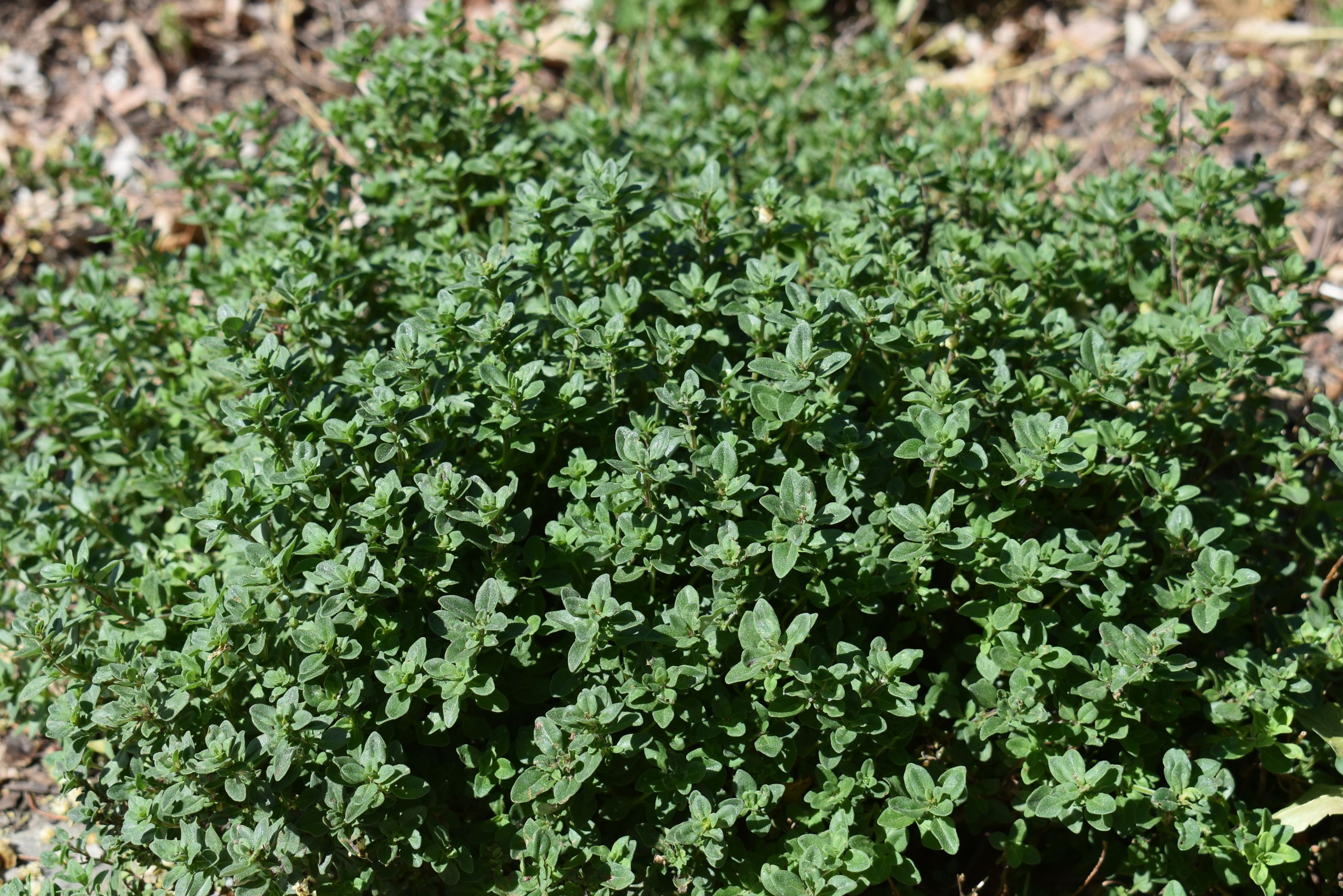
Creeping Thyme Thymus serpyllum
An aromatic woody perennial that forms a mat of semi-evergreen foliage. Tiny blue-green leaves are covered by clusters of tiny pink flowers during the summer. Although creeping thyme is edible, the strength of its aromatic compounds is unreliable, and it is less commonly used for culinary purposes than other varieties. Requires very little water once established.
-
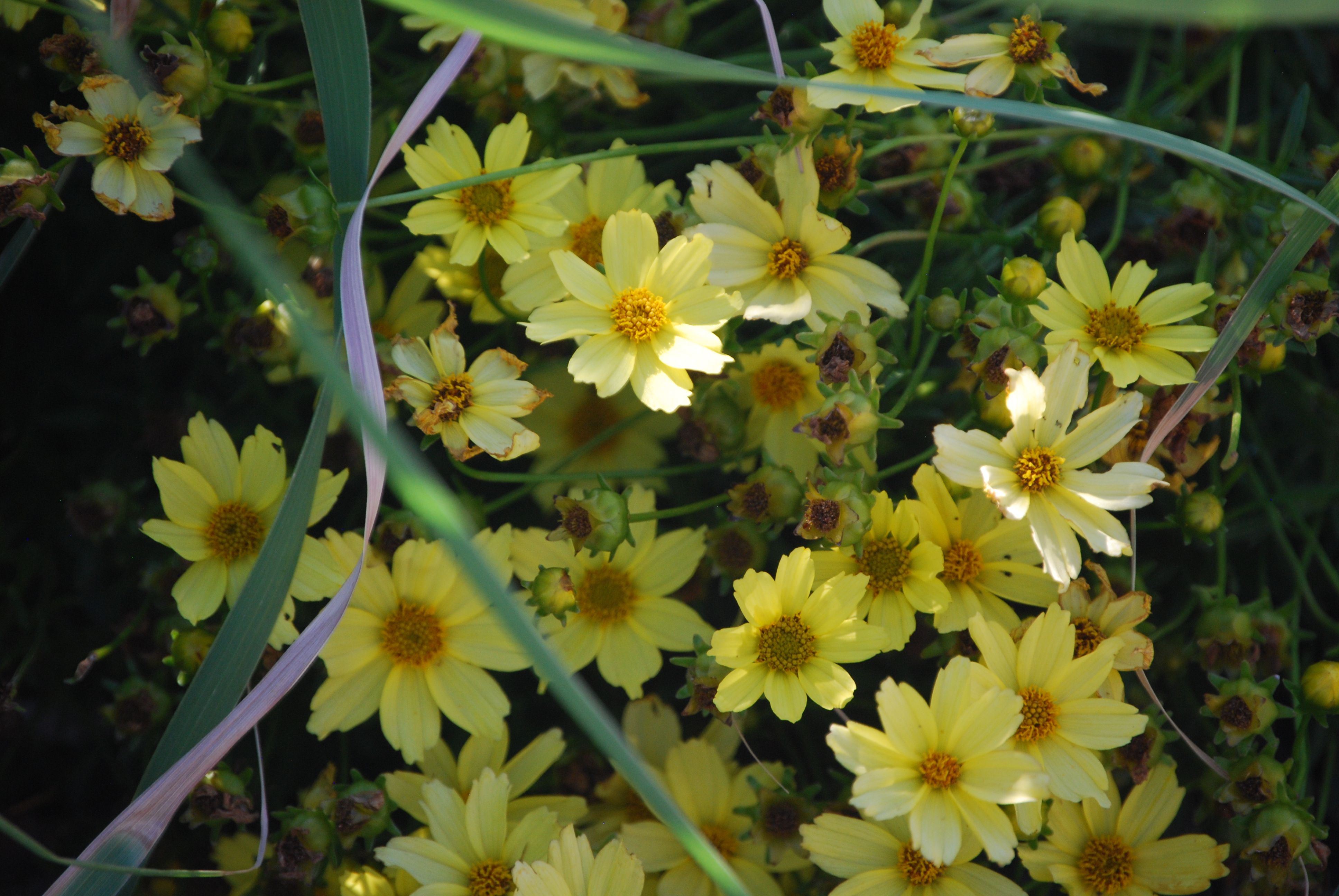
Creme Brulee Coreopsis Coreopsis verticillata 'Crembru'
Yellow flowered perennial with fine-textured foliage. This cultivar is being marketed as an improvement on Moonbeam Coreopsis due to larger yellow flowers, more compact form, and mildew resistance. However, it tends to be short-lived. Tolerates a variety of soil types and conditions including drought. Will spread by rhizomes. Shearing back in August may promote late-fall blooming.
-
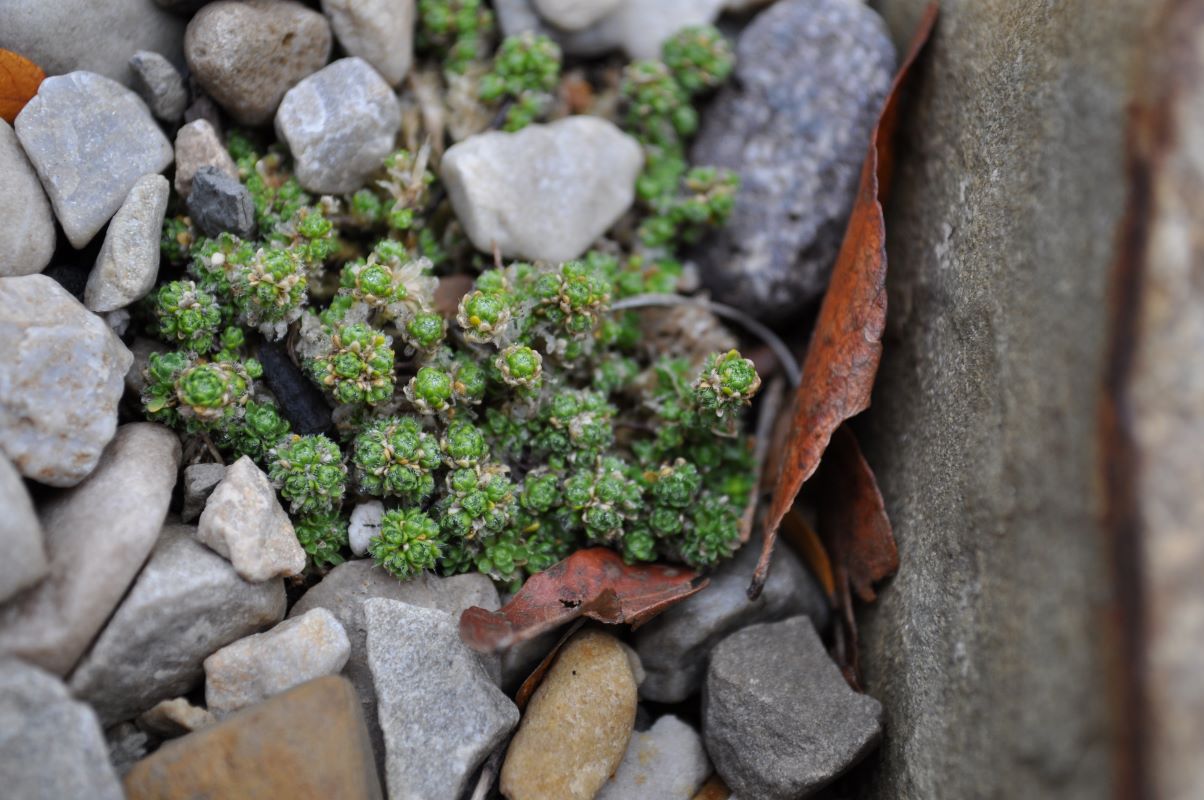
Crevice Pygmy Draba Draba aff bryoides 'Crevice Pygmy'
An extremely tiny cushion of minute leaves producing yellow flowers on short stems. Bryoides means “moss like.” A tough plant perfect for growing between stones in crevice gardens.
-

Crimson Curls Coral Bells Heuchera 'Crimson Curls'
Clump-forming perennial with burgundy to dark-purple, semi-evergreen leaves with reddish undersides and curled edges. Small white flowers grow on airy stalks throughout the summer. Removing spent flowers will promote a second bloom later in the season. Needs moderate amounts of water and fertile soils.
-

Crimson Kisses Weigela Weigela 'Slingco 1'
This small shrub is more compact than the species and reblooms in the summer. Bright red flowers with white eyes appear in spring and again in the summer.
-
Crimson Pointe Flowering Plum Prunus x cerasifera 'Cripoizam'
A columnar, narrow form, this flowering plum has white flowers that coat the branches in spring. The showy foliage is glossy bronze-maroon. Following the white flowers, small edible ornamental fruits carry into summer. Makes a great screening plant for narrow spaces.
-
Crimson Pygmy Japanese Barberry Berberis thunbergii f. atropurpurea 'Atropurpurea Nana'
Dense, low-growing deciduous shrub with many sharp needles. Attractive purplish-red leaves are quite variable in sizes and shapes. Forms inconspicuous yellow flowers that turn to bright red berries that remain until winter. Tolerates urban conditions, poor soils, and some drought. Makes an excellent small hedge.
-

Crimson Sentry Norway Maple Acer platanoides 'Crimson Sentry'
A heavily-branched, columnar tree that fits well into residential gardens or other areas where a smaller tree is desired. The compact, narrow canopy displays deep purple leaves that become maroon to reddish-bronze in fall. Excellent where a vertical accent is needed or a specimen tree. Plant where air circulation is good and sprinklers do not hit the leaves as powdery mildew can be a problem.
-
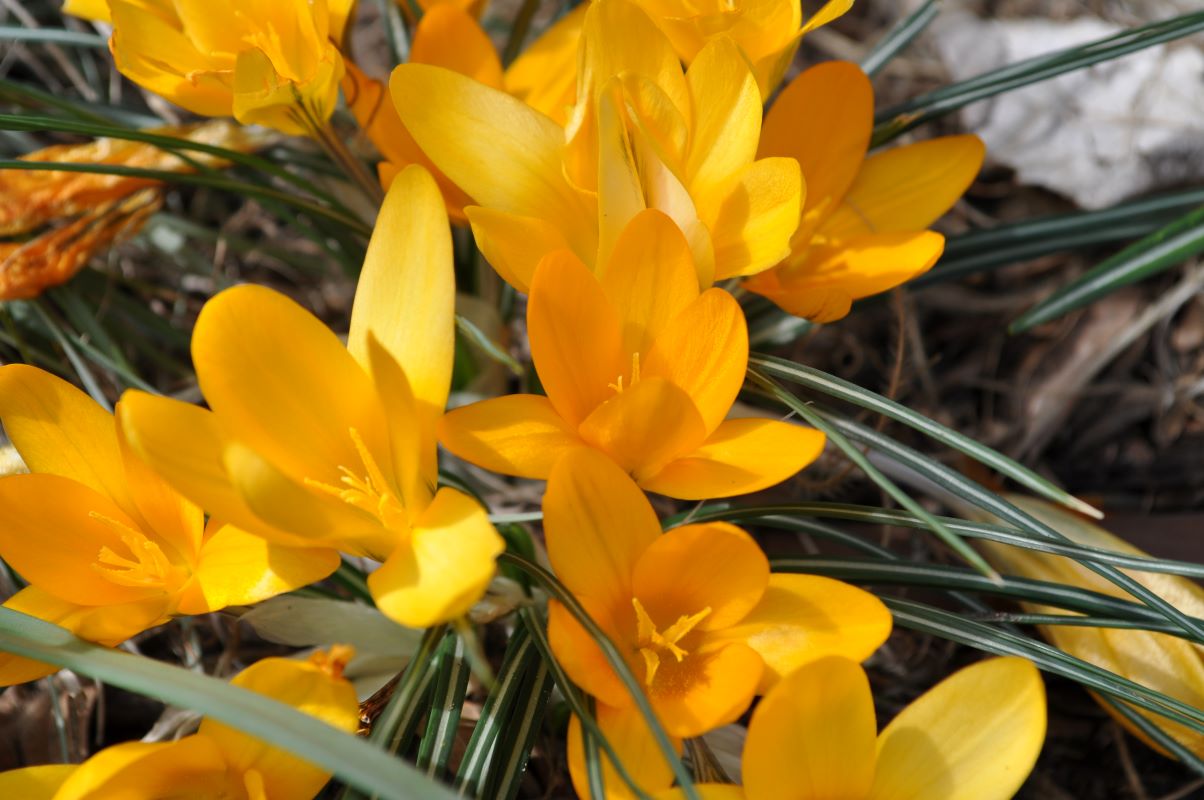
Crocus Crocus spp.
This small flower is one of the first bloomers of spring. Large white, purple or yellow cup shaped flowers grow over grass-like leaves with white midribs. Plant in fall. Species at the garden include Snow Crocus (Crocus chrysanthus) and Spring Crocus (Crocus vernus).
-

Cruizin' Electric Avenue Coreopsis Coreopsis verticillata 'Electric Avenue'
Yellow flowered perennial with fine-textured foliage. Tolerates a variety of soil types and conditions including drought. Will spread by rhizomes. Shearing back in August may promote late-fall blooming.
-

Cruizin' Main Street Coreopsis Coreopsis verticillata 'Main Street'
Delicate perennial. Fine-textured foliage and airy thin petals. The summer-blooming flowers on this perennial feature red petals with pink edges and orange centers. The foliage forms an attractive mound of thread-like leaves.
-

CRYSTAL FROST Arizona Cypress Hesperocyparis arizonica 'Fandango'
This little-known cultivar of Arizona Cypress, raised by Allan Taylor, shows some promising characteristics for use in the landscape. The flat branches of evergreen scale-like leaves are a striking, icy pale blue. The Conservation Garden Park is trying it out to see if it is adaptable to the Salt Lake Valley. The species is originally native to Arizona. ‘Fandango’ may not be widely available for purchase, but other cultivars show similar potential.
-
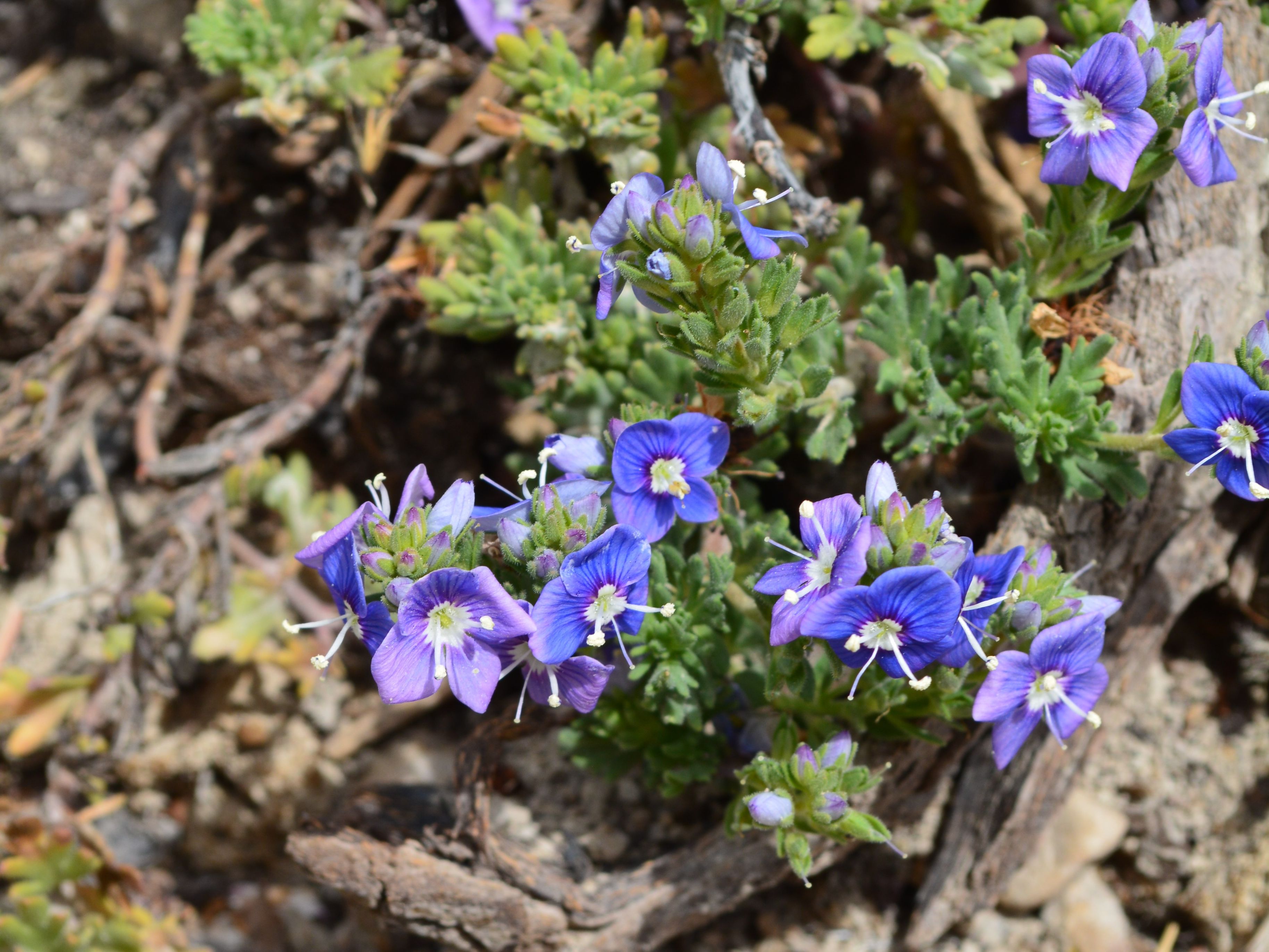
Crystal River Speedwell Veronica 'Reavis'
A low-growing hybrid of Turkish speedwell and woolly speedwell, this vigorous groundcover forms a dense mat of dark green foliage. Bright purple blue flowers cover the plant in mid to late spring.
-
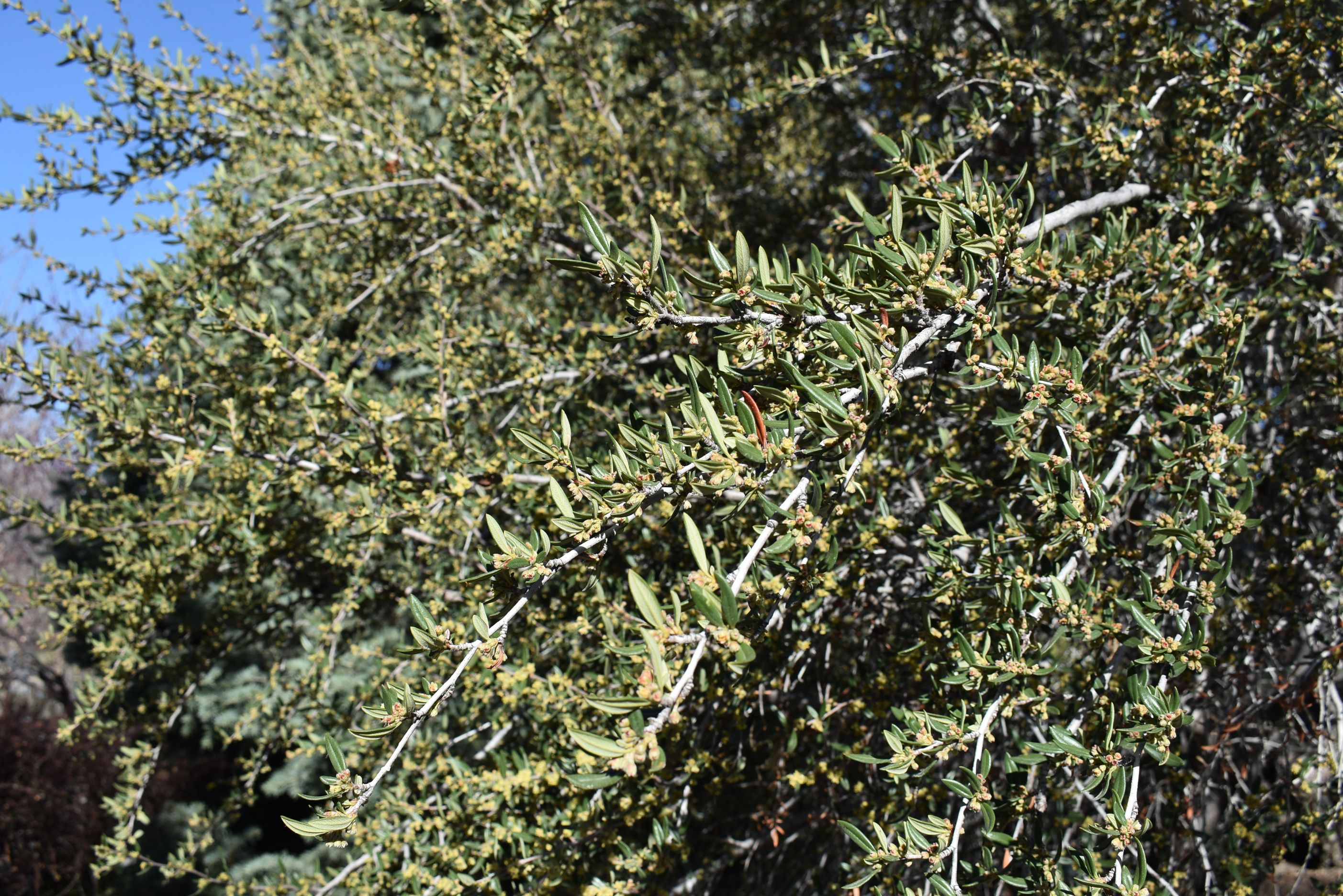
Curl-leaf Mountain Mahogany Cercocarpus ledifolius
A long-lived, evergreen, multi-stemmed, woody shrub or small tree to fifteen feet. Has leathery, glossy dark green foliage and aromatic reddish-brown bark. Flowers are white, small and insignificant, appearing in early summer. Long, twisted, plume-tailed fruit comes in fall. Very drought tolerant.
-

Curlicue Sage Artemisia versicolor 'Seafoam'
Compact herbaceous perennial with handsome grey-green foliage. Finely-textured leaves have a unique frothy appearance. Blooms occasionally but is best used for its outstanding foliar characteristics. Adds interest to any perennial garden. Grows best in full sun.
-
Curly Leaved Parsley Petroselinum crispum var. crispum
Parsley has been a popular and well-known culinary herb since the Middle Ages. Its flavorful, dark green leaves are rich in vitamins and frequently used as a garnish. This is a biennial plant, meaning it typically grows for two years, but it often reseeds year after year. It is a good choice for growing in containers and can even be kept indoors in pots year-round. This frilly-leaved variety can make an interesting addition to ornamental plantings.
-

Cushion Spurge Euphorbia polychroma
This clump-forming perennial produces abundant bright-yellow flowers in spring. The stems are softly-hairy, and the dark-green leaves turn red-purple to orange. Prefers light, well-drained soils. Great for border plantings.
-

Cutleaf Elderberry Sambucus nigra f. laciniata
Large upright deciduous shrub native to parts of northeastern United States. Tiny white flowers appear in spring followed by purple-black berries. Bright green foliage is highly ornamental as well. Berries are edible and are used in jams, jellies, and wines. Stems and leaves are mildly toxic. Prefers regular watering but will adapt to less.
-
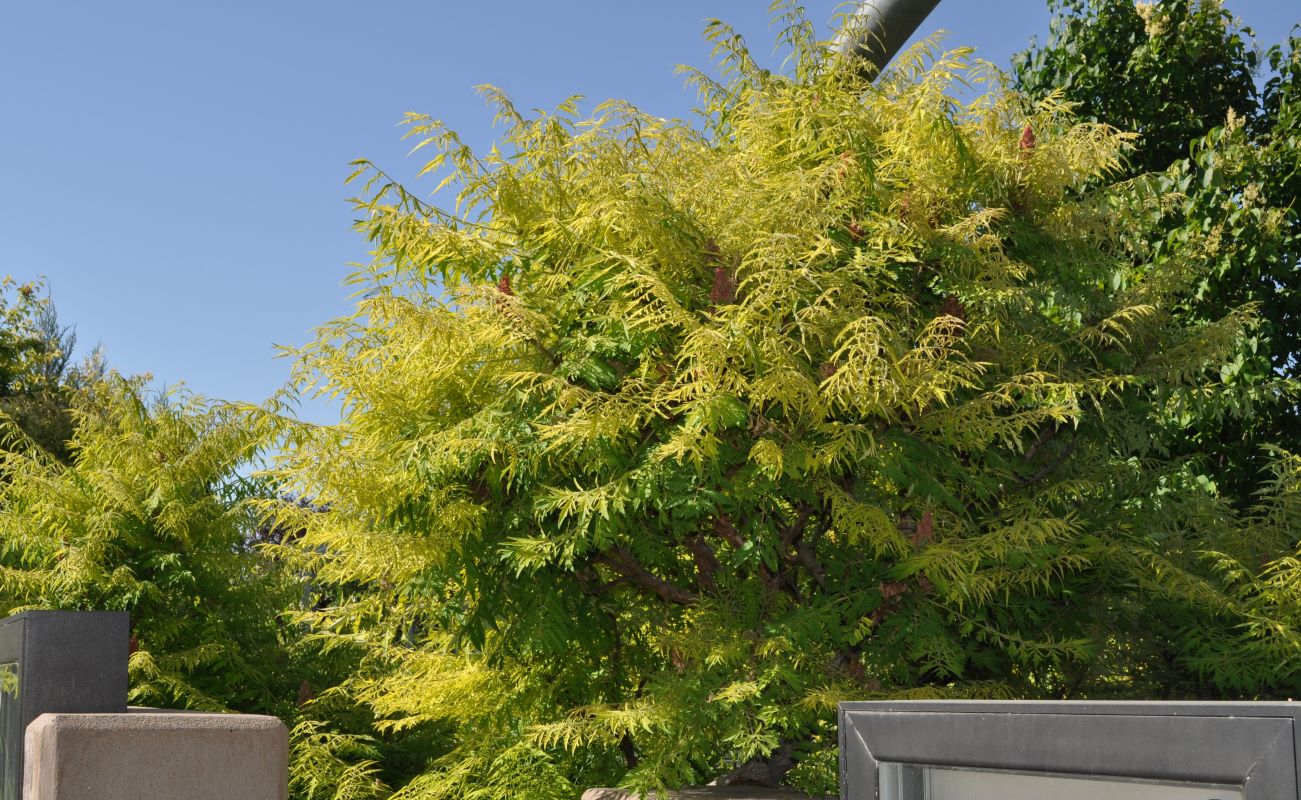
Cutleaf Staghorn Sumac Rhus typhina 'Laciniata'
Large deciduous shrub that often grows in colonies. This variety has leaves that are highly dissected and have a lacy appearance. Autumn brings out bright red, orange and yellow coloring in the leaves. Panicles of white flowers bloom in early spring leading to clusters of fuzzy red berries. A great choice for massed plantings, allow room to grow and spread. Tolerates drought and poor soils.
-

Cabaret Japanese Silver Grass
Japanese silver grass is a clump-forming warm season grass that typically grows in the lowlands and lower alpine areas in Japan, Korea and China. This grass features a dense clump of upward-arching stems and leaves which give it a rounded, fountain-like appearance. Leaves are quite with showy rich green broad blades and conspicuous milky-white stripes. Copper-colored plumes appear above the foliage in early fall, age to a cream color on stems that blush pink as they mature. Can be a focal point for it's shape and variegated leaves.
Miscanthus sinensis 'Cabaret'
Mature Size: 6-7' tall x 3-4' wide
-

Calamint
An unfussy European perennial with airy stems of small green leaves and long-blooming tiny white flowers. The minty fragrance repels deer and attracts pollinators. Tends to reseed and naturalize.
Calamintha nepeta
Mature Size: 12-18" tall x 12-24" wide
-

California Poppy
This California state flower is known for covering hillsides and large open spaces with vivid orange, wispy, dainty cup-shaped blossoms that sit on tall, slender stems. Underneath the flowers is a carpet of loosely growing stems covered in fern-like blue-green foliage. Once the flowers are spent, the foliage will take on a straw-brown color. In our cooler climate it may act as a short-lived perennial. With that said, it happily seeds itself around, making it great for meandering through planting beds and adding bursts of color for many years to come.
Eschscholzia californica
Mature Size: 12-18" tall and wide
-

Canada Red Chokecherry
Medium to small deciduous tree available in single or multi-stemmed forms. Leaves emerge green and mature to dark purple by early summer. Clusters of pure white flowers bloom in spring eventually becoming small, bright-red, astringent fruits that make excellent jellies and jams. Prefers to grow as a multi-stemmed tree and quickly grows suckers at the tree base. Tolerates a wide range of soils.
Prunus virginiana 'Schubert'
Mature Size: 20-30' tall x 15-20' wide
-
Canadale Gold Wintercreeper
Mounding, broad-leaf evergreen shrub. Rounded leaves have dark-green centers with bright yellow to golden edges. Makes an excellent hedge or border plant. Annual pruning is required to maintain a good shape.
Euonymus fortunei 'Canadale Gold'
Mature Size: 3-4' tall and wide
-

Candied Apple Crabapple
Weeping deciduous tree. Profuse bright-pink flowers bloom in spring followed by bright red fruit that persists on the tree until December. Leaves emerge with reddish tints and turn green in the summer. This variety is resistant to many diseases.
Malus 'Weepcanzam'
Mature Size: 10-15' tall x 15' wide
-

Candy Coralberry
A shrub that will provide color and interest during the cold winters. Summertime will bring dainty, pink flowers that eventually ripen into distinctive pearl-like berries. When many other flowers and leaves have faded in winter, the Candy Coralberry shows off with its long arching stems covered in light pink to pink decorative berries.
Symphoricarpos x doorenbosii 'Kolmcan'
Mature Size: 2-2.5' tall x 2.5-3' wide
-

Candy Crisp Apple
A Stark Brother’s exclusive, this apple tree will produce large, golden yellow, sweet tasting apples. This vigorous, upright tree is cold hardy and can produce a lot of fruit each year. Best pollinators include the Grand Gala apple and Cortland apple. The fruit ripens in October and can last up to 4 months in storage.
Malus domestica 'Candy Crisp'
Mature Size: 12-15' tall and wide
-

Candy Stripes Creeping Phlox
Perennial groundcover. Spreads low to the ground and creates a blooming carpet. Flowers are white with pink stripes down the center of each petal. Evergreen foliage grows nice on slopes, in rocks, and as a border.
Phlox subulata 'Candy Stripes'
Mature Size: 6" tall x 36" wide
-

Candytuft
A diminutive rock garden plant. It makes a small mound of dark green foliage with white blooms, at time tinged with lavender purple.
Iberis taurica
Mature Size: 6" tall x 12" wide
-

Caramba Shrub Rose
A long-blooming shrub rose that works great as a groundcover. Orange-red flowers begin in early summer and bloom throughout the season. This rose is highly disease and pest resistant.
Rosa 'Tanamabar'
Mature Size: 2' tall x 3' wide
-
Caramel Coral Bells
This perennial forms clumps of lobed, semi-evergreen leaves that mature to a golden-yellow with apricot highlights. Small pink flowers bloom in late-spring to early-summer on tall, airy stems. It prefers organic soils with moderate amounts of moisture. Too much drought and heat can cause the foliage to decline through the summer.
Heuchera 'Caramel'
Mature Size: 8-18" tall x 12-24" wide
-

Cardinal Penstemon
Herbaceous perennial with upright stems native to Texas and New Mexico. Lance-shaped green leaves are well-adapted to its native habitat. Dark red flowers grow on upright stems throughout the summer. Grows naturally in rocky and hot sites. Requires well-drained soil. Seldom used but is available for residential use.
Penstemon cardinalis
Mature Size: 36" tall x 24" wide
-

Cardinal Red Twig Dogwood
Multi-stemmed, spreading deciduous shrub with showy bright red stems that are very attractive during the winter. Bright green leaves turn pretty shades of red and purple. White to cream flowers bloom in spring turning to white berries that are preferred by birds. Prune out 20-30% of the oldest growth each spring to promote healthy new growth with brighter coloring. The species, Cornus sericea, is synonymous with C. stolonifera and is native to Utah.
Cornus sericea 'Cardinal'
Mature Size: 6-8' tall x 8-12' wide
-
Carnaby Clematis
The Carnaby Clematis a climbing vine. It is light pink with a darker stripe down the center of each petal which surround a dark pink tuft in the middle of each bloom. These flowers can range from 6-8 inches across and bloom twice a year, once in the late spring to early summer, then again in the late summer to early fall. This plant grows tall quickly. They grow best if their roots are cooler so cover the ground with other plants or mulch for best vine growth.
Clematis 'Carnaby'
Mature Size: 6-8' long
-

Carnival Limeade Coral Bells
Tight mounds of vibrant lime green foliage create beautiful contrast for the delicate sprays of tiny white flowers and other surrounding plants. The ruffled, semi-evergreen leaves have subtle silver and dark green accents that make each leaf unique.
Heuchera 'Carnival Limeade'
Mature Size: 10-12" tall x 12-14" wide
-

Carnival Watermelon Coral Bells
This heat tolerant perennial grows mounds of lobed, purple, semi-evergreen leaves with silver markings. It prefers growing in the shade, but can handle some sun. Pink flowers bloom in the spring, but the leaves are its best feature.
Heuchera x villosa 'Carnival Watermelon'
Mature Size: 10-12" tall x 14-16" wide
-
Carol Mackie Daphne
This small shrub sports variegated leaves, green with creamy yellow edges, that look great year-round. Clouds of pink, aromatic flowers bloom in the spring. It requires little maintenance once established. Do not attempt to move them once established as it hates to be transplanted.
Daphne x burkwoodii 'Carol Mackie'
Mature Size: 2-3' tall x 3-4' wide
-
Carolyn's Hope Penstemon
This hybrid penstemon blooms with pink tubular flowers with striped throats throughout the summer. Its leaves are narrow and glossy green and form an attractive mound. This was developed by Brian Core to honor his wife and in support of breast cancer research.
Penstemon x mexicali 'Carolyn's Hope'
Mature Size: 15" tall x 12" wide
-
Carsten's Wintergold Mugo Pine
Medium to large rounded to spreading evergreen shrub. Spreading branches are scaly and gray. Golden-green needles are born in pairs and grow up to three inches long. Bears dark brown female cones. May require some pruning to shape, simply prune the new growth or "candles." Tolerant of many soil types. Needs well drained soils and fairly drought tolerant.
Pinus mugo 'Carsten's Wintergold'
Mature Size: 12-24" tall and wide
-
Cascade Purple Rock Cress
Semi-evergreen perennial ground cover. Forms an attractive dense mat of silvery-green foliage. Spring brings abundant brilliant purple flowers. Ideal choice for rock gardens. Prefers compost enriched soil and regular amounts of water.
Aubrieta 'Cascade Purple'
Mature Size: 3" tall x 15" wide
-

Cat's Meow Catmint
A tidy and uniform catmint sporting dense, long blooming spikes of beautiful purple-blue flowers. The aromatic gray-green leaves form round, spreading clumps that have less of a tendency to flop compared to other catmints. Drought tolerant, deer resistant, and wonderfully low maintenance.
Nepeta faassenii 'Cat's Meow'
Mature Size: 17-20" tall x 24-36" wide
-

Cat's Pajamas Catmint
A small statured catmint that blooms earlier than other varieties in displays of indigo to purple blossoms. Upright stems are covered from soil level to the tip of the stalk in these dainty flowers. As the lowers begin to fade, rosy purple calyxes shine through and provide interest farther into the season. The seeds are sterile.
Nepeta x faassenii 'Cat's Pajamas'
Mature Size: 12-14" tall x 18-20" wide
-

Catalpa
Large deciduous tree occasionally growing to 90 feet. Large heart shaped leaves are light green. Abundant white flowers bloom in spring turning to elongated seed pods. Tolerant of dry and poor sites. Plant in areas with plenty of room to spread.
Catalpa speciosa
Mature Size: 50' tall x 35-40' wide
-

Celebrity Elite Daylily
Tall herbaceous perennial with red summer-blooming flowers with yellow throats. Foliage is long and drooping with grasslike blades about one inch wide. Easily grown in a wide range of conditions. As suggested by the name, flowers last one day but are produced over a long period of time. Divide every three to five years to maintain vigor.
Hemerocallis 'Celebrity Elite'
Mature Size: 2-3' tall x 2' wide
-

Chanticleer Flowering Pear
Narrow and tightly growing deciduous tree with profuse, pure-white flowers blooming in early spring. Glossy green leaves turn gold to red in the fall. This variety is considered one of the best varieties of the species due to its more sturdy branching and disease resisitance. May still require early pruning to promote strong branching. Once established, it can handle periods of drought. Produces small inedible fruit that persists on the tree.
Pyrus calleryana 'Chanticleer'
Mature Size: 35-40' tall x 15-20' wide
-
Chaparral Weeping Mulberry
Small deciduous tree with weeping form. Branches drape to the ground creating a unique and attractive form. Flowers are whitish green and insignificant. Large glossy leaves turn yellow in the autumn. This cultivar is fruitless and creates less of a mess than fruited varieties. Prefers moderate amounts of water but adapts well to many different soil types.
Morus alba 'Chaparral'
Mature Size: 6-12' tall x 8-12' wide
-
Charles Joly Lilac
Large upright growing deciduous shrub. Panicles of fragrant reddish-purple flowers bloom in spring. Green cordate leaves have no fall color. Tolerates many soil types but no extremes. Quite drought tolerant once established.
Syringa vulgaris 'Charles Joly'
Mature Size: 8-15' tall x 6-12' wide
-

Cherry Garden Bearded Iris
This perennial can bring a dramatic burst of color into any garden with its wine-red petals and purple-blue beards. This shorter Iris is perfect for a sunny border or a snug spot in a rock garden. They enjoy full to part sun, and bloom in the early spring.
Iris 'Cherry Garden'
Mature Size: 6-8" tall and wide
-

Cheviot Sun Rose
Low-growing evergreen groundcover. Small, silvery green, lance-shaped leaves are downy. Bears profuse pale peach rose-shaped flowers in late-spring to early-summer. Grows well as a groundcover or in rock gardens. Presents a very stunning show when covered with flowers.
Helianthemum 'Cheviot'
Mature Size: 12" tall x 24" wide
-

Cheyenne Mock Orange
2001 Plant Select winner. Spreading deciduous shrub selection developed at the Cheyenne Research Center in WY. Profuse fragrant white flowers bloom in late spring to early summer. Arching branches bear bright green finely toothed leaves. Plant in enriched soils and water deeply but infrequently once established.
Philadelphus lewisii 'Cheyenne'
Mature Size: 6-9' tall x 5-8' wide
-

Cheyenne Spirit Coneflower
Summer and fall blooming flowers grace this coneflower in multiple colors ranging from red, orange, pink, yellow and creamy white. Outside of the bloom season, dark green leaves on sturdy stems form attractive clumps. It is tolerant of drought and heavy soils.
Echinacea 'Cheyenne Spirit'
Mature Size: 2' tall and wide
-

Chicago Apache Daylily
This daylily has stunning red color, a bright yellow center and ruffled edges that bloom on top of slim, grass-like foliage. This will be an easy-care plant that offers warm color June through August. It is also adaptable to many growing conditions, but typically does not bloom as well in full shade.
Hemerocallis 'Chicago Apache'
Mature Size: 28" tall x 20" wide
-
Chicago Hardy Fig
This particular variety is considered to be one of the hardiest edible figs, but requires proper care and protection in the winter. It is self-fertile and has large, deeply lobed, leathery foliage. Spring brings insignificant flowers that bloom inside hollow receptacles. As the blossoms mature, they become soft, fleshy, and edible. The skin can be light brown to deep purple with sweet, strawberry red flesh. They fully ripen in late summer and early fall on new wood. The branches may die during the winter, but it should regrow from the roots and still produce fruit every year.
Ficus carica 'Chicago Hardy'
Mature Size: 10-15' tall x 9-12' wide
-

Chief Joseph Lodgepole Pine
A dwarf cultivar of a native evergreen tree that provides brilliant color in winter. The needles begin an attractive green, turn chartreuse in late summer and finally end on a golden yellow as the weather cools. Chief Joseph will add a bit of sunshine during those cold months. This evergreen has an overall upright branching habit but may contort and arch with age.
Pinus contorta var. latifolia 'Chief Joseph'
Mature Size: 8-10' tall x 4-6' wide
-
Chihuahua White Pine
Tall evergreen tree native to Mexico and New Mexico. Member of the white pine group which are all identified by needles held in bundles of five. Light green needles are finely serrated and grow up to five inches long. Silvery-gray bark becomes gray-brown and furrowed with age. Cones may grow from six to twelve inches long and four to five inches wide and have an S-curve.
Pinus strobiformis
Mature Size: 50-80' tall x 30-60' wide
-

Chinese Pistache
This smaller tree offers an oval rounded shape with stunning crimson fall color. The Chinese Pistache is perfect for areas needing shade and specimen interest. It prefers growing in full sun but can handle a little bit of shade. Though a relative of the pistachio tree, the inconspicuous green flowers produce an inedible red to blue fruit which can be a good food source for birds.
Pistacia chinensis
Mature Size: 30-35' tall x 20-30' wide
-

Chinese Wisteria
Vigorous, twining deciduous vine that is long lived, with trunk becoming quite large. Beautiful pea-like, frangrant, lilac-blue to white flowers in dense clusters six to twelve inches long appear in late spring even before the leave foliage unfolds. Flower clusters are followed by attractive velvety pods. Needs a strong structure to climb on, and handles both sun and shade. Correct pruning is important for best plant bloom.
Wisteria sinensis
Mature Size: 28' tall
-

Chinook Hop
This fast-growing perennial climbing vine produces flowers in summer that are used in brewing for their bitter properties. It is mainly grown for agricultural purposes but has ornamental value as well, with light green lobed leaves and interesting flower clusters. The plant dies back to the ground each year. Shoots will cling to upright support but may also need to be tied and twined in a clockwise fashion. Plants are dioecious (separate male and female plants). Extensive pruning and cultivation is required to obtain high yields.
Humulus lupulus 'Chinook'
Mature Size: 15-25' tall and wide
-

Chives
Small bulbous perennial commonly used as an herb. The leaves are used for flavoring and garnishing some dishes. Aside from the herbal uses, it is also valuable as an ornamental plant, bearing balls of pink/purple flowers during late spring and summer.
Allium schoenoprasum
Mature Size: 12-24" tall and wide
-
Chocolate Flower
A cheery, informal wildflower that will bloom from early summer through frost. Yellow-petalled, daisy-like flowers have reddish-brown centers and a strong chocolate fragrance, especially in the early morning. The dried seedheads look interesting and provide excellent food for birds. Native to the American Southwest, Chocolate Flower is a very drought and heat tolerant plant which can live without irrigation once established.
Berlandiera lyrata
Mature Size: 12-18" tall and wide
-

Chocolate Mint
This mint is commonly used to flavor desserts or as a garnish. The leaves have a minty chocolate flavor to them. It blooms in the summer with spikes of lavender blue flowers. It does spread, so it should be planted in an area where spreading is desired or contained. It is tolerant of many soil types but prefers plenty of moisture.
Mentha x piperita f. citrata 'Chocolate'
Mature Size: 1-2' tall and wide
-
Chocolate Vine
The chocolate vine, also called five-leaf akebia, is a fast-growing deciduous vine. Each leaf is palmate and composed of five oblong leaflets that are bluish-green in maturity. Drooping racemes of small chocolate to purple flowers bloom in early-spring. If grown in close proximity to others of its kind, it will produce pods filled with seeds and a whitish-pulp that is edible. Grows well in a variety of soils and will tolerate some drought. The chocolate vine is an aggressive grower and will need to be cut back to keep it from strangling nearby plants. It will tolerate being sheared to the ground each spring.
Akebia quinata
Mature Size: 20-25' in length
-
Chokecherry
Extremely hardy multi-stemmed tree or large shrub depending on pruning. Produces creamy white flowers in mid to late-spring. Berries are acidic and astringent but are edible and can be used in jellies. Adaptable to a wide range of soil types and watering regimes. Prefers to grow in full sun.
Prunus virginiana
Mature Size: 30' tall x 25' wide
-

Cinco de Mayo Shrub Rose
This rose is rounded and bushy. It has glossy, medium green leaves. The flowers on this rose are very full with a mild fragrance. They bloom repeatedly with medium sized blooms. They range in color from smoked lavender to red-orange. Tolerates many soil types but prefers good drainage.
Rosa floribunda 'WEKcobeju'
Mature Size: 2-3' Tall and Wide
-

City Sprite Zelkova
City Sprite has a compact oval to vase shape and is semi-dwarf. It has bright green foliage that turns slightly yellow in the fall. This is a great tree for tight spaces in urban landscapes.
Zelkova serrata 'JFS-KW1'
Mature Size: 24' tall and 18' wide
-

Clairette Reticulated Iris
A diminuitive iris, the reticulated iris grows in the early spring. This variety has bright blue standards and dark blue falls with white splotches on all its falls. Narrow, grass-like leaves continue to grow through the spring and disappear with warmer weather.
Iris reticulata 'Clairette'
Mature Size: 4-6" tall and wide
-
Claret Cup Cactus
Spiny, mound-forming cactus with bright scarlet-red, funnel-shaped flowers that bloom in spring. Native throughout the southwestern United States. Requires very little irrigation once established.
Echinocereus triglochidiatus
Mature Size: 12" tall x 6" wide
-
Cleo Daylily
Tall herbaceous perennial with beautiful pink and yellow summer-blooming flowers. Foliage is long and drooping with grasslike blades about one inch wide. Easily grown in a wide range of conditions. As suggested by the name, flowers last one day but are produced over a long period of time. Divide every three to five years to maintain vigor.
Hemerocallis 'Cleo'
Mature Size: 2-3' tall x 2' wide
-

Cleopatra Foxtail Lily
Clump-forming perennial with long strap-like leaves. A tall, leafless central flowering stalk grows in mid spring producing a spiky cluster of reddish orange flowers. Flowering occurs from the bottom of the spike moving upward. Prefers moderate to low amounts of water in well-drained soil.
Eremurus x isabellinus 'Cleopatra'
Mature Size: 3-4' tall x 1-2 wide
-

Cliffrose
Rugged evergreen shrub native to the western United States. Creamy white flowers with bright yellow center appear in summer and turn to feathery seed heads. The tail of the seed head acts like a drill, propelling the seed into the ground. Leaves are tiny and deeply lobed. Excellent choice for any water-wise landscape.
Purshia mexicana
Mature Size: 4-6' tall x 4' wide
-
Cloud Nine Switch Grass
One of the taller switch grasses, it has a strong growing, blue-green foliage with an upright shape. Above the grass blades a cloud of purple to tan seed clusters form in the late summer, turning a golden-yellow in fall. Prefers full sun, but tolerates some shade. Cut back in early spring. The species is native from Utah to the east coast.
Panicum virgatum 'Cloud Nine'
Mature Size: 5-7' tall x 2-3' wide
-

Coccinea Spirea
Upright, compact deciduous shrub with a bushy habit. In summer showy, dark crimson flowers are borne prolifically which attract bees, birds and butterflies. Leaves are deep green on top, grayish-green below and lance-shaped. They prefer full sun and well drained soil. Works great as a border shrub.
Spiraea japonica 'Coccinea'
Mature Size: 18-24" tall and wide
-
Cody Buffalo Grass
Warm-season grass developed to be grown as a turfgrass. It's short growth height requires less mowing and can be left unmowed altogether. This variety has been bred for greater cold hardiness, heat tolerance and drought resistance. Gray-green foliage appears mid-May and goes dormant in mid-September. Uses less than half the amount required to keep Kentucky bluegrass growing healthy.
Buchloë dactyloides 'Cody'
Mature Size: 4-6" tall x 72" wide
-

Coelestis Rose of Sharon
Vigorous, multi-stemmed, upright, deciduous flowering shrub. Numerous showy, deep violet-blue, single flowers reddish-purple throats are borne throughout the summer. Attractive 3-lobed, coarsely toothed leaves grow on erect stems. Tolerant of heat, drought, and poor soils. Prefers fertile soils with moderate amounts of water.
Hibiscus syriacus 'Coelestis'
Mature Size: 8-10' tall x 6-8' wide
-

Collie Mullens Rose of Sharon
Vigorous, multi-stemmed, upright, deciduous flowering shrub. Numerous showy, rose-pink, semi-double flowers with burgundy centers are borne throughout the summer. Attractive 3-lobed, coarsely toothed leaves grow on erect stems. Tolerant of heat, drought, and poor soils. Prefers fertile soils with moderate amounts of water.
Hibiscus syriacus 'Collie Mullens'
Mature Size: 8-10' tall x 6-8' wide
-

Color Guard Yucca
Terrific plant for sunny areas with little water and tough soil. Sword like leaves are gray-green on the edges and creamy gold in the center, with rosy hints in the winter. Long curly white threads are found along the leaf margins. In early summer, a spike with creamy white blooms will rise from the center of the rosette and should be removed after blooming.
Yucca filamentosa 'Color Guard'
Mature Size: 3-6' tall and 2-3' wide
-

Color Spires Pink Dawn Salvia
This colorful salvia has wrinkled, medium green to gray green leaves. Late spring to early summer, cotton candy pink flowers blossom all along tall, erect stems that sit above the foliage. These blossoms last well into the summer.
Salvia nemorosa 'Pink Dawn'
Mature Size: 16-20" tall and wide
-
Colorado Gold Gazania
Low-growing perennial with linear leaves growing from a basal rosette. Leaves are dark green on top and silvery-gray underneath. Bright yellow daisy-like flowers appear in late spring and early summer. Mass plantings can create a groundcover. May be invasive if allowed to spread into the lawn.
Gazania linearis 'Colorado Gold'
Mature Size: 4-6" tall x 6-12" wide
-
Colorado Spruce
This large evergreen tree is native to the western United States including Colorado and Utah. Sharp needles grow on stiff branches and are usually bluish gray-green but can have more of a green coloration. Prefers full sun and well drained soil. For residential yards, choose a dwarf cultivar over the species as it will take up a very large space.
Picea pungens
Mature Size: 30-60' tall x 15-20' wide
-
Colortart Iris
Upright growing perennial with fragrant flowers. Large burgundy to magenta flowers with yellow speckles and bronze beards bloom in spring. Attractive lance-shaped leaves are deer resistant. Tolerates some drought but peforms best with moderate water.
Iris 'Colortart'
Mature Size: 24-32" tall x 18" wide
-

Columnar Blue Atlas Cedar
An upright, narrow variety of Blue Atlas Cedar. Bluish-green needles and silvery bark are characterisitic of this Cedar. Branching structure gives this tree an open unique character. Great choice for a narrow space but will still grow quite tall. Favorite of deer.
Cedrus atlantica 'Glauca Fastigiata'
Mature Size: 60' tall x 15' wide
-

Columnar English Oak
Narrow, columnar growing deciduous tree with a short trunk. Dark green, lobed leaves turn brown in the fall and usually are retained by the tree through the winter along with the acorns. Tolerant of many soil types and drought. Most often used in areas with limited room and is commonly seen in urban landscapes.
Quercus robur f. fastigiata
Mature Size: 50-60' tall x 10-20' wide
-

Coming Attraction Iris
Upright growing perennial with fragrant flowers. Large pale blue flowers with darker edges bloom in spring. Attractive lance-shaped leaves are deer resistant. Tolerates some drought but peforms best with moderate water.
Iris 'Coming Attraction'
Mature Size: 24-32" tall x 18" wide
-

Common Hackberry
A remarkably tough and adaptable deciduous shade tree with a broad oval shape. Tolerates an incredibly wide range of soil and environmental conditions, including strong winds, pollution, flooding, and drought, making it a great tree for park strips and other difficult sites. The distinctive bark is ridged and sometimes corky, and the small, sweet fruits are favored by wildlife. The large, asymmetrical, spearhead-shaped leaves are rough textured and turn yellow in fall. Although generally disease resistant, it is susceptible to galls which disfigure the leaves but cause no harm. Native to the eastern and central US.
Celtis occidentalis
Mature Size: 40-60' tall x 40-50' wide
-
Common Juniper
A low-growing evergreen shrub with blue-green needles and excellent drought tolerance. This shrub, whose native range stretches across the northern hemisphere, is exceptionally drought tolerant and can even survive without irrigation once established. The small green to blue-black fruit are an important source of winter food for birds. Tolerates poor soils and dry, exposed sites. A great low-maintenance groundcover that will gradually spread to cover a very large area and suppress the growth of weeds.
Juniperus communis
Mature Size: 1-2' tall x 8-10' wide
-
Common Yarrow
This tough, spreading, mat-forming perennial prefers to grow in dry, nutrient deficient soils. The low foliage is topped with 2-3 foot tall flower stalks of creamy white blossoms in summer. It has been used historically for medicinal uses across its native range of North America, Europe, and Asia. The genus name, "Achillea", was named for the Trojan War hero Achilles, who used the medicinal herb to heal fellow soldiers. This is currently being tested at the Conservation Garden Park as a water-wise lawn alternative.
Achillea millefolium
Mature Size: 2-3' tall and wide
-

Compact Basket of Gold
Sometimes called alyssum. Low growing, mound of grayish green leaves. This plant covers itself in masses of tiny yellow flowers in spring to early summer. Great for rock gardens, edging or mixed containers.
Aurinia saxatilis 'Compacta'
Mature Size: 8-12" tall x 12-23" wide
-

Compact Creeping Germander
This lower-growing cultivar of Wall Germander is a flowering evergreen groundcover with aromatic, dark green, wavy-edged leaves. The rosy lavender flowers bloom on short spikes in July. It prefers average, well-drained soil, but does tolerate poor soil.
Teucrium chamaedrys 'Prostratum'
Mature Size: 6-12" Tall x 1-3' Wide
-

Compact Mountain Flame Fire Chalice
Low-growing herbaceous perennial. Unlike other hummingbird flowers, this one is more compact. Bright red-orange tubular flowers bloom throughout the summer. Attracts hummingbirds. Requires moderate amounts of water. Good choice for planting over rock walls.
Epilobium (syn Zauschneria) garrettii 'Mountain Flame'
Mature Size: 3-6" tall x 15-20" wide
-

Concord Grape
One of the oldest and most popular cultivated grapes, discovered in Concord, Massachusetts and prized for its intense flavor. Inconspicuous fragrant green flowers appear in spring and lead to bunches of dark purple seeded grapes. The fruit is great for jams, jellies, juices, and wines. Vines have ornamental value as well. Grow in sheltered area with well drained soils and moderate watering.
Vitis labrusca 'Concord'
Mature Size: 15-20' tall and wide
-

Contorted Filbert
Often called Harry Lauder's Walking Stick or Corkscrew Hazel. Features spiraling and twisting branches and shoots which look as good in the winter landscape as they do in floral arrangements. Male flowers consist of creamy yellow and tan catkins that appear in spring, while female flowers are inconspicuous. Not likely to produce nuts. Requires regular watering and occasional pruning.
Corylus avellana 'Contorta'
Mature Size: 8-10' tall and wide
-

Cool as Ice Blue Fescue
Beat the heat with the finely textured, icy blue foliage of this semi-evergreen grass. Seed heads turn blond as they age, providing interesting contrast against the compact mounds of bright foliage. Makes an impact when planted en masse.
Festuca 'Cool as Ice'
Mature Size: 12-18" tall x 18-24" wide
-

Copper Curls Tree Lilac
This Lilac tree offers year-round interest. It has orange to coppery colored bark that flakes off in thin, curling sheets. There are fragrant, creamy white flowers that bloom in late spring to early summer and clustered tan fruit in the fall. Fall color is minimal but may show a pale yellow. It is upright and generally oval to rounded in habit.
Syringa reticulata subsp. pekinensis 'Sundak'
Mature Size: 25' tall
-

Coral Beauty Cotoneaster
Low-growing, spreading deciduous shrub with good seasonal interest. Five-petaled white flowers appear in late spring to early summer followed by very attractive bright red berries in the fall. Small, rounded leaves turn red to purple in fall. Evergreen during mild winters. Branches will root where they touch the ground, creating a dense, low-maintenance mat that suppresses weeds.
Cotoneaster x suecicus 'Coral Beauty'
Mature Size: 1-2' tall x 2-6' wide
-

Coral Bells
Low-growing, clump-forming perennial. Dark green, semi-evergreen leaves are roughly kidney-shaped and mottled with light green. Bears red, pink, or white blossoms in summer on tall stalks above the plant. Many cultivars of this plant are available with varying colors of flowers and leaves.
Heuchera sanguinea
Mature Size: 12" tall and wide
-
Coral Canyon Twinspur
Long-blooming cold-hardy twinspur with abundant salmon-pink flowers that bloom from mid-spring through frost. Plant Select Winner in 2000. Shows excellent drought and heat tolerance. Fine gray-green foliage forms a compact mound.
Diascia integerrima 'Coral Canyon'
Mature Size: 15" tall x 18" wide
-
Coral Carpet Stonecrop
This stonecrop makes a low carpet full of color. New growth comes out coral which matures to green and finally become reddish bronze in winter. Tiny, white to pale pink, star-shaped flowers bloom above the foliage. This evergreen sedum is perfect for mass plantings, rock gardens, in-between steppingstones and areas needing ground cover.
Sedum album 'Coral Carpet'
Mature Size: 4" tall and 18" wide
-

Coral Glow Texas Yucca
A cross between the yellow and red flowered Hesperaloes has created a beautiful, long-blooming addition to the landscape. Warm, peachy orange blossoms sit high above the arching, slender, gray green leaves. ‘Coral Glow’ is sure to draw any eye in.
Hesperaloe parviflora 'Coral Glow'
Mature Size: 3-4' tall and wide
-

Coral Reef Oriental Poppy
This clump forming herbaceous perennial blooms with large, graceful, soft pink flowers with dark purple/black centers. It blooms in late-spring to mid-summer. Light green, often hairy leaves are dissected into lance-shaped segments. After flowering the leaves will go dormant but appear again in the fall. Place next to plants that will fill in the gaps left during dormancy.
Papaver orientale 'Coral Reef'
Mature Size: 28-32" tall x 24" wide
-

Coral Sunset Peony
A large bushy perennial that features large, coral pink flowers with yellow centers. Its fragrant flowers bloom in mid-spring. Glossy, dark green foliage with oval to lance-shaped leaflets grow into the summer, providing a desirable presence long after the blooms have gone.
Paeonia lactiflora 'Coral Sunset'
Mature Size: 30-36" tall and wide
-

Coronado Hummingbird Mint
This southwestern wildflower grows best in full sun to part shade and well drained soil. This variety is one of the smaller of the agastache, peaking at about fifteen inches tall and twelve inches wide. Its blossoms are orange to peach, stained with fiery orange helmets, which are very aromatic. It blooms from late summer into the fall and has silvery leaves.
Agastache aurantiaca 'Coronado'
Mature Size: 15" tall x 12" wide
-

Cosmopolitan Avens
This tough perennial grows in mounds of fuzzy green foliage with airy stems loaded with creamy-pink colored flowers appearing in late-spring to early-summer. The flowers of this cultivar have showy double blooms. It prefers moderate amounts of water and will tolerate some shade.
Geum 'Cosmopolitan'
Mature Size: 18-23" tall x 14-18" wide
-

Cotton Candy Garden Phlox
Cotton Candy Garden Phlox brings months of color, with delicate, light pink petals surrounding dark centers that bloom from early summer to fall. These wonderfully scented clumps of flowers will bring light and color to any planting bed or border.
Phlox paniculata 'DITOMFAV'
Mature Size: 18-24" tall and wide
-

Cranberry Cotoneaster
Low-growing, spreading deciduous shrub with good seasonal interest. White-pink flowers appear in early summer followed by very attractive bright red berries in the fall. Small, rounded leaves turn red to purple in fall. Evergreen during mild winters. Branches will root where they touch the ground, creating a dense, low-maintenance mat that suppresses weeds.
Cotoneaster apiculatus
Mature Size: 3' tall x 8' wide
-

Cream Bell Foxglove
This is a compact, clumping, short-lived perennial. It has medium to dark green leaves in a rosette form at the base with some smaller leaves growing up the flower stocks. Flowers are bell shaped and are a creamy yellow color with brown markings inside. Well drained soil is preferred, but this plant is very tolerant of different soil types. It does not like being super wet or super dry. Caution: this plant is very poisonous to humans and pets if consumed!
Digitalis ambigua 'Cream Bell'
Mature Size: 2-3' Tall x 1-2' Wide
-

Cream Cracker Dogwood
Multi-stemmed deciduous shrub with bright green leaves and cream colored margins. Purplish-red stems are very attractive in the winter landscape and stand out well against the snow. Creamy-white flowers bloom in late-spring and lead to small white fruits preferred by birds. Pruning out 20-30% of the oldest branches each year will promote new growth which has better coloring. The species is widespread and native to Utah.
Cornus alba 'Cream Cracker'
Mature Size: 5-6' tall and wide
-

Creamsicle Red-Hot Poker
This perennial grows in a clump, with fleshy, grass-like leaves and clusters of peach to bright orange tubular flowers on top of long stems. The leaves are mid-green and not too showy, but are easy to maintain when not flowering. Red-hot pokers are robust plants that require some water but will handle drought.
Kniphofia 'Creamsicle'
Mature Size: 10" tall x 16" wide; 24" flower stalk
-
Creeping Blue Spruce
Creeping evergreen shrub similar in appearance to Picea pungens 'Glauca Pendula' only lower growing. Short, stiff needles have a blue-grey caste and provide great interest in the garden especially if planted near a rock wall where it can drape over it. Grows slowly. Tolerates drought once established.
Picea pungens 'Glauca Procumbens'
Mature Size: 1-2' tall x 6-8' wide
-

Creeping Oregon Grape
A native, low-growing broadleaf evergreen shrub that looks great in every season. Dark green holly-like leaves emerge red and turn burgundy during the winter. Bright yellow flowers bloom in spring followed by blue berries. Berries are edible but quite sour. Adaptable to many soil types and does well in full sun or full shade. Reasonably drought tolerant. One of the best choices for problematic dry shade sites.
Mahonia repens
Mature Size: 12-18" tall x 36" wide
-

Creeping St. John's Wort
Low-growing, mat-forming perennial. Spreading occurs by numerous rooting stems. Elliptic mid-green leaves turn shades of red and yellow in the fall. Many solitary yellow cup-shaped flowers grow throughout the summer. Grows well with moderate to low water in a wide range of soils.
Hypericum reptans
Mature Size: 2-4" tall x 8" wide
-

Creeping Thyme
An aromatic woody perennial that forms a mat of semi-evergreen foliage. Tiny blue-green leaves are covered by clusters of tiny pink flowers during the summer. Although creeping thyme is edible, the strength of its aromatic compounds is unreliable, and it is less commonly used for culinary purposes than other varieties. Requires very little water once established.
Thymus serpyllum
Mature Size: 4-6" tall x 4-12" wide
-

Creme Brulee Coreopsis
Yellow flowered perennial with fine-textured foliage. This cultivar is being marketed as an improvement on Moonbeam Coreopsis due to larger yellow flowers, more compact form, and mildew resistance. However, it tends to be short-lived. Tolerates a variety of soil types and conditions including drought. Will spread by rhizomes. Shearing back in August may promote late-fall blooming.
Coreopsis verticillata 'Crembru'
Mature Size: 18-24" tall x 36" wide
-

Crevice Pygmy Draba
An extremely tiny cushion of minute leaves producing yellow flowers on short stems. Bryoides means “moss like.” A tough plant perfect for growing between stones in crevice gardens.
Draba aff bryoides 'Crevice Pygmy'
Mature Size: 3-4" tall
-

Crimson Curls Coral Bells
Clump-forming perennial with burgundy to dark-purple, semi-evergreen leaves with reddish undersides and curled edges. Small white flowers grow on airy stalks throughout the summer. Removing spent flowers will promote a second bloom later in the season. Needs moderate amounts of water and fertile soils.
Heuchera 'Crimson Curls'
Mature Size: 12-18" tall and wide
-

Crimson Kisses Weigela
This small shrub is more compact than the species and reblooms in the summer. Bright red flowers with white eyes appear in spring and again in the summer.
Weigela 'Slingco 1'
Mature Size: 3' tall and wide
-
Crimson Pointe Flowering Plum
A columnar, narrow form, this flowering plum has white flowers that coat the branches in spring. The showy foliage is glossy bronze-maroon. Following the white flowers, small edible ornamental fruits carry into summer. Makes a great screening plant for narrow spaces.
Prunus x cerasifera 'Cripoizam'
Mature Size: 20-25' tall x 5-6' wide
-
Crimson Pygmy Japanese Barberry
Dense, low-growing deciduous shrub with many sharp needles. Attractive purplish-red leaves are quite variable in sizes and shapes. Forms inconspicuous yellow flowers that turn to bright red berries that remain until winter. Tolerates urban conditions, poor soils, and some drought. Makes an excellent small hedge.
Berberis thunbergii f. atropurpurea 'Atropurpurea Nana'
Mature Size: 18-24" tall x 24-36" wide
-

Crimson Sentry Norway Maple
A heavily-branched, columnar tree that fits well into residential gardens or other areas where a smaller tree is desired. The compact, narrow canopy displays deep purple leaves that become maroon to reddish-bronze in fall. Excellent where a vertical accent is needed or a specimen tree. Plant where air circulation is good and sprinklers do not hit the leaves as powdery mildew can be a problem.
Acer platanoides 'Crimson Sentry'
Mature Size: 25 ' Tall x 15' Wide
-

Crocus
This small flower is one of the first bloomers of spring. Large white, purple or yellow cup shaped flowers grow over grass-like leaves with white midribs. Plant in fall. Species at the garden include Snow Crocus (Crocus chrysanthus) and Spring Crocus (Crocus vernus).
Crocus spp.
Mature Size: 4-6" tall and wide
-

Cruizin' Electric Avenue Coreopsis
Yellow flowered perennial with fine-textured foliage. Tolerates a variety of soil types and conditions including drought. Will spread by rhizomes. Shearing back in August may promote late-fall blooming.
Coreopsis verticillata 'Electric Avenue'
Mature Size: 12-24" tall x 15-18" wide
-

Cruizin' Main Street Coreopsis
Delicate perennial. Fine-textured foliage and airy thin petals. The summer-blooming flowers on this perennial feature red petals with pink edges and orange centers. The foliage forms an attractive mound of thread-like leaves.
Coreopsis verticillata 'Main Street'
Mature Size: 15-18" tall x 18" wide
-

CRYSTAL FROST Arizona Cypress
This little-known cultivar of Arizona Cypress, raised by Allan Taylor, shows some promising characteristics for use in the landscape. The flat branches of evergreen scale-like leaves are a striking, icy pale blue. The Conservation Garden Park is trying it out to see if it is adaptable to the Salt Lake Valley. The species is originally native to Arizona. ‘Fandango’ may not be widely available for purchase, but other cultivars show similar potential.
Hesperocyparis arizonica 'Fandango'
Mature Size: 20-25' tall x 10-12' wide
-

Crystal River Speedwell
A low-growing hybrid of Turkish speedwell and woolly speedwell, this vigorous groundcover forms a dense mat of dark green foliage. Bright purple blue flowers cover the plant in mid to late spring.
Veronica 'Reavis'
Mature Size: 1-3" tall x 18-24" wide
-

Curl-leaf Mountain Mahogany
A long-lived, evergreen, multi-stemmed, woody shrub or small tree to fifteen feet. Has leathery, glossy dark green foliage and aromatic reddish-brown bark. Flowers are white, small and insignificant, appearing in early summer. Long, twisted, plume-tailed fruit comes in fall. Very drought tolerant.
Cercocarpus ledifolius
Mature Size: 5-15' tall x 5-15' wide
-

Curlicue Sage
Compact herbaceous perennial with handsome grey-green foliage. Finely-textured leaves have a unique frothy appearance. Blooms occasionally but is best used for its outstanding foliar characteristics. Adds interest to any perennial garden. Grows best in full sun.
Artemisia versicolor 'Seafoam'
Mature Size: 18" tall x 24" wide
-
Curly Leaved Parsley
Parsley has been a popular and well-known culinary herb since the Middle Ages. Its flavorful, dark green leaves are rich in vitamins and frequently used as a garnish. This is a biennial plant, meaning it typically grows for two years, but it often reseeds year after year. It is a good choice for growing in containers and can even be kept indoors in pots year-round. This frilly-leaved variety can make an interesting addition to ornamental plantings.
Petroselinum crispum var. crispum
Mature Size: 8-12" tall and wide
-

Cushion Spurge
This clump-forming perennial produces abundant bright-yellow flowers in spring. The stems are softly-hairy, and the dark-green leaves turn red-purple to orange. Prefers light, well-drained soils. Great for border plantings.
Euphorbia polychroma
Mature Size: 16" tall x 24" wide
-

Cutleaf Elderberry
Large upright deciduous shrub native to parts of northeastern United States. Tiny white flowers appear in spring followed by purple-black berries. Bright green foliage is highly ornamental as well. Berries are edible and are used in jams, jellies, and wines. Stems and leaves are mildly toxic. Prefers regular watering but will adapt to less.
Sambucus nigra f. laciniata
Mature Size: 12' tall and wide
-

Cutleaf Staghorn Sumac
Large deciduous shrub that often grows in colonies. This variety has leaves that are highly dissected and have a lacy appearance. Autumn brings out bright red, orange and yellow coloring in the leaves. Panicles of white flowers bloom in early spring leading to clusters of fuzzy red berries. A great choice for massed plantings, allow room to grow and spread. Tolerates drought and poor soils.
Rhus typhina 'Laciniata'
Mature Size: 10-15' tall and wide